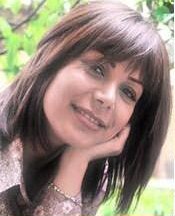
Killing of Neda Agha-Soltan
Neda Agha-Soltan was an Iranian student of philosophy, who was participating in the 2009 Iranian election protests with her music teacher, and was walking back to her car when she was fatally shot in the upper chest.
Iranian student Neda Agha-Soltan was shot dead in Tehran during the presidential election protests; footage of her death was widely distributed over the Internet, making it "probably the most widely witnessed death in human history".

Neda Agha-Soltan was an Iranian student of philosophy, who was participating in the 2009 Iranian election protests with her music teacher, and was walking back to her car when she was fatally shot in the upper chest.

After incumbent president Mahmoud Ahmadinejad declared victory in the 2009 Iranian presidential election, protests broke out in major cities across Iran in support of opposition candidates Mir-Hossein Mousavi and Mehdi Karroubi. The protests continued until 2010, and were titled the Iranian Green Movement by their proponents, reflecting Mousavi's campaign theme, and Persian Awakening, Persian Spring or Green Revolution.

A viral video is a video that becomes popular through a viral process of Internet sharing, typically through video sharing websites such as YouTube as well as social media and email. For a video to be shareable or spreadable, it must focus on the social logics and cultural practices that have enabled and popularized these new platforms, logics that explain why sharing has become such common practice, not just how.
The Wikimedia Foundation is founded in St. Petersburg, Florida.

The Wikimedia Foundation, Inc., or Wikimedia for short and abbreviated as WMF, is an American 501(c)(3) nonprofit organization headquartered in San Francisco, California and registered as a charitable foundation under local laws. Best known as the hosting platform for Wikipedia, a crowdsourced online encyclopedia, it also hosts other related projects and MediaWiki, a wiki software.

St. Petersburg is a city in Pinellas County, Florida, United States. As of the 2020 census, the population was 258,308, making it the fifth-most populous city in Florida and the second-largest city in the Tampa Bay Area, after Tampa. It is the largest city in the state that is not a county seat. Along with Clearwater, these cities are part of the Tampa–St. Petersburg–Clearwater Metropolitan Statistical Area, the second-largest in Florida with a population of around 2.8 million. St. Petersburg is on the Pinellas peninsula between Tampa Bay and the Gulf of Mexico, and is connected to mainland Florida to the north.
A bomb explosion in the Imam Reza shrine in Mashhad, Iran, left at least 25 dead and more than 70 injured.

A bomb explosion occurred at the shrine of Ali al-Ridha, the eighth Imam of Shia, on 20 June 1994 in a crowded prayer hall in Mashhad, Iran. To maximize the number of casualties, the explosion took place on Ashura, one of the holiest days for Shia muslims, when hundreds of pilgrims had gathered to commemorate the death of their third Imam, Husayn ibn Ali.

The Imam Reza shrine in Mashhad, Iran, is a complex which contains the mausoleum of Imam Reza, the eighth Imam of Twelver Shias. It is the largest mosque in the world by area. Also contained within the complex are the Goharshad Mosque, a museum, a library, four seminaries, a cemetery, the Razavi University of Islamic Sciences, a dining hall for pilgrims, vast prayer halls, and other buildings.

Mashhad, also spelled Mashad, is the second-most-populous city in Iran, located in the relatively remote north-east of the country about 900 kilometres from Tehran. It serves as the capital of Razavi Khorasan Province and has a population of 3,001,184, which includes the areas of Mashhad Taman and Torqabeh.
The 1994 Imam Reza shrine bomb explosion in Iran leaves at least 25 dead and 70 to 300 injured.

A bomb explosion occurred at the shrine of Ali al-Ridha, the eighth Imam of Shia, on 20 June 1994 in a crowded prayer hall in Mashhad, Iran. To maximize the number of casualties, the explosion took place on Ashura, one of the holiest days for Shia muslims, when hundreds of pilgrims had gathered to commemorate the death of their third Imam, Husayn ibn Ali.

Iran, officially the Islamic Republic of Iran, and also called Persia, is a country in Western Asia. It is bordered by Iraq and Turkey to the west, by Azerbaijan and Armenia to the northwest, by the Caspian Sea and Turkmenistan to the north, by Afghanistan and Pakistan to the east, and by the Gulf of Oman and the Persian Gulf to the south. It covers an area of 1.64 million square kilometres, making it the 17th-largest country. Iran has a population of 86 million, making it the 17th-most populous country in the world, and the second-largest in the Middle East. Its largest cities, in descending order, are the capital Tehran, Mashhad, Isfahan, Karaj, Shiraz, and Tabriz.
The German Bundestag votes to move seat of government from the former West German capital of Bonn to the present capital of Berlin.

The Bundestag is the German federal parliament. It is the only federal representative body that is directly elected by the German people. It is comparable to the United States House of Representatives or the House of Commons of the United Kingdom. The Bundestag was established by Title III of the Basic Law for the Federal Republic of Germany in 1949 as one of the legislative bodies of Germany and thus it is the historical successor to the earlier Reichstag.
The capital decision was the decision made by the German Bundestag on 20 June 1991, as a result of German reunification, to move its headquarters from Bonn to Berlin. The term is misleading, since Berlin had already become the federal capital of the Federal Republic of Germany in 1990 as one of the stipulations of the Unification Treaty.

West Germany is the common English name for the Federal Republic of Germany between its formation on 23 May 1949 and the German reunification through the accession of East Germany on 3 October 1990. During the Cold War, the western portion of Germany and the associated territory of West Berlin were parts of the Western Bloc. West Germany was formed as a political entity during the Allied occupation of Germany after World War II, established from eleven states formed in the three Allied zones of occupation/Trizone held by the United States, the United Kingdom, and France. The FRG's provisional capital was the city of Bonn, and the Cold War era country is retrospectively designated as the Bonn Republic.

The federal city of Bonn is a city on the banks of the Rhine in the German state of North Rhine-Westphalia, with a population of over 300,000. About 24 km (15 mi) south-southeast of Cologne, Bonn is in the southernmost part of the Rhine-Ruhr region, Germany's largest metropolitan area, with over 11 million inhabitants. It is a university city and the birthplace of Ludwig van Beethoven.
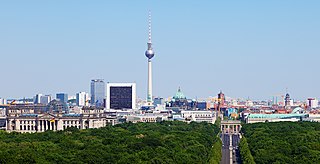
Berlin is the capital and largest city of Germany by both area and population. Its 3.6 million inhabitants make it the European Union's most populous city, according to population within city limits. One of Germany's sixteen constituent states, Berlin is surrounded by the State of Brandenburg and contiguous with Potsdam, Brandenburg's capital. Berlin's urban area, which has a population of around 4.5 million, is the second most populous urban area in Germany after the Ruhr. The Berlin-Brandenburg capital region has around 6.2 million inhabitants and is Germany's third-largest metropolitan region after the Rhine-Ruhr and Rhine-Main regions.
Asteroid Eureka is discovered.

An asteroid is a minor planet of the inner Solar System. Sizes and shapes of asteroids vary significantly, ranging from 1-meter rocks to a dwarf planet almost 1000 km in diameter; they are rocky, metallic or icy bodies with no atmosphere.

5261 Eureka is the first Mars trojan discovered. It was discovered by David H. Levy and Henry Holt at Palomar Observatory on 20 June 1990. It trails Mars (at the L5 point) at a distance varying by only 0.3 AU during each revolution (with a secular trend superimposed, changing the distance from 1.5–1.8 AU around 1850 to 1.3–1.6 AU around 2400). Minimum distances from Earth, Venus, and Jupiter, are 0.5, 0.8, and 3.5 AU, respectively.
The 7.4 Mw Manjil–Rudbar earthquake affects northern Iran with a maximum Mercalli intensity of X (Extreme), killing 35,000–50,000, and injuring 60,000–105,000.

The 1990 Manjil–Rudbar earthquake occurred on Thursday, June 21, 1990 at 00:30:14 local time in northern Iran. The shock had a moment magnitude of 7.4 and a Mercalli Intensity of X (Extreme).

Iran, officially the Islamic Republic of Iran, and also called Persia, is a country in Western Asia. It is bordered by Iraq and Turkey to the west, by Azerbaijan and Armenia to the northwest, by the Caspian Sea and Turkmenistan to the north, by Afghanistan and Pakistan to the east, and by the Gulf of Oman and the Persian Gulf to the south. It covers an area of 1.64 million square kilometres, making it the 17th-largest country. Iran has a population of 86 million, making it the 17th-most populous country in the world, and the second-largest in the Middle East. Its largest cities, in descending order, are the capital Tehran, Mashhad, Isfahan, Karaj, Shiraz, and Tabriz.
The Modified Mercalli intensity scale, developed from Giuseppe Mercalli's Mercalli intensity scale of 1902, is a seismic intensity scale used for measuring the intensity of shaking produced by an earthquake. It measures the effects of an earthquake at a given location, distinguished from the earthquake's inherent force or strength as measured by seismic magnitude scales. While shaking is caused by the seismic energy released by an earthquake, earthquakes differ in how much of their energy is radiated as seismic waves. Deeper earthquakes also have less interaction with the surface, and their energy is spread out across a larger volume. Shaking intensity is localized, generally diminishing with distance from the earthquake's epicenter, but can be amplified in sedimentary basins and certain kinds of unconsolidated soils.
The International Conference on the Holocaust and Genocide, the first major conference in genocide studies, opened despite Turkish attempts to cancel it due to the inclusion of presentations on the Armenian genocide.
The International Conference on the Holocaust and Genocide was the first major conference in the field of genocide studies, held in Tel Aviv on 20–24 June 1982. It was organized by Israel Charny, Elie Wiesel, Shamai Davidson, and their Institute on the Holocaust and Genocide, founded in 1979. The conference's objective was to further the understanding and prevention of all genocides; it marked the shift from viewing genocide as an irrational phenomenon to one that could be studied and understood.
Genocide studies is an academic field of study that researches genocide. Genocide became a field of study in the mid-1940s, with the work of Raphael Lemkin, who coined genocide and started genocide research, and its primary subjects were the Armenian genocide and the Holocaust; the Holocaust was the primary subject matter of genocide studies, starting off as a side field of Holocaust studies, and the field received an extra impetus in the 1990s, when the Rwandan genocide occurred. It received further attraction in the 2010s through the formation of a gender field.

The Armenian genocide was the systematic destruction of the Armenian people and identity in the Ottoman Empire during World War I. Spearheaded by the ruling Committee of Union and Progress (CUP), it was implemented primarily through the mass murder of around one million Armenians during death marches to the Syrian Desert and the forced Islamization of Armenian women and children.
The International Conference on the Holocaust and Genocide opens in Tel Aviv, despite attempts by the Turkish government to cancel it, as it included presentations on the Armenian genocide.
The International Conference on the Holocaust and Genocide was the first major conference in the field of genocide studies, held in Tel Aviv on 20–24 June 1982. It was organized by Israel Charny, Elie Wiesel, Shamai Davidson, and their Institute on the Holocaust and Genocide, founded in 1979. The conference's objective was to further the understanding and prevention of all genocides; it marked the shift from viewing genocide as an irrational phenomenon to one that could be studied and understood.

Tel Aviv-Yafo, often referred to as just Tel Aviv, is the most populous city in the Gush Dan metropolitan area of Israel. Located on the Israeli Mediterranean coastline and with a population of 460,613, it is the economic and technological center of the country. If East Jerusalem is considered part of Israel, Tel Aviv is the country's second most populous city after Jerusalem; if not, Tel Aviv is the most populous city ahead of West Jerusalem.

The Armenian genocide was the systematic destruction of the Armenian people and identity in the Ottoman Empire during World War I. Spearheaded by the ruling Committee of Union and Progress (CUP), it was implemented primarily through the mass murder of around one million Armenians during death marches to the Syrian Desert and the forced Islamization of Armenian women and children.
The Argentine Corbeta Uruguay base on Southern Thule surrenders to Royal Marine commandos in the final action of the Falklands War.

Corbeta Uruguay base was an Argentine military outpost established in November 1976 on Thule Island, Southern Thule, in the South Sandwich Islands. It was vacated and mostly demolished in 1982 following Britain's victory against Argentina in the Falklands War.
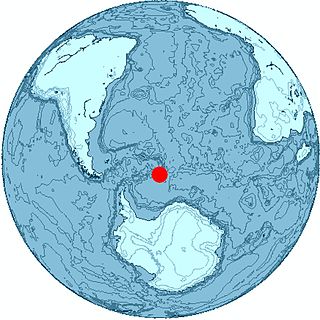
Southern Thule is a collection of the three southernmost islands in the South Sandwich Islands: Bellingshausen, Cook, and Thule (Morrell). The island group is barren, windswept, bitterly cold, and uninhabited. It has an extensive exclusive economic zone rich in marine living resources managed as part of the SGSSI fisheries. The Admiralty's Antarctic Pilot says that Southern Thule is part of an old sunken volcano, and is covered with ash and penguin guano. There are seals, petrels, and a bank of kelp just offshore, especially around a small inlet on Morrell called Ferguson Bay.

The Falklands War was a ten-week undeclared war between Argentina and the United Kingdom in 1982 over two British dependent territories in the South Atlantic: the Falkland Islands and its territorial dependency, South Georgia and the South Sandwich Islands.
Bill Stewart, an American journalist, was executed by Nicaraguan Guardia forces.
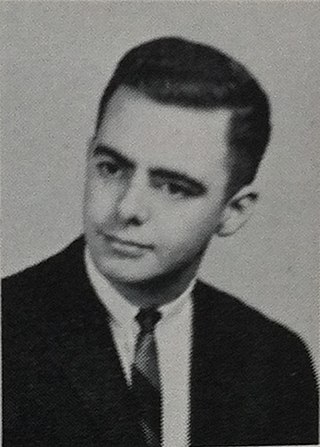
William D. "Bill" Stewart was an American journalist with ABC News who was murdered by Nicaraguan government National Guard ("Guardia") forces while reporting on the Nicaraguan Revolution as Sandinista rebel forces were closing in on the capital city of Managua in 1979. Footage of his execution was repeatedly broadcast on network television, resulting in an uproar in the United States against the Somoza regime.
The National Guard was a militia and a gendarmerie created in 1925 during the occupation of Nicaragua by the United States. It became notorious for human rights abuses and corruption under the regime of the Somoza family (1936–1979). The National Guard was disbanded when the Sandinistas came to power in 1979.
ABC News correspondent Bill Stewart is shot dead by a Nicaraguan National Guard soldier under the regime of Anastasio Somoza Debayle during the Nicaraguan Revolution. The murder is caught on tape and sparks an international outcry against the regime.

ABC News is the news division of the American broadcast network ABC. Its flagship program is the daily evening newscast ABC World News Tonight with David Muir; other programs include morning news-talk show Good Morning America, Nightline, Primetime, and 20/20, and Sunday morning political affairs program This Week with George Stephanopoulos.

William D. "Bill" Stewart was an American journalist with ABC News who was murdered by Nicaraguan government National Guard ("Guardia") forces while reporting on the Nicaraguan Revolution as Sandinista rebel forces were closing in on the capital city of Managua in 1979. Footage of his execution was repeatedly broadcast on network television, resulting in an uproar in the United States against the Somoza regime.
The National Guard was a militia and a gendarmerie created in 1925 during the occupation of Nicaragua by the United States. It became notorious for human rights abuses and corruption under the regime of the Somoza family (1936–1979). The National Guard was disbanded when the Sandinistas came to power in 1979.
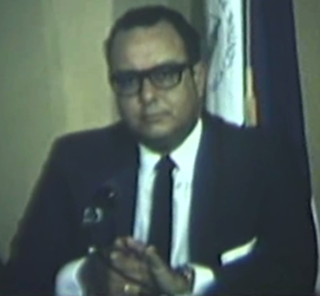
Anastasio "Tachito" Somoza Debayle was the President of Nicaragua from 1 May 1967 to 1 May 1972 and from 1 December 1974 to 17 July 1979. As head of the National Guard, he was de facto ruler of the country between 1972 and 1974, even during the period when he was not the de jure ruler.

The Nicaraguan Revolution encompassed the rising opposition to the Somoza dictatorship in the 1960s and 1970s, the campaign led by the Sandinista National Liberation Front (FSLN) to oust the dictatorship in 1978–79, the subsequent efforts of the FSLN to govern Nicaragua from 1979 to 1990, and the Contra War, which was waged between the FSLN-led government of Nicaragua and the United States–backed Contras from 1981 to 1990. The revolution marked a significant period in the history of Nicaragua and revealed the country as one of the major proxy war battlegrounds of the Cold War, attracting much international attention.
Steven Spielberg's film Jaws was released, which became the prototypical summer blockbuster and established the modern Hollywood business model.

Steven Allan Spielberg is an American director, writer, and producer. A major figure of the New Hollywood era and pioneer of the modern blockbuster, he is the most commercially successful director of all time. Spielberg is the recipient of various accolades, including three Academy Awards, a Kennedy Center honor, a Cecil B. DeMille Award, and an AFI Life Achievement Award. Seven of his films been inducted into the National Film Registry by the Library of Congress.

Jaws is a 1975 American thriller film directed by Steven Spielberg, based on the 1974 novel by Peter Benchley. It stars Roy Scheider as police chief Martin Brody, who, with the help of a marine biologist and a professional shark hunter, hunts a man-eating great white shark that attacks beachgoers at a summer resort town. Murray Hamilton plays the mayor, and Lorraine Gary portrays Brody's wife. The screenplay is credited to Benchley, who wrote the first drafts, and actor-writer Carl Gottlieb, who rewrote the script during principal photography.

A blockbuster is a work of entertainment—typically used to describe a feature film produced by a major film studio, but also other media—that is highly popular and financially successful. The term has also come to refer to any large-budget production intended for "blockbuster" status, aimed at mass markets with associated merchandising, sometimes on a scale that meant the financial fortunes of a film studio or a distributor could depend on it. The term originated from the Blockbuster bomb which were used in World War II.
The film Jaws is released in the United States, becoming the highest-grossing film of that time and starting the trend of films known as "summer blockbusters".

Jaws is a 1975 American thriller film directed by Steven Spielberg, based on the 1974 novel by Peter Benchley. It stars Roy Scheider as police chief Martin Brody, who, with the help of a marine biologist and a professional shark hunter, hunts a man-eating great white shark that attacks beachgoers at a summer resort town. Murray Hamilton plays the mayor, and Lorraine Gary portrays Brody's wife. The screenplay is credited to Benchley, who wrote the first drafts, and actor-writer Carl Gottlieb, who rewrote the script during principal photography.

A blockbuster is a work of entertainment—typically used to describe a feature film produced by a major film studio, but also other media—that is highly popular and financially successful. The term has also come to refer to any large-budget production intended for "blockbuster" status, aimed at mass markets with associated merchandising, sometimes on a scale that meant the financial fortunes of a film studio or a distributor could depend on it. The term originated from the Blockbuster bomb which were used in World War II.
Snipers fire upon left-wing Peronists in Buenos Aires, Argentina, in what is known as the Ezeiza massacre. At least 13 are killed and more than 300 are injured.
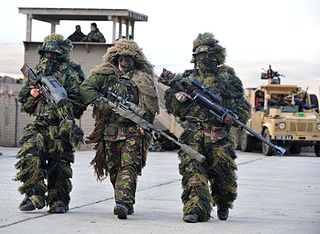
A sniper is a military/paramilitary marksman who engages targets from positions of concealment or at distances exceeding the target's detection capabilities. Snipers generally have specialized training and are equipped with high-precision rifles and high-magnification optics, and often also serve as scouts/observers feeding tactical information back to their units or command headquarters.

Peronism, also called justicialism, is an Argentine political movement based on the ideas and legacy of Argentine ruler Juan Perón (1895–1974). It has been an influential movement in 20th and 21st century Argentine politics. Since 1946, Peronists have won 10 out of the 13 presidential elections in which they have been allowed to run. The main Peronist party is the Justicialist Party. The policies of Peronist presidents have differed greatly, but the general ideology has been described as "a vague blend of nationalism and labourism" or populism.

Buenos Aires, officially the Autonomous City of Buenos Aires, is the capital and primate city of Argentina. The city is located on the western shore of the Río de la Plata, on South America's southeastern coast. "Buenos Aires" can be translated as "fair winds" or "good airs", but the former was the meaning intended by the founders in the 16th century, by the use of the original name "Real de Nuestra Señora Santa María del Buen Ayre", named after the Madonna of Bonaria in Sardinia, Italy. Buenos Aires is classified as an alpha global city, according to the Globalization and World Cities Research Network (GaWC) 2020 ranking.

Argentina, officially the Argentine Republic, is a country in the southern half of South America. Argentina covers an area of 2,780,400 km2 (1,073,500 sq mi), making it the second-largest country in South America after Brazil, the fourth-largest country in the Americas, and the eighth-largest country in the world. It shares the bulk of the Southern Cone with Chile to the west, and is also bordered by Bolivia and Paraguay to the north, Brazil to the northeast, Uruguay and the South Atlantic Ocean to the east, and the Drake Passage to the south. Argentina is a federal state subdivided into twenty-three provinces, and one autonomous city, which is the federal capital and largest city of the nation, Buenos Aires. The provinces and the capital have their own constitutions, but exist under a federal system. Argentina claims sovereignty over the Falkland Islands, South Georgia and the South Sandwich Islands, and a part of Antarctica.

The Ezeiza massacre took place on June 20, 1973, at Puente 12, the intersection of General Ricchieri freeway and Camino de Cintura, some 10 km from Ezeiza International Airport in Buenos Aires, Argentina.
Aeroméxico Flight 229 crashes on approach to Licenciado Gustavo Díaz Ordaz International Airport, killing all 27 people on board.

Aeroméxico Flight 229 was a McDonnell Douglas DC-9 that crashed into the side of a mountain while on approach to Licenciado Gustavo Díaz Ordaz International Airport in Puerto Vallarta, Mexico, on 20 June 1973. There were no survivors among the 27 passengers and crew.

Licenciado Gustavo Díaz Ordaz International Airport is an international airport in Puerto Vallarta, Jalisco, Mexico. The airport is named after President Gustavo Díaz Ordaz (1964–70), and had a total of 2.53 million passengers during 2020 and 4.1 million during 2021. It is listed as the 7th busiest airport in Mexico in terms of passenger movement for the 2010s decade.
Watergate scandal: An 18½-minute gap appears in the tape recording of the conversations between U.S. President Richard Nixon and his advisers regarding the recent arrests of his operatives while breaking into the Watergate complex.

The Watergate scandal was a major political scandal in the United States involving the administration of President Richard Nixon from 1972 to 1974 that led to Nixon's resignation. The scandal stemmed from the Nixon administration's continual attempts to cover up its involvement in the June 17, 1972, break-in of the Democratic National Committee headquarters at the Washington, D.C., Watergate Office Building.
The Nixon White House tapes are audio recordings of conversations between U.S. President Richard Nixon and Nixon administration officials, Nixon family members, and White House staff, produced between 1971 and 1973.

Richard Milhous Nixon was the 37th president of the United States, serving from 1969 to 1974. A member of the Republican Party, he previously served as a representative and senator from California and was the 36th vice president from 1953 to 1961 under President Dwight D. Eisenhower. His five years in the White House saw reduction of U.S. involvement in the Vietnam War, détente with the Soviet Union and China, the first manned Moon landings, and the establishment of the Environmental Protection Agency and Occupational Safety and Health Administration. Nixon's second term ended early, when he became the only president to resign from office, as a result of the Watergate scandal.

The Watergate complex is a group of six buildings in the Foggy Bottom neighborhood of Washington, D.C., in the United States. Covering a total of 10 acres just north of the John F. Kennedy Center for the Performing Arts, the buildings include:Watergate West, cooperative apartments. Watergate 600, office building. Watergate Hotel. Watergate East, cooperative apartments. Watergate South, cooperative apartments. Watergate Office Building, the office building where the Watergate burglary happened.
A Curtiss C-46 Commando crashes in the Shengang District of Taiwan, killing 57 people.
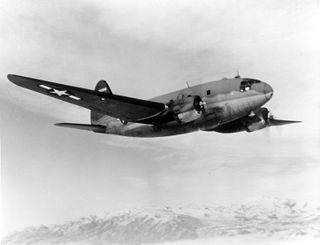
The Curtiss C-46 Commando is a twin-engine transport aircraft derived from the Curtiss CW-20 pressurised high-altitude airliner design. Early press reports used the name "Condor III" but the Commando name was in use by early 1942 in company publicity. It was used as a military transport during World War II by the United States Army Air Forces and also the U.S. Navy/Marine Corps, which called it R5C. The C-46 served in a similar role to its Douglas-built counterpart, the C-47 Skytrain, but it was not as extensively produced as the latter.

Civil Air Transport Flight 106 was a Curtiss C-46D Commando, registration number B-908, that was operated by Civil Air Transport which was a front company operated by the CIA Civil Air Transport. On 20 June 1964, the aircraft crashed near the village of Shenkang, western Taiwan, killing all 57 people aboard.
Following the Cuban Missile Crisis, the Soviet Union and the United States sign an agreement to establish the so-called "red telephone" link between Washington, D.C. and Moscow.

The Cuban Missile Crisis, also known as the October Crisis [of 1962] in Cuba, the Caribbean Crisis in Russia, or the Missile Scare, was a 35-day confrontation between the United States and the Soviet Union, which escalated into an international crisis when American deployments of missiles in Italy and Turkey were matched by Soviet deployments of similar ballistic missiles in Cuba. Despite the short time frame, the Cuban Missile Crisis remains a defining moment in national security and nuclear war preparation. The confrontation is often considered the closest the Cold War came to escalating into a full-scale nuclear war.

The Moscow–Washington hotline is a system that allows direct communication between the leaders of the United States and the Russian Federation. This hotline was established in 1963 and links the Pentagon with the Kremlin. Although in popular culture it is known as the "red telephone", the hotline was never a telephone line, and no red phones were used. The first implementation used Teletype equipment, and shifted to fax machines in 1986. Since 2008, the Moscow–Washington hotline has been a secure computer link over which messages are exchanged by a secure form of email.

Washington, D.C., formally the District of Columbia, also known as just Washington or simply D.C., is the capital city and federal district of the United States. It is located on the east bank of the Potomac River, which forms its southwestern and southern border with the U.S. state of Virginia, and it shares a land border with the U.S. state of Maryland on its other sides. The city was named for George Washington, a Founding Father and the first president of the United States, and the federal district is named after Columbia, the female personification of the nation. As the seat of the U.S. federal government and several international organizations, the city is an important world political capital. It is one of the most visited cities in the U.S. with over 20 million annual visitors as of 2016.

Moscow is the capital and largest city of Russia. The city stands on the Moskva River in Central Russia, with a population estimated at 13.0 million residents within the city limits, over 17 million residents in the urban area, and over 20 million residents in the metropolitan area. The city covers an area of 2,511 square kilometers (970 sq mi), while the urban area covers 5,891 square kilometers (2,275 sq mi), and the metropolitan area covers over 26,000 square kilometers (10,000 sq mi). Moscow is among the world's largest cities; being the most populous city entirely in Europe, the largest urban and metropolitan area in Europe, and the largest city by land area on the European continent.
The Mali Federation gained independence from France, but dissolved into Mali and Senegal two months later.
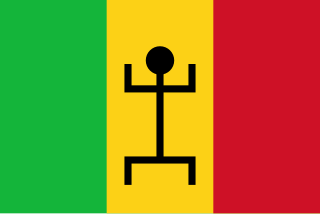
The Mali Federation was a federation in West Africa linking the French colonies of Senegal and the Sudanese Republic for two months in 1960. It was founded on 4 April 1959 as a territory with self-rule within the French Community and became independent after negotiations with France on 20 June 1960. Two months later, on 19 August 1960, the Sudanese Republic leaders in the Mali Federation mobilized the army, and Senegal leaders in the federation retaliated by mobilizing the gendarmerie ; this resulted in a tense stand-off, and led to the withdrawal from the federation by Senegal the next day. The Sudanese Republic officials resisted this dissolution, cut off diplomatic relations with Senegal, and defiantly changed the name of their country to Mali. For the brief existence of the Mali Federation, the premier was Modibo Keïta, who would later become the first President of Mali, and its government was based in Dakar, the eventual capital of Senegal.
The Mali Federation gains independence from France (it later splits into Mali and Senegal).

The Mali Federation was a federation in West Africa linking the French colonies of Senegal and the Sudanese Republic for two months in 1960. It was founded on 4 April 1959 as a territory with self-rule within the French Community and became independent after negotiations with France on 20 June 1960. Two months later, on 19 August 1960, the Sudanese Republic leaders in the Mali Federation mobilized the army, and Senegal leaders in the federation retaliated by mobilizing the gendarmerie ; this resulted in a tense stand-off, and led to the withdrawal from the federation by Senegal the next day. The Sudanese Republic officials resisted this dissolution, cut off diplomatic relations with Senegal, and defiantly changed the name of their country to Mali. For the brief existence of the Mali Federation, the premier was Modibo Keïta, who would later become the first President of Mali, and its government was based in Dakar, the eventual capital of Senegal.
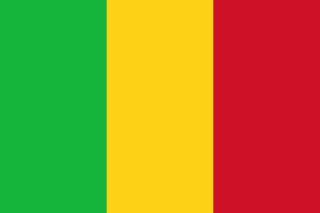
Mali, officially the Republic of Mali, is a landlocked country in West Africa. Mali is the eighth-largest country in Africa, with an area of over 1,240,000 square kilometres (480,000 sq mi). The population of Mali is 21.9 million. 67% of its population was estimated to be under the age of 25 in 2017. Its capital and largest city is Bamako. The sovereign state of Mali consists of eight regions and its borders on the north reach deep into the middle of the Sahara Desert. The country's southern part is in the Sudanian savanna, where the majority of inhabitants live, and both the Niger and Senegal rivers pass through. The country's economy centres on agriculture and mining. One of Mali's most prominent natural resources is gold, and the country is the third largest producer of gold on the African continent. It also exports salt.

Senegal, officially the Republic of Senegal, is a country in West Africa, on the Atlantic Ocean coastline. Senegal is bordered by Mauritania to the north, Mali to the east, Guinea to the southeast and Guinea-Bissau to the southwest. Senegal nearly surrounds the Gambia, a country occupying a narrow sliver of land along the banks of the Gambia River, which separates Senegal's southern region of Casamance from the rest of the country. Senegal also shares a maritime border with Cape Verde. Senegal's economic and political capital is Dakar.
The extratropical remnants of an Atlantic hurricane reached the Gulf of St. Lawrence, Canada, causing 22 fishing boats to capsize and killing 35 people.
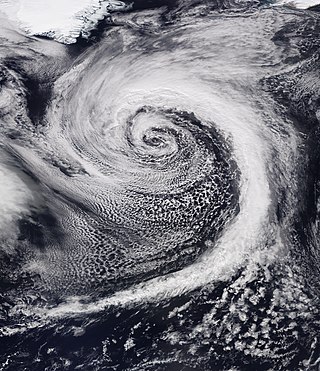
Extratropical cyclones, sometimes called mid-latitude cyclones or wave cyclones, are low-pressure areas which, along with the anticyclones of high-pressure areas, drive the weather over much of the Earth. Extratropical cyclones are capable of producing anything from cloudiness and mild showers to severe gales, thunderstorms, blizzards, and tornadoes. These types of cyclones are defined as large scale (synoptic) low pressure weather systems that occur in the middle latitudes of the Earth. In contrast with tropical cyclones, extratropical cyclones produce rapid changes in temperature and dew point along broad lines, called weather fronts, about the center of the cyclone.

An Atlantic hurricane, also known as tropical storm or simply hurricane, is a tropical cyclone that forms in the Atlantic Ocean, primarily between the months of June and November. A hurricane differs from a cyclone or typhoon only on the basis of location. A hurricane is a storm that occurs in the Atlantic Ocean and northeastern Pacific Ocean, a typhoon occurs in the northwestern Pacific Ocean, and a cyclone occurs in the South Pacific Ocean or Indian Ocean.

The Gulf of St. Lawrence is the outlet of the North American Great Lakes via the St. Lawrence River into the Atlantic Ocean. The gulf is a semi-enclosed sea, covering an area of about 226,000 square kilometres (87,000 sq mi) and containing about 34,500 cubic kilometres (8,300 cu mi) of water, at an average depth of 152 metres (500 ft).
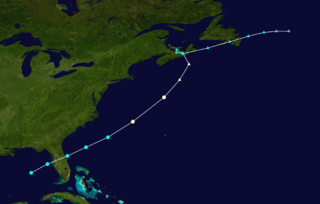
The 1959 Escuminac disaster was considered the worst fishing-related disaster in New Brunswick in 100 years. It occurred due to the extratropical remnants of an Atlantic hurricane. The storm was the third tropical cyclone and first hurricane of the 1959 Atlantic hurricane season, and developed from a tropical wave in the central Gulf of Mexico on June 18. It headed rapidly northeastward and struck Florida later that day. Shortly after entering the Atlantic Ocean, it strengthened into a tropical storm later on June 18. By the following day, it had strengthened into a hurricane. However, it transitioned into an extratropical cyclone about six hours later. The remnants struck Atlantic Canada, once in Nova Scotia and again in Newfoundland before dissipating on June 21.
A rare June hurricane strikes Canada's Gulf of St. Lawrence killing 35.

The 1959 Escuminac disaster was considered the worst fishing-related disaster in New Brunswick in 100 years. It occurred due to the extratropical remnants of an Atlantic hurricane. The storm was the third tropical cyclone and first hurricane of the 1959 Atlantic hurricane season, and developed from a tropical wave in the central Gulf of Mexico on June 18. It headed rapidly northeastward and struck Florida later that day. Shortly after entering the Atlantic Ocean, it strengthened into a tropical storm later on June 18. By the following day, it had strengthened into a hurricane. However, it transitioned into an extratropical cyclone about six hours later. The remnants struck Atlantic Canada, once in Nova Scotia and again in Newfoundland before dissipating on June 21.

The Gulf of St. Lawrence is the outlet of the North American Great Lakes via the St. Lawrence River into the Atlantic Ocean. The gulf is a semi-enclosed sea, covering an area of about 226,000 square kilometres (87,000 sq mi) and containing about 34,500 cubic kilometres (8,300 cu mi) of water, at an average depth of 152 metres (500 ft).
A Venezuelan Super-Constellation crashes in the Atlantic Ocean off Asbury Park, New Jersey, killing 74 people.

Venezuela, officially the Bolivarian Republic of Venezuela, is a country on the northern coast of South America, consisting of a continental landmass and many islands and islets in the Caribbean Sea. It has a territorial extension of 916,445 km2 (353,841 sq mi), and its population was estimated at 29 million in 2022. The capital and largest urban agglomeration is the city of Caracas.

The Lockheed Constellation ("Connie") is a propeller-driven, four-engined airliner built by Lockheed Corporation starting in 1943. The Constellation series was the first pressurized-cabin civil airliner series to go into widespread use. Its pressurized cabin enabled commercial passengers to fly well above most bad weather for the first time, thus significantly improving the general safety and ease of air travel.

Linea Aeropostal Venezolana Flight 253 was a regularly scheduled passenger flight from Idlewild International Airport, New York to Caracas International Airport in Caracas, Venezuela. During the 20 June 1956 operation of the flight, approximately one hour and twenty minutes after departure, the flight crew reported trouble with one of the engines and turned back to New York. While dumping fuel in preparation for landing, the airplane, a Lockheed L-1049 Super Constellation, caught fire and plummeted into the Atlantic Ocean off Asbury Park, New Jersey. All 74 aboard were killed; at the time, it was the world's deadliest disaster involving a scheduled commercial flight. However, its death toll would be surpassed only ten days later.
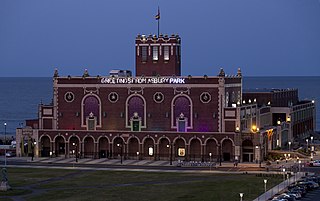
Asbury Park is a beachfront city located on the Jersey Shore in Monmouth County in the U.S. state of New Jersey. It is part of the New York metropolitan area.
The Deutsche Mark is introduced in Western Allied-occupied Germany. The Soviet Military Administration in Germany responded by imposing the Berlin Blockade four days later.

The Deutsche Mark, abbreviated "DM" or "D-Mark", was the official currency of West Germany from 1948 until 1990 and later the unified Germany from 1990 until the adoption of the euro in 2002. In English, it was typically called the "Deutschmark". One Deutsche Mark was divided into 100 pfennigs.

Germany was already de facto occupied by the Allies from the real fall of Nazi Germany in World War II on 8 May 1945 to the establishment of the East Germany on 7 October 1949. The Allies asserted joint authority and sovereignty at the 1945 Berlin Declaration. At first, defining Allied-occupied Germany as all territories of the former German Reich before Nazi annexing Austria; however later in the 1945 Potsdam Conference of Allies, the Potsdam Agreement decided the new German border as it stands today. Said border gave Poland and the Soviet Union all regions of Germany east of the Oder–Neisse line and divided the remaining "Germany as a whole" into the four occupation zones for administrative purposes under the three Western Allies and the Soviet Union. Although the three of Allies agreed about the occupation and division in Germany in the legal protocol in London 1944 before, the four occupied zones with new border of Germany were only agreed by 3 Allies at the February 1945 Yalta Conference.
The Soviet Military Administration in Germany was the Soviet military government, headquartered in Berlin-Karlshorst, that directly ruled the Soviet occupation zone of Germany from the German surrender in May 1945 until after the establishment of the German Democratic Republic (GDR) in October 1949.

The Berlin Blockade was one of the first major international crises of the Cold War. During the multinational occupation of post–World War II Germany, the Soviet Union blocked the Western Allies' railway, road, and canal access to the sectors of Berlin under Western control. The Soviets offered to drop the blockade if the Western Allies withdrew the newly introduced Deutsche Mark from West Berlin.
A Mafia hitman murdered gangster Bugsy Siegel, one of the driving forces in the development of the Las Vegas Strip, in Beverly Hills, California.
"Mafia" is an informal term that is used to describe criminal organizations that bear a strong similarity to the Italian Mafia. The central activity of such an organization would be the arbitration of disputes between criminals as well as the organization and enforcement of illicit agreements between criminals through the use of or threat of violence. Mafias often engage in secondary activities such as gambling, loan sharking, drug-trafficking, prostitution, and fraud.

Benjamin "Bugsy" Siegel was an American mobster who was a driving force behind the development of the Las Vegas Strip. Siegel was not only influential within the Jewish Mob, but along with his childhood friend and fellow gangster Meyer Lansky, also held significant influence within the Italian-American Mafia and the largely Italian-Jewish National Crime Syndicate. Described as handsome and charismatic, he became one of the first front-page celebrity gangsters.

The Las Vegas Strip is a stretch of Las Vegas Boulevard South in Clark County, Nevada, that is known for its concentration of resort hotels and casinos. The Strip, as it is known, is about 4.2 mi (6.8 km) long, and is immediately south of the Las Vegas city limits in the unincorporated towns of Paradise and Winchester, but is often referred to simply as "Las Vegas".

Beverly Hills is a city located in Los Angeles County, California. A notable and historic suburb of Greater Los Angeles, it is in a wealthy area immediately southwest of the Hollywood Hills, approximately 12.2 miles (19.6 km) northwest of downtown Los Angeles. Beverly Hills' land area totals to 5.71 square miles (14.8 km2), and along with the smaller city of West Hollywood in the east, is almost entirely surrounded by the city of Los Angeles. According to the 2020 census, the city has a population of 32,701; marking a decrease of 1,408 from the 2010 census count of 34,109.
The United States Secretary of State approves the transfer of Wernher von Braun and his team of Nazi rocket scientists to the U.S. under Operation Paperclip.

The United States secretary of state is a member of the executive branch of the federal government of the United States and the head of the U.S. Department of State. The office holder is one of the highest ranking members of the president's Cabinet, and ranks the first in the U.S. presidential line of succession among Cabinet secretaries.

Wernher Magnus Maximilian Freiherr von Braun was a German-American aerospace engineer and space architect. He was a member of the Nazi Party and Allgemeine SS, as well as the leading figure in the development of rocket technology in Nazi Germany and later a pioneer of rocket and space technology in the United States.

Operation Paperclip was a secret United States intelligence program in which more than 1,600 German scientists, engineers, and technicians were taken from the former Nazi Germany to the U.S. for government employment after the end of World War II in Europe, between 1945 and 1959. Conducted by the Joint Intelligence Objectives Agency (JIOA), it was largely carried out by special agents of the U.S. Army's Counterintelligence Corps (CIC). Many of these personnel were former members and some were former leaders of the Nazi Party.
World War II: The Battle of the Philippine Sea concludes with a decisive U.S. naval victory. The lopsided naval air battle is also known as the "Great Marianas Turkey Shoot".

The Battle of the Philippine Sea was a major naval battle of World War II that eliminated the Imperial Japanese Navy's ability to conduct large-scale carrier actions. It took place during the United States' amphibious invasion of the Mariana Islands during the Pacific War. The battle was the last of five major "carrier-versus-carrier" engagements between American and Japanese naval forces, and pitted elements of the United States Navy's Fifth Fleet against ships and aircraft of the Imperial Japanese Navy's Mobile Fleet and nearby island garrisons. This was the largest carrier-to-carrier battle in history, involving 24 aircraft carriers, deploying roughly 1,350 carrier-based aircraft.
Continuation War: The Soviet Union demands an unconditional surrender from Finland during the beginning of partially successful Vyborg–Petrozavodsk Offensive. The Finnish government refuses.

The Continuation War, also known as the Second Soviet-Finnish War, was a conflict fought by Finland and Nazi Germany against the Soviet Union from 1941 to 1944, as part of World War II. In Soviet historiography, the war was called the Finnish Front of the Great Patriotic War. Germany regarded its operations in the region as part of its overall war efforts on the Eastern Front and provided Finland with critical material support and military assistance, including economic aid.

The Soviet Union, officially the Union of Soviet Socialist Republics (USSR), was a transcontinental country that spanned much of Eurasia from 1922 to 1991. A flagship communist state, it was nominally a federal union of fifteen national republics; in practice, both its government and its economy were highly centralized until its final years. It was a one-party state governed by the Communist Party of the Soviet Union, with the city of Moscow serving as its capital as well as that of its largest and most populous republic: the Russian SFSR. Other major cities included Leningrad, Kiev, Minsk, Tashkent, Alma-Ata, and Novosibirsk. It was the largest country in the world, covering over 22,402,200 square kilometres (8,649,500 sq mi) and spanning eleven time zones.

The Vyborg–Petrozavodsk offensive or Karelian offensive was a strategic operation by the Soviet Leningrad and Karelian Fronts against Finland on the Karelian Isthmus and East Karelia fronts of the Continuation War, on the Eastern Front of World War II. The Soviet forces captured East Karelia and Viborg/Viipuri. After that, however, the fighting reached a stalemate.
The experimental MW 18014 V-2 rocket reaches an altitude of 176 km, becoming the first man-made object to reach outer space.
MW 18014 was a German A-4 test rocket launched on 20 June 1944, at the Peenemünde Army Research Center in Peenemünde. It was the first man-made object to reach outer space, attaining an apogee of 176 kilometers, which is well above the Kármán line. It was a vertical test launch. Although the rocket reached space, it did not reach orbital velocity, and therefore returned to Earth in an impact, becoming the first sub-orbital spaceflight.
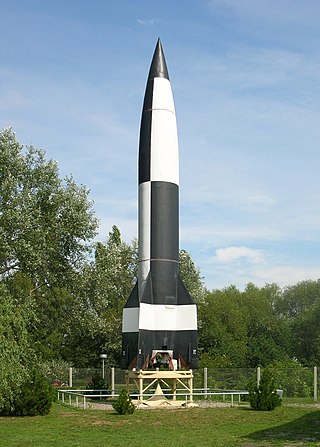
The V-2, with the technical name Aggregat 4 (A-4), was the world’s first long-range guided ballistic missile. The missile, powered by a liquid-propellant rocket engine, was developed during the Second World War in Nazi Germany as a "vengeance weapon" and assigned to attack Allied cities as retaliation for the Allied bombings against German cities. The V-2 rocket also became the first artificial object to travel into space by crossing the Kármán line with the vertical launch of MW 18014 on 20 June 1944.
The Royal Air Force launched Operation Bellicose, the first shuttle-bombing raid of the Second World War.

The Royal Air Force (RAF) is the United Kingdom's air and space force. It was formed towards the end of the First World War on 1 April 1918, becoming the first independent air force in the world, by regrouping the Royal Flying Corps (RFC) and the Royal Naval Air Service (RNAS). Following the Allied victory over the Central Powers in 1918, the RAF emerged as the largest air force in the world at the time. Since its formation, the RAF has taken a significant role in British military history. In particular, it played a large part in the Second World War where it fought its most famous campaign, the Battle of Britain.

Operation Bellicose was an attack by Avro Lancaster bombers of the Royal Air Force on a German radar factory housed in the former Zeppelin Works at Friedrichshafen and the Italian naval base at La Spezia. It was the first shuttle bombing raid in the Second World War and the second use of a Master Bomber. In early June 1943, a Central Interpretation Unit photo interpreter identified a stack of ribbed baskets at the Zeppelin Works. After Winston Churchill viewed the photos at RAF Medmenham on 14 June, No. 5 Group RAF received the surprise orders on 16 June to attack Friedrichshafen during the next full moon.
Shuttle bombing is a tactic where bombers fly from their home base to bomb a first target and continue to a different location where they are refuelled and rearmed. The aircraft may then bomb a second target on the return leg to their home base. Some examples of operations which have used this tactic are:The Doolittle Raid, 18 April 1942: 16 B-25s of the 17th Bombardment Group bombed Tokyo from the USS Hornet, going on to land in various locations in Eastern China. The Battle of Stalingrad, September 1942: Luftflotte 4 of the Luftwaffe employed shuttle bombing tactics during the intense aerial bombardment of the city in the early days of the battle. Operation Bellicose, June 1943: On the night of 20/21 June the RAF bombers departed from their bases in the United Kingdom and bombed Friedrichshafen, landing in Algeria, where they refuelled and rearmed. On the return leg they bombed the Italian naval base at La Spezia. Schweinfurt–Regensburg mission, 17 August 1943: The 4th Bombardment Wing of the Eighth Air Force using B-17s equipped with "Tokyo (fuel) tanks" for longer range, attacked the Messerschmitt Bf 109 plants in Regensburg and then flew on to bases in Bône, Berteaux and Telergma. Most of the aircraft that had been damaged were stranded due to the poor repair facilities in Algeria and some of them were never returned to service. Eight days later, on 24 August, on the way back to their bases in Great Britain, the surviving B-17s bombed targets in Bordeaux. Operation Frantic, from June to September 1944: This was a series of air raids conducted by United States Army Air Forces (USAAF) bombers based in Britain or the Mediterranean which then landed at bases built by the Americans in Ukraine in the Soviet Union. As a military operation it made possible eighteen strong attacks on important strategic targets in Germany which would otherwise have been immune. The Warsaw Airlift, August to September 1944: During the Warsaw Uprising the Frantic airbases were used for an airdrop to the Poles fighting in the city. On 17 September 1944 70 B-17s and 57 P-51s flew without bombs from Italy and landed safely in the United Kingdom. On 18 September 107 of 110 B-17s dropped 1,248 containers of supplies to Polish forces in Warsaw and flew on to the USSR losing one B-17 with seven more damaged. The next day 100 B-17s and 61 P-51s left the USSR and bombed the marshalling yard at Szolnok in Hungary as they returned to bases in Italy. Operation Paravane, September 1944: A variation on the concept. On 11 September 1944 No. 9 Squadron RAF and No. 617 Squadron RAF flew from their home bases in Scotland to a temporary base at Yagodnik, near Archangel in the Soviet Union. From there, on 15 September, they bombed the German battleship Tirpitz in a Norwegian fjord and continued on back to Scotland.
Rioting between blacks and whites began on Belle Isle, Detroit, Michigan, and continued for three days.
The 1943 Detroit race riot took place in Detroit, Michigan, of the United States, from the evening of June 20 through to the early morning of June 22. It occurred in a period of dramatic population increase and social tensions associated with the military buildup of U.S. participation in World War II, as Detroit's automotive industry was converted to the war effort. Existing social tensions and housing shortages were exacerbated by racist feelings about the arrival of nearly 400,000 migrants, both African-American and White Southerners, from the Southeastern United States between 1941 and 1943. The new migrants competed for space and jobs, as well as against European immigrants and their descendants. The riot escalated in the city after a false rumor spread that a mob of whites had thrown a black mother and her baby into the Detroit River. Blacks looted and destroyed white property as retaliation. Whites overran Woodward to Veron where they proceeded to tip over 20 cars that belonged to black families.
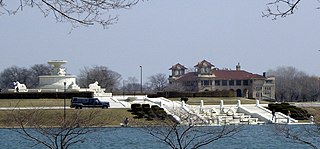
Belle Isle Park, known simply as Belle Isle, is a 982-acre island park in Detroit, Michigan, developed in the late 19th century. It consists of Belle Isle, an island in the Detroit River, as well as several surrounding islets. The U.S.-Canada border is in the channel south of Belle Isle.

Detroit is the largest city in the U.S. state of Michigan. It is also the largest U.S. city on the United States–Canada border, and the seat of government of Wayne County. The City of Detroit had a population of 639,111 at the 2020 census, making it the 27th-most populous city in the United States. The metropolitan area, known as Metro Detroit, is home to 4.3 million people, making it the second-largest in the Midwest after the Chicago metropolitan area, and the 14th-largest in the United States. Regarded as a major cultural center, Detroit is known for its contributions to music, art, architecture and design, in addition to its historical automotive background. Time named Detroit as one of the fifty World's Greatest Places of 2022 to explore.
The Detroit race riot breaks out and continues for three more days.
The 1943 Detroit race riot took place in Detroit, Michigan, of the United States, from the evening of June 20 through to the early morning of June 22. It occurred in a period of dramatic population increase and social tensions associated with the military buildup of U.S. participation in World War II, as Detroit's automotive industry was converted to the war effort. Existing social tensions and housing shortages were exacerbated by racist feelings about the arrival of nearly 400,000 migrants, both African-American and White Southerners, from the Southeastern United States between 1941 and 1943. The new migrants competed for space and jobs, as well as against European immigrants and their descendants. The riot escalated in the city after a false rumor spread that a mob of whites had thrown a black mother and her baby into the Detroit River. Blacks looted and destroyed white property as retaliation. Whites overran Woodward to Veron where they proceeded to tip over 20 cars that belonged to black families.
World War II: The Royal Air Force launches Operation Bellicose, the first shuttle bombing raid of the war. Avro Lancaster bombers damage the V-2 rocket production facilities at the Zeppelin Works while en route to an air base in Algeria.

World War II or the Second World War, often abbreviated as WWII or WW2, was a world war that lasted from 1939 to 1945. It involved the vast majority of the world's countries—including all of the great powers—forming two opposing military alliances: the Allies and the Axis powers. World War II was a total war that directly involved more than 100 million personnel from more than 30 countries.

The Royal Air Force (RAF) is the United Kingdom's air and space force. It was formed towards the end of the First World War on 1 April 1918, becoming the first independent air force in the world, by regrouping the Royal Flying Corps (RFC) and the Royal Naval Air Service (RNAS). Following the Allied victory over the Central Powers in 1918, the RAF emerged as the largest air force in the world at the time. Since its formation, the RAF has taken a significant role in British military history. In particular, it played a large part in the Second World War where it fought its most famous campaign, the Battle of Britain.

Operation Bellicose was an attack by Avro Lancaster bombers of the Royal Air Force on a German radar factory housed in the former Zeppelin Works at Friedrichshafen and the Italian naval base at La Spezia. It was the first shuttle bombing raid in the Second World War and the second use of a Master Bomber. In early June 1943, a Central Interpretation Unit photo interpreter identified a stack of ribbed baskets at the Zeppelin Works. After Winston Churchill viewed the photos at RAF Medmenham on 14 June, No. 5 Group RAF received the surprise orders on 16 June to attack Friedrichshafen during the next full moon.
Shuttle bombing is a tactic where bombers fly from their home base to bomb a first target and continue to a different location where they are refuelled and rearmed. The aircraft may then bomb a second target on the return leg to their home base. Some examples of operations which have used this tactic are:The Doolittle Raid, 18 April 1942: 16 B-25s of the 17th Bombardment Group bombed Tokyo from the USS Hornet, going on to land in various locations in Eastern China. The Battle of Stalingrad, September 1942: Luftflotte 4 of the Luftwaffe employed shuttle bombing tactics during the intense aerial bombardment of the city in the early days of the battle. Operation Bellicose, June 1943: On the night of 20/21 June the RAF bombers departed from their bases in the United Kingdom and bombed Friedrichshafen, landing in Algeria, where they refuelled and rearmed. On the return leg they bombed the Italian naval base at La Spezia. Schweinfurt–Regensburg mission, 17 August 1943: The 4th Bombardment Wing of the Eighth Air Force using B-17s equipped with "Tokyo (fuel) tanks" for longer range, attacked the Messerschmitt Bf 109 plants in Regensburg and then flew on to bases in Bône, Berteaux and Telergma. Most of the aircraft that had been damaged were stranded due to the poor repair facilities in Algeria and some of them were never returned to service. Eight days later, on 24 August, on the way back to their bases in Great Britain, the surviving B-17s bombed targets in Bordeaux. Operation Frantic, from June to September 1944: This was a series of air raids conducted by United States Army Air Forces (USAAF) bombers based in Britain or the Mediterranean which then landed at bases built by the Americans in Ukraine in the Soviet Union. As a military operation it made possible eighteen strong attacks on important strategic targets in Germany which would otherwise have been immune. The Warsaw Airlift, August to September 1944: During the Warsaw Uprising the Frantic airbases were used for an airdrop to the Poles fighting in the city. On 17 September 1944 70 B-17s and 57 P-51s flew without bombs from Italy and landed safely in the United Kingdom. On 18 September 107 of 110 B-17s dropped 1,248 containers of supplies to Polish forces in Warsaw and flew on to the USSR losing one B-17 with seven more damaged. The next day 100 B-17s and 61 P-51s left the USSR and bombed the marshalling yard at Szolnok in Hungary as they returned to bases in Italy. Operation Paravane, September 1944: A variation on the concept. On 11 September 1944 No. 9 Squadron RAF and No. 617 Squadron RAF flew from their home bases in Scotland to a temporary base at Yagodnik, near Archangel in the Soviet Union. From there, on 15 September, they bombed the German battleship Tirpitz in a Norwegian fjord and continued on back to Scotland.

The Avro Lancaster is a British Second World War heavy bomber. It was designed and manufactured by Avro as a contemporary of the Handley Page Halifax, both bombers having been developed to the same specification, as well as the Short Stirling, all three aircraft being four-engined heavy bombers adopted by the Royal Air Force (RAF) during the same wartime era.

The V-2, with the technical name Aggregat 4 (A-4), was the world’s first long-range guided ballistic missile. The missile, powered by a liquid-propellant rocket engine, was developed during the Second World War in Nazi Germany as a "vengeance weapon" and assigned to attack Allied cities as retaliation for the Allied bombings against German cities. The V-2 rocket also became the first artificial object to travel into space by crossing the Kármán line with the vertical launch of MW 18014 on 20 June 1944.
Luftschiffbau Zeppelin GmbH is a German aircraft manufacturing company. It is perhaps best known for its leading role in the design and manufacture of rigid airships, commonly referred to as Zeppelins due to the company's prominence. The name 'Luftschiffbau' is a German word meaning building of airships.
The Holocaust: Kazimierz Piechowski and three others, dressed as members of the SS-Totenkopfverbände, steal an SS staff car and escape from the Auschwitz concentration camp.

The Holocaust, also known as the Shoah, was the genocide of European Jews during World War II. Between 1941 and 1945, Nazi Germany and its collaborators systematically murdered some six million Jews across German-occupied Europe; around two-thirds of Europe's Jewish population. The murders were carried out in pogroms and mass shootings; by a policy of extermination through labor in concentration camps; and in gas chambers and gas vans in German extermination camps, chiefly Auschwitz-Birkenau, Bełżec, Chełmno, Majdanek, Sobibór, and Treblinka in occupied Poland.
Kazimierz Piechowski was a Polish engineer, Boy Scout during the Second Polish Republic, and political prisoner of the Nazis held at Auschwitz concentration camp. He was a soldier of the Polish Home Army who again became a political prisoner under the post-war communist government of Poland for seven years.
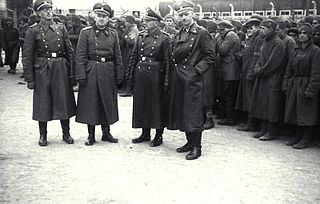
SS-Totenkopfverbände was the Schutzstaffel (SS) organization responsible for administering the Nazi concentration camps and extermination camps for Nazi Germany, among similar duties. While the Totenkopf was the universal cap badge of the SS, the SS-TV also wore this insignia on the right collar tab to distinguish itself from other SS formations.

The Schutzstaffel was a major paramilitary organization under Adolf Hitler and the Nazi Party in Nazi Germany, and later throughout German-occupied Europe during World War II.

Auschwitz concentration camp was a complex of over 40 concentration and extermination camps operated by Nazi Germany in occupied Poland during World War II and the Holocaust. It consisted of Auschwitz I, the main camp (Stammlager) in Oświęcim; Auschwitz II-Birkenau, a concentration and extermination camp with gas chambers; Auschwitz III-Monowitz, a labor camp for the chemical conglomerate IG Farben; and dozens of subcamps. The camps became a major site of the Nazis' final solution to the Jewish question.
Approximately 250,000 spectators attended the opening procession of the 28th International Eucharistic Congress in Chicago, United States.

The 28th International Eucharistic Congress was held in Chicago, Illinois, United States from June 20 to 24, 1926. The event, held by the Catholic Church, was a eucharistic congress, which is a large scale gathering of Catholics that focuses on the Eucharist and other items of Catholic faith. The event was organized by Cardinal George Mundelein, the Archbishop of Chicago, and was the first International Eucharistic Congress held in the United States and the second held in North America. Cardinal Giovanni Bonzano served as the papal legate for the event. The event attracted a large number of people to the city, with most sources claiming at least several hundred thousand attendees. Large events were held throughout the area, at locations including Soldier Field, Holy Name Cathedral, and the Saint Mary of the Lake Seminary. Some sources claim that approximately 1 million people attended the closing day mass held at the seminary in nearby Mundelein, Illinois.
The 28th International Eucharistic Congress begins in Chicago, with over 250,000 spectators attending the opening procession.

The 28th International Eucharistic Congress was held in Chicago, Illinois, United States from June 20 to 24, 1926. The event, held by the Catholic Church, was a eucharistic congress, which is a large scale gathering of Catholics that focuses on the Eucharist and other items of Catholic faith. The event was organized by Cardinal George Mundelein, the Archbishop of Chicago, and was the first International Eucharistic Congress held in the United States and the second held in North America. Cardinal Giovanni Bonzano served as the papal legate for the event. The event attracted a large number of people to the city, with most sources claiming at least several hundred thousand attendees. Large events were held throughout the area, at locations including Soldier Field, Holy Name Cathedral, and the Saint Mary of the Lake Seminary. Some sources claim that approximately 1 million people attended the closing day mass held at the seminary in nearby Mundelein, Illinois.

Chicago is the most populous city in the U.S. state of Illinois and the third-most populous in the United States, after New York City and Los Angeles. With a population of 2,746,388 in the 2020 census, it is also the most populous city in the Midwestern United States. As the seat of Cook County, the city is the center of the Chicago metropolitan area, one of the largest in the world.
Workers at the Buckingham and Carnatic Mills in Madras, India, began a four-month strike.
Buckingham and Carnatic Mills, popularly known as B & C Mills, were textile mills run by Binny and Co. in the city of Chennai, India. The mills were closed down in 1996 and the site is now used as a container freight station and is a popular venue for film shootings.

Chennai, formerly known as Madras, is the capital city of the Indian state of Tamil Nadu. The state's largest city in area and population as well, Chennai is located on the Coromandel Coast of the Bay of Bengal, and is the most prominent cultural, economic and educational centre of South India.
The 1921 Buckingham and Carnatic Mills strike was a strike by the workers of Buckingham and Carnatic Mills in the city of Madras, India, against the managing company, Binny and Co. The strike, which lasted from June to October 1921, caused severe losses to the Madras economy. It also created a rift in the ruling Justice Party forcing many Dalit leaders to leave.
Workers of Buckingham and Carnatic Mills in the city of Chennai, India, begin a four-month strike.
Buckingham and Carnatic Mills, popularly known as B & C Mills, were textile mills run by Binny and Co. in the city of Chennai, India. The mills were closed down in 1996 and the site is now used as a container freight station and is a popular venue for film shootings.

Chennai, formerly known as Madras, is the capital city of the Indian state of Tamil Nadu. The state's largest city in area and population as well, Chennai is located on the Coromandel Coast of the Bay of Bengal, and is the most prominent cultural, economic and educational centre of South India.
The 1921 Buckingham and Carnatic Mills strike was a strike by the workers of Buckingham and Carnatic Mills in the city of Madras, India, against the managing company, Binny and Co. The strike, which lasted from June to October 1921, caused severe losses to the Madras economy. It also created a rift in the ruling Justice Party forcing many Dalit leaders to leave.
Boxer Rebellion: The Imperial Chinese Army began a 55-day siege of the Legation Quarter in Beijing.

The Boxer Rebellion, also known as the Boxer Uprising, the Boxer Insurrection, or the Yihetuan Movement, was an anti-foreign, anti-colonial, and anti-Christian uprising in China between 1899 and 1901, towards the end of the Qing dynasty, by the Society of Righteous and Harmonious Fists, known as the "Boxers" in English because many of its members had practised Chinese martial arts, which at the time were referred to as "Chinese boxing".
The recorded military history of China extends from about 2200 BC to the present day. Chinese pioneered the use of crossbows, advanced metallurgical standardization for arms and armor, early gunpowder weapons, and other advanced weapons, but also adopted nomadic cavalry and Western military technology. China's armies also benefited from an advanced logistics system as well as a rich strategic tradition, beginning with Sun Tzu's The Art of War, that deeply influenced military thought.

The siege of the International Legations occurred in 1900 in Peking, the capital of the Qing Empire, during the Boxer Rebellion. Menaced by the Boxers; an anti-Christian anti-foreign peasant movement, 900 soldiers, sailors, marines, and civilians, largely from Europe, Japan, and the United States, and about 2,800 Chinese Christians took refuge in the Peking Legation Quarter. The Qing government took the side of the Boxers after the Eight-Nation Alliance invaded Tianjin at the Battle of the Taku Forts (1900), without a formal declaration of war. The foreigners and Chinese Christians in the Legation Quarter survived a 55-day siege by the Qing Army and Boxers. The siege was broken by an international military force, which marched from the coast of China, defeated the Qing Army, and occupied Peking. The siege was called by the New York Sun "the most exciting episode ever known to civilization."

The Peking Legation Quarter was the area in Peking (Beijing), China where a number of foreign legations were located between 1861 and 1959. In the Chinese language, the area is known as Dong Jiaomin Xiang, which is the name of the hutong through the area. It is located in the Dongcheng District, immediately to the east of Tiananmen Square.
Boxer Rebellion: The Imperial Chinese Army begins a 55-day siege of the Legation Quarter in Beijing, China.

The Boxer Rebellion, also known as the Boxer Uprising, the Boxer Insurrection, or the Yihetuan Movement, was an anti-foreign, anti-colonial, and anti-Christian uprising in China between 1899 and 1901, towards the end of the Qing dynasty, by the Society of Righteous and Harmonious Fists, known as the "Boxers" in English because many of its members had practised Chinese martial arts, which at the time were referred to as "Chinese boxing".
The recorded military history of China extends from about 2200 BC to the present day. Chinese pioneered the use of crossbows, advanced metallurgical standardization for arms and armor, early gunpowder weapons, and other advanced weapons, but also adopted nomadic cavalry and Western military technology. China's armies also benefited from an advanced logistics system as well as a rich strategic tradition, beginning with Sun Tzu's The Art of War, that deeply influenced military thought.

The siege of the International Legations occurred in 1900 in Peking, the capital of the Qing Empire, during the Boxer Rebellion. Menaced by the Boxers; an anti-Christian anti-foreign peasant movement, 900 soldiers, sailors, marines, and civilians, largely from Europe, Japan, and the United States, and about 2,800 Chinese Christians took refuge in the Peking Legation Quarter. The Qing government took the side of the Boxers after the Eight-Nation Alliance invaded Tianjin at the Battle of the Taku Forts (1900), without a formal declaration of war. The foreigners and Chinese Christians in the Legation Quarter survived a 55-day siege by the Qing Army and Boxers. The siege was broken by an international military force, which marched from the coast of China, defeated the Qing Army, and occupied Peking. The siege was called by the New York Sun "the most exciting episode ever known to civilization."

The Peking Legation Quarter was the area in Peking (Beijing), China where a number of foreign legations were located between 1861 and 1959. In the Chinese language, the area is known as Dong Jiaomin Xiang, which is the name of the hutong through the area. It is located in the Dongcheng District, immediately to the east of Tiananmen Square.
Baron Eduard Toll, leader of the Russian Polar Expedition of 1900, departs Saint Petersburg in Russia on the explorer ship Zarya, never to return.

Eduard Gustav Freiherr von Toll, better known in Russia as Eduard Vasilyevich Toll and often referred to as Baron von Toll, was a Russian geologist and Arctic explorer. He is most notable for leading the Russian polar expedition of 1900–1902 in search of the legendary Sannikov Land, a phantom island purported to lie off Russia's Arctic coast. During the expedition, Toll and a small party of explorers disappeared from Bennett Island, and their fate remains unknown to this day.

The Russian polar expedition of 1900–1902 was commissioned by the Saint Petersburg Academy of Sciences to study the Arctic Ocean north of New Siberian Islands and search for the legendary Sannikov Land. It was led by the Baltic German geologist and Arctic explorer Baron Eduard von Toll on the ship Zarya. Toll and his three assistants vanished in late 1902 while exploring Bennett Island. One of the key members of the expedition was Alexander Kolchak, then a young researcher and lieutenant of the Russian Navy, and later a provisional ruler of Russia during the civil war period. Kolchak also led the rescue mission to find Toll and his crew.

Saint Petersburg, formerly known as Petrograd (1914–1924) and later Leningrad (1924–1991), is the second-largest city in Russia. It is situated on the Neva River, at the head of the Gulf of Finland on the Baltic Sea, with a population of roughly 5.4 million residents. Saint Petersburg is the fourth-most populous city in Europe after Istanbul, Moscow and London, the most populous city on the Baltic Sea, and the world's northernmost city of more than 1 million residents. As Russia's Imperial capital, and a historically strategic port, it is governed as a federal city.
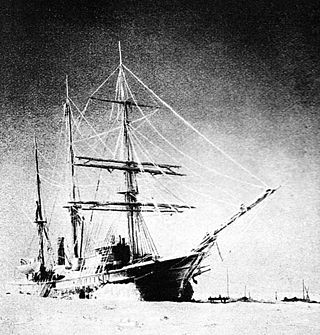
Zarya was a steam- and sail-powered brig used by the Russian Academy of Sciences for a polar exploration during 1900–1903.
The Kiel Canal, crossing the base of the Jutland peninsula and the busiest artificial waterway in the world, is officially opened.
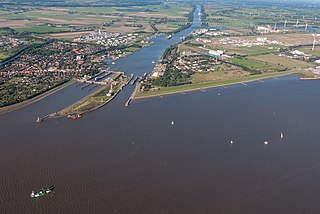
The Kiel Canal is a 98 km (61 mi) long freshwater canal in the German state of Schleswig-Holstein. The canal was finished in 1895, but later widened, and links the North Sea at Brunsbüttel to the Baltic Sea at Kiel-Holtenau. An average of 250 NM (460 km) is saved by using the Kiel Canal instead of going around the Jutland Peninsula. This not only saves time but also avoids storm-prone seas and having to pass through the Danish straits.

Jutland, known anciently as the Cimbric or Cimbrian Peninsula, is a peninsula of Northern Europe that forms the continental portion of Denmark and part of northern Germany. The names are derived from the Jutes and the Cimbri, respectively.
After a widely publicized trial, American Lizzie Borden was acquitted of the axe murders of her father and stepmother.
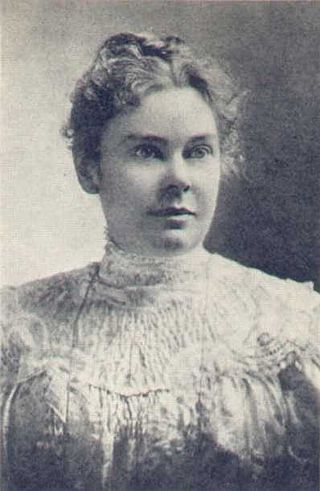
Lizzie Andrew Borden was an American woman tried and acquitted of the August 4, 1892 axe murders of her father and stepmother in Fall River, Massachusetts. No one else was charged in the murders, and despite ostracism from other residents, Borden spent the remainder of her life in Fall River. She died of pneumonia at age 66, just days before the death of her older sister, Emma.
Lizzie Borden is acquitted of the murders of her father and stepmother.

Lizzie Andrew Borden was an American woman tried and acquitted of the August 4, 1892 axe murders of her father and stepmother in Fall River, Massachusetts. No one else was charged in the murders, and despite ostracism from other residents, Borden spent the remainder of her life in Fall River. She died of pneumonia at age 66, just days before the death of her older sister, Emma.
Alexander Graham Bell installs the world's first commercial telephone service in Hamilton, Ontario, Canada.

Alexander Graham Bell was a Scottish-born inventor, scientist and engineer who is credited with patenting the first practical telephone. He also co-founded the American Telephone and Telegraph Company (AT&T) in 1885.

A telephone is a telecommunications device that permits two or more users to conduct a conversation when they are too far apart to be easily heard directly. A telephone converts sound, typically and most efficiently the human voice, into electronic signals that are transmitted via cables and other communication channels to another telephone which reproduces the sound to the receiving user. The term is derived from Greek: τῆλε and φωνή, together meaning distant voice. A common short form of the term is phone, which came into use early in the telephone's history.

Hamilton is a port city in the Canadian province of Ontario. Hamilton has a population of 569,353, and its census metropolitan area, which includes Burlington and Grimsby, has a population of 785,184. The city is approximately 45 kilometres (28 mi) southwest of Toronto in the Greater Toronto and Hamilton Area (GTHA).
American Civil War: West Virginia is admitted as the 35th U.S. state.

The American Civil War was a civil war in the United States. It was fought between the Union and the Confederacy, the latter formed by states that had seceded. The central cause of the war was the dispute over whether slavery would be permitted to expand into the western territories, leading to more slave states, or be prevented from doing so, which was widely believed would place slavery on a course of ultimate extinction.

West Virginia is a state in the Appalachian, Mid-Atlantic and Southeastern regions of the United States. It is bordered by Pennsylvania to the north and east, Maryland to the east and northeast, Virginia to the southeast, Kentucky to the southwest, and Ohio to the northwest. West Virginia is the 10th-smallest state by area and ranks as the 12th-least populous state, with a population of 1,793,716 residents. The capital and largest city is Charleston.

In the United States, a state is a constituent political entity, of which there are 50. Bound together in a political union, each state holds governmental jurisdiction over a separate and defined geographic territory where it shares its sovereignty with the federal government. Due to this shared sovereignty, Americans are citizens both of the federal republic and of the state in which they reside. State citizenship and residency are flexible, and no government approval is required to move between states, except for persons restricted by certain types of court orders.
Barbu Catargiu, the Prime Minister of Romania, is assassinated.

Barbu Catargiu was a conservative Romanian politician and journalist. He was the first Prime Minister of Romania, in 1862, until he was assassinated on 20 June that year. He was a staunch defender of the great estates of the boyars, and notably originated the conservative doctrine that "feudalism in Romania had never existed".
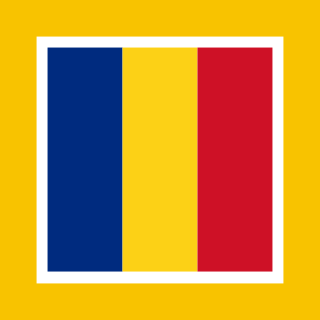
The prime minister of Romania, officially the prime minister of the Government of Romania, is the head of the Government of Romania. Initially, the office was styled President of the Council of Ministers, when the term "Government" included more than the Cabinet, and the Cabinet was called the Council of Ministers. The title was officially changed to Prime Minister by the 1965 Constitution of Romania during the communist regime.
Samuel Morse receives the patent for the telegraph.

Samuel Finley Breese Morse was an American inventor and painter. After having established his reputation as a portrait painter, in his middle age Morse contributed to the invention of a single-wire telegraph system based on European telegraphs. He was a co-developer of Morse code and helped to develop the commercial use of telegraphy.

Telegraphy is the long-distance transmission of messages where the sender uses symbolic codes, known to the recipient, rather than a physical exchange of an object bearing the message. Thus flag semaphore is a method of telegraphy, whereas pigeon post is not. Ancient signalling systems, although sometimes quite extensive and sophisticated as in China, were generally not capable of transmitting arbitrary text messages. Possible messages were fixed and predetermined and such systems are thus not true telegraphs.
Queen Victoria (pictured) acceded to the British throne, beginning a 63-year reign.

Victoria was Queen of the United Kingdom of Great Britain and Ireland from 20 June 1837 until her death in 1901. Her reign of 63 years and seven months was longer than that of any previous British monarch and is known as the Victorian era. It was a period of industrial, political, scientific, and military change within the United Kingdom, and was marked by a great expansion of the British Empire. In 1876, the British Parliament voted to grant her the additional title of Empress of India.

The monarchy of the United Kingdom, commonly referred to as the British monarchy, is the constitutional form of government by which a hereditary sovereign reigns as the head of state of the United Kingdom, the Crown Dependencies and the British Overseas Territories. The current monarch is King Charles III, who ascended the throne on 8 September 2022, upon the death of his mother, Queen Elizabeth II.
Queen Victoria succeeds to the British throne.

Victoria was Queen of the United Kingdom of Great Britain and Ireland from 20 June 1837 until her death in 1901. Her reign of 63 years and seven months was longer than that of any previous British monarch and is known as the Victorian era. It was a period of industrial, political, scientific, and military change within the United Kingdom, and was marked by a great expansion of the British Empire. In 1876, the British Parliament voted to grant her the additional title of Empress of India.
The U.S. vessel SS Savannah arrives at Liverpool, United Kingdom. It is the first steam-propelled vessel to cross the Atlantic, although most of the journey is made under sail.

SS Savannah was an American hybrid sailing ship/sidewheel steamer built in 1818. She was the first steamship to cross the Atlantic Ocean, transiting mainly under sail power from May to June 1819. In spite of this historic voyage, the great space taken up by her large engine and its fuel at the expense of cargo, and the public's anxiety over embracing her revolutionary steam power, kept Savannah from being a commercial success as a steamship. Originally laid down as a sailing packet, she was, following a severe and unrelated reversal of the financial fortunes of her owners, converted back into a sailing ship shortly after returning from Europe.
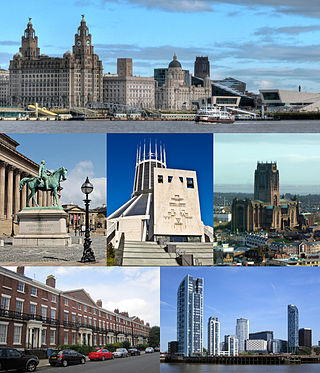
Liverpool is a city and metropolitan borough in Merseyside, England. With a population of 498,042 in 2019, it is the 10th largest English district by population and its metropolitan area is the fifth largest in the United Kingdom, with a population of 2.24 million.

The Atlantic Ocean is the second-largest of the world's five oceans, with an area of about 106,460,000 km2 (41,100,000 sq mi). It covers approximately 20% of Earth's surface and about 29% of its water surface area. It is known to separate the "Old World" of Africa, Europe and Asia from the "New World" of the Americas in the European perception of the World.
King Louis XVI, disguised as a valet, and the French royal family attempt to flee Paris during the French Revolution.

Louis XVI was the last King of France before the fall of the monarchy during the French Revolution. He was referred to as Citizen Louis Capet during the four months just before he was executed by guillotine. He was the son of Louis, Dauphin of France, son and heir-apparent of King Louis XV, and Maria Josepha of Saxony. When his father died in 1765, he became the new Dauphin. Upon his grandfather's death on 10 May 1774, he became King of France and Navarre, reigning as such until 4 September 1791, when he received the title of King of the French, continuing to reign as such until the monarchy was abolished on 21 September 1792.
Deputies of the French Third Estate take the Tennis Court Oath.
A legislator is a person who writes and passes laws, especially someone who is a member of a legislature. Legislators are often elected by the people of the state. Legislatures may be supra-national, national, or local.

The first written records for the history of France appeared in the Iron Age. What is now France made up the bulk of the region known to the Romans as Gaul. Greek writers noted the presence of three main ethno-linguistic groups in the area: the Gauls, the Aquitani, and the Belgae. The Gauls, the largest and best attested group, were Celtic people speaking what is known as the Gaulish language.

The Estates General of 1789 (French: États Généraux de 1789) was a general assembly representing the French estates of the realm: the clergy, the nobility, and the commoners. It was the last of the Estates General of the Kingdom of France. Summoned by King Louis XVI, the Estates General of 1789 ended when the Third Estate formed the National Assembly and, against the wishes of the King, invited the other two estates to join. This signaled the outbreak of the French Revolution.

On 20 June 1789, the members of the French Third Estate took the Tennis Court Oath in the tennis court which had been built in 1686 for the use of the Versailles palace. Their vow "not to separate and to reassemble wherever necessary until the Constitution of the kingdom is established" became a pivotal event in the French Revolution.
Oliver Ellsworth moves at the Federal Convention to call the government the 'United States'.

Oliver Ellsworth was a Founding Father of the United States, attorney, jurist, politician, and diplomat. Ellsworth was a framer of the United States Constitution, United States senator from Connecticut, and the third chief justice of the United States. Additionally, he received 11 electoral votes in the 1796 presidential election.

The Constitutional Convention took place in Philadelphia from May 25 to September 17, 1787. Although the convention was intended to revise the league of states and first system of government under the Articles of Confederation, the intention from the outset of many of its proponents, chief among them James Madison of Virginia and Alexander Hamilton of New York, was to create a new Frame of Government rather than fix the existing one. The delegates elected George Washington of Virginia, former commanding general of the Continental Army in the late American Revolutionary War (1775–1783) and proponent of a stronger national government, to become President of the convention. The result of the convention was the creation of the Constitution of the United States, placing the Convention among the most significant events in American history.
The Congress of the Confederation adopted the Great Seal of the United States, used to authenticate certain documents issued by the federal government.

The Congress of the Confederation, or the Confederation Congress, formally referred to as the United States in Congress Assembled, was the governing body of the United States of America during the Confederation period, March 1, 1781 – March 4, 1789. A unicameral body with legislative and executive function, it was composed of delegates appointed by the legislatures of the several states. Each state delegation had one vote. It was preceded by the Second Continental Congress (1775–1781) and was created by the Articles of Confederation and Perpetual Union in 1781.

The Great Seal is a principal national symbol of the United States. The phrase is used both for the physical seal itself, which is kept by the United States Secretary of State, and more generally for the design impressed upon it. The obverse of the Great Seal depicts the national coat of arms of the United States while the reverse features an unfinished pyramid topped by an Eye of Providence. The year of the U.S. Declaration of Independence, 1776, is noted in Roman numerals at the base of the pyramid. The seal contains three Latin phrases: E Pluribus Unum, Annuit cœptis, and Novus ordo seclorum.

The federal government of the United States is the national government of the United States, a federal republic located primarily in North America, composed of 50 states, a city within a federal district, five major self-governing territories and several island possessions. The federal government, sometimes simply referred to as Washington, is composed of three distinct branches: legislative, executive, and judicial, whose powers are vested by the U.S. Constitution in the Congress, the president and the federal courts, respectively. The powers and duties of these branches are further defined by acts of Congress, including the creation of executive departments and courts inferior to the Supreme Court.
The U.S. Congress adopts the Great Seal of the United States.

The Congress of the Confederation, or the Confederation Congress, formally referred to as the United States in Congress Assembled, was the governing body of the United States of America during the Confederation period, March 1, 1781 – March 4, 1789. A unicameral body with legislative and executive function, it was composed of delegates appointed by the legislatures of the several states. Each state delegation had one vote. It was preceded by the Second Continental Congress (1775–1781) and was created by the Articles of Confederation and Perpetual Union in 1781.

The Great Seal is a principal national symbol of the United States. The phrase is used both for the physical seal itself, which is kept by the United States Secretary of State, and more generally for the design impressed upon it. The obverse of the Great Seal depicts the national coat of arms of the United States while the reverse features an unfinished pyramid topped by an Eye of Providence. The year of the U.S. Declaration of Independence, 1776, is noted in Roman numerals at the base of the pyramid. The seal contains three Latin phrases: E Pluribus Unum, Annuit cœptis, and Novus ordo seclorum.
A British garrison is imprisoned in the Black Hole of Calcutta.

The British Empire was composed of the dominions, colonies, protectorates, mandates, and other territories ruled or administered by the United Kingdom and its predecessor states. It began with the overseas possessions and trading posts established by England between the late 16th and early 18th centuries. At its height it was the largest empire in history and, for over a century, was the foremost global power. By 1913, the British Empire held sway over 412 million people, 23 per cent of the world population at the time, and by 1920, it covered 35.5 million km2 (13.7 million sq mi), 24 per cent of the Earth's total land area. As a result, its constitutional, legal, linguistic, and cultural legacy is widespread. At the peak of its power, it was described as "the empire on which the sun never sets", as the Sun was always shining on at least one of its territories.
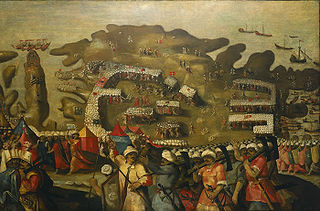
A garrison is any body of troops stationed in a particular location, originally to guard it. The term now often applies to certain facilities that constitute a military base or fortified military headquarters. A garrison is usually in a city, town, fort, castle, ship, or similar site. "Garrison town" is a common expression for any town that has a military base nearby.
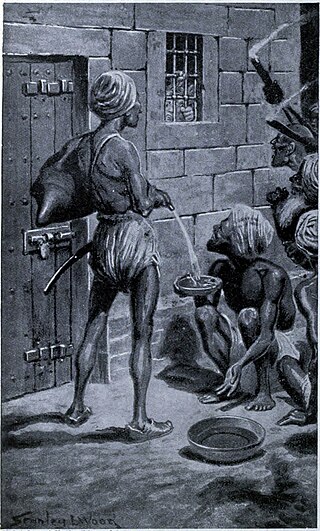
The Black Hole of Calcutta was a dungeon in Fort William, Calcutta, measuring 14 by 18 feet, in which troops of Siraj-ud-Daulah, the Nawab of Bengal, held British prisoners of war on the night of 20 June 1756. John Zephaniah Holwell, one of the British prisoners and an employee of the East India Company, said that, after the fall of Fort William, the surviving British soldiers, Indian sepoys, and Indian civilians were imprisoned overnight in conditions so cramped that many people died from suffocation and heat exhaustion, and that 123 of 146 prisoners of war imprisoned there died. Some modern historians believe that 64 prisoners were sent into the Hole, and that 43 died there.
Monmouth Rebellion: James Scott, 1st Duke of Monmouth declares himself King of England at Bridgwater.
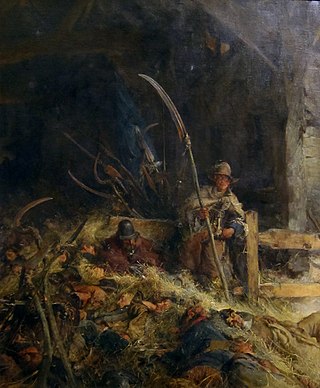
The Monmouth Rebellion, also known as the Pitchfork Rebellion, the Revolt of the West or the West Country rebellion, was an attempt to depose James II, who in February 1685 succeeded his brother Charles II as king of England, Scotland and Ireland. A group of dissident Protestants led by James Scott, 1st Duke of Monmouth, eldest illegitimate son of Charles II, opposed James largely due to his Catholicism.

James Scott, 1st Duke of Monmouth, 1st Duke of Buccleuch, KG, PC was a Dutch-born English nobleman and military officer. Originally called James Crofts or James Fitzroy, he was born in Rotterdam in the Netherlands, the eldest illegitimate son of Charles II of England, Scotland, and Ireland with his mistress Lucy Walter.

Bridgwater is a large historic market town and civil parish in Somerset, England. Its population currently stands at around 41,276 as of 2022. Bridgwater is at the edge of the Somerset Levels, in level and well-wooded country. The town lies along both sides of the River Parrett; it has been a major inland port and trading centre since the industrial revolution. Most of its industrial bases still stand today. Its larger neighbour, Taunton, is linked to Bridgwater via a canal, the M5 motorway and the GWR railway line.
Tarhoncu Ahmed Pasha is appointed Grand Vizier of the Ottoman Empire.
Tarhoncu Ahmed Pasha was an Ottoman Albanian statesman and Grand Vizier of the Ottoman Empire from 20 June 1652 until 21 March 1653, when he was executed because of the economic reforms he initiated.
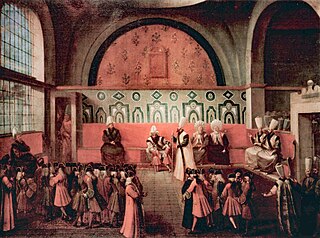
Grand vizier was the title of the effective head of government of many sovereign states in the Islamic world. The office of Grand Vizier was first held by officials in the later Abbasid Caliphate. It was then held in the Ottoman Empire, the Mughal Empire, the Sokoto Caliphate the Safavid Empire and Morocco. In the Ottoman Empire, the Grand Vizier held the imperial seal and could convene all other viziers to attend to affairs of the state; the viziers in conference were called "Kubbealtı viziers" in reference to their meeting place, the Kubbealtı in Topkapı Palace. His offices were located at the Sublime Porte. Today, the Prime Minister of Pakistan is referred to in Urdu as Wazir-e-azam, which translates literally to Grand Vizier.

The Ottoman Empire, also known as the Turkish Empire, was an empire that controlled much of Southeast Europe, Western Asia, and Northern Africa between the 14th and early 20th centuries. It was founded at the end of the 13th century in northwestern Anatolia in the town of Söğüt by the Turkoman tribal leader Osman I. After 1354, the Ottomans crossed into Europe and, with the conquest of the Balkans, the Ottoman beylik was transformed into a transcontinental empire. The Ottomans ended the Byzantine Empire with the conquest of Constantinople in 1453 by Mehmed the Conqueror.
The Sack of Baltimore: The Irish village of Baltimore is attacked by Algerian pirates.
The Sack of Baltimore took place on 20 June 1631, when the village of Baltimore in West Cork, Ireland, was attacked by pirates from the Barbary Coast of North Africa – Dutchmen, Algerians and Ottoman Turks. The attack was the largest by Barbary slave traders on Ireland.

Baltimore is a village in western County Cork, Ireland. It is the main village in the parish of Rathmore and the Islands, the southernmost parish in Ireland. It is the main ferry port to Sherkin Island, Cape Clear Island and the eastern side of Roaring Water Bay and Carbery's Hundred Isles.

Algeria, officially the People's Democratic Republic of Algeria, is a country in North Africa. Algeria is bordered to the northeast by Tunisia; to the east by Libya; to the southeast by Niger; to the southwest by Mali, Mauritania, and Western Sahara; to the west by Morocco; and to the north by the Mediterranean Sea. It is considered part of the Maghreb region of North Africa. It has a semi-arid geography, with most of the population living in the fertile north and the Sahara dominating the geography of the south. Algeria covers an area of 2,381,741 square kilometres (919,595 sq mi), making it the world's tenth largest nation by area, and the largest nation in Africa, being more than 200 times as large as the smallest country in the continent, The Gambia. With a population of 44 million, Algeria is the ninth-most populous country in Africa, and the 32nd-most populous country in the world. The capital and largest city is Algiers, located in the far north on the Mediterranean coast.
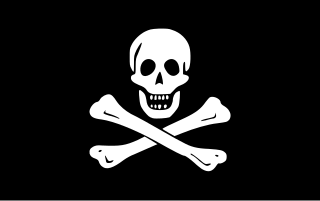
Piracy is an act of robbery or criminal violence by ship or boat-borne attackers upon another ship or a coastal area, typically with the goal of stealing cargo and other valuable goods. Those who conduct acts of piracy are called pirates, while the dedicated ships that pirates use are called pirate ships. The earliest documented instances of piracy were in the 14th century BC, when the Sea Peoples, a group of ocean raiders, attacked the ships of the Aegean and Mediterranean civilisations. Narrow channels which funnel shipping into predictable routes have long created opportunities for piracy, as well as for privateering and commerce raiding. Historic examples include the waters of Gibraltar, the Strait of Malacca, Madagascar, the Gulf of Aden, and the English Channel, whose geographic structures facilitated pirate attacks. Privateering uses similar methods to piracy, but the captain acts under orders of the state authorising the capture of merchant ships belonging to an enemy nation, making it a legitimate form of war-like activity by non-state actors. A land-based parallel is the ambushing of travelers by bandits and brigands in highways and mountain passes.
The Battle of Höchst takes place during the Thirty Years' War.

The Battle of Höchst was fought between a Catholic League army led by Johan Tzerclaes, Count of Tilly and a Protestant army commanded by Christian the Younger, Duke of Brunswick-Lüneburg, close to the town of Höchst, today a suburb of the city of Frankfurt am Main. The result was a one-sided Catholic League victory. The action occurred during the Thirty Years' War.

The Thirty Years' War was one of the longest and most destructive conflicts in European history, lasting from 1618 to 1648. Fought primarily in Central Europe, an estimated 4.5 to 8 million soldiers and civilians died as a result of battle, famine, and disease, while some areas of what is now modern Germany experienced population declines of over 50%. Related conflicts include the Eighty Years' War, the War of the Mantuan Succession, the Franco-Spanish War, and the Portuguese Restoration War.
First Battle of Uji, starting the Genpei War in Japan.

The first battle of Uji is famous and important for having opened the Genpei War.

The Genpei War was a national civil war between the Taira and Minamoto clans during the late Heian period of Japan. It resulted in the downfall of the Taira and the establishment of the Kamakura shogunate under Minamoto no Yoritomo, who appointed himself as Shōgun in 1192, governing Japan as a military dictator from the eastern city of Kamakura.

Japan is an island country in East Asia. It is situated in the northwest Pacific Ocean, and is bordered on the west by the Sea of Japan, while extending from the Sea of Okhotsk in the north toward the East China Sea, Philippine Sea, and Taiwan in the south. Japan is a part of the Ring of Fire, and spans an archipelago of 6852 islands covering 377,975 square kilometers (145,937 sq mi); the five main islands are Hokkaido, Honshu, Shikoku, Kyushu, and Okinawa. Tokyo is the nation's capital and largest city, followed by Yokohama, Osaka, Nagoya, Sapporo, Fukuoka, Kobe, and Kyoto.
With the help of Roman foederati, Flavius Aetius defeated Attila at the Battle of the Catalaunian Plains, halting the invasion of Gaul by the Huns and their allies.
Foederati were peoples and cities bound by a treaty, known as foedus, with Rome. During the Roman Republic, the term identified the socii, but during the Roman Empire, it was used to describe foreign states, client kingdoms or barbarian tribes to which the empire provided benefits in exchange for military assistance. The term was also used, especially under the empire, for groups of "barbarian" mercenaries of various sizes who were typically allowed to settle within the empire.

Flavius Aetius was a Roman general and statesman of the closing period of the Western Roman Empire. He was a military commander and the most influential man in the Empire for two decades (433–454). He managed policy in regard to the attacks of barbarian federates settled throughout the West. Notably, he mustered a large Roman and allied (foederati) army in the Battle of the Catalaunian Plains, ending a devastating invasion of Gaul by Attila in 451, though the Hun and his subjugated allies still managed to invade Italy the following year, an incursion best remembered for the ruthless Sack of Aquileia and the intercession of Pope Leo I.
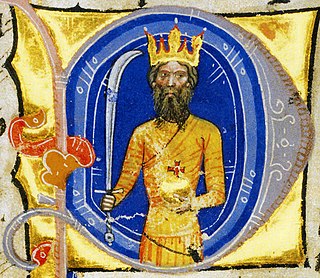
Attila, frequently called Attila the Hun, was the ruler of the Huns from 434 until his death in March 453. He was also the leader of a tribal empire consisting of Huns, Ostrogoths, Alans, and Bulgars, among others, in Central and Eastern Europe.
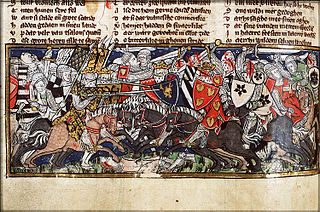
The Battle of the Catalaunian Plains, also called the Battle of the Campus Mauriacus, Battle of Châlons, Battle of Troyes or the Battle of Maurica, took place on June 20, 451 AD, between a coalition – led by the Roman general Flavius Aetius and by the Visigothic king Theodoric I – against the Huns and their vassals – commanded by their king Attila. It proved one of the last major military operations of the Western Roman Empire, although Germanic foederati composed the majority of the coalition army. Whether the battle was of strategic significance is disputed; historians generally agree that the Siege of Orleans was the decisive moment in the campaign and stopped the Huns' attempt to advance any further into Roman territory or establish vassals in Roman Gaul. However, the Huns successfully looted and pillaged much of Gaul and crippled the military capacity of the Romans and Visigoths. Attila died only two years later, in 453; after the Battle of Nedao in 454, the coalition of the Huns and the incorporated Germanic vassals gradually disintegrated.

Gaul was a region of Western Europe first described by the Romans. It was inhabited by Celtic and Aquitani tribes, encompassing present-day France, Belgium, Luxembourg, most of Switzerland, parts of Northern Italy, and Germany west of the Rhine. It covered an area of 494,000 km2 (191,000 sq mi). According to Julius Caesar, Gaul was divided into three parts: Gallia Celtica, Belgica, and Aquitania. Archaeologically, the Gauls were bearers of the La Tène culture, which extended across all of Gaul, as well as east to Raetia, Noricum, Pannonia, and southwestern Germania during the 5th to 1st centuries BC. During the 2nd and 1st centuries BC, Gaul fell under Roman rule: Gallia Cisalpina was conquered in 204 BC and Gallia Narbonensis in 123 BC. Gaul was invaded after 120 BC by the Cimbri and the Teutons, who were in turn defeated by the Romans by 103 BC. Julius Caesar finally subdued the remaining parts of Gaul in his campaigns of 58 to 51 BC.

The Huns were a nomadic people who lived in Central Asia, the Caucasus, and Eastern Europe between the 4th and 6th century AD. According to European tradition, they were first reported living east of the Volga River, in an area that was part of Scythia at the time; the Huns' arrival is associated with the migration westward of an Iranian people, the Alans. By 370 AD, the Huns had arrived on the Volga, and by 430, they had established a vast, if short-lived, dominion in Europe, conquering the Goths and many other Germanic peoples living outside of Roman borders and causing many others to flee into Roman territory. The Huns, especially under their King Attila, made frequent and devastating raids into the Eastern Roman Empire. In 451, they invaded the Western Roman province of Gaul, where they fought a combined army of Romans and Visigoths at the Battle of the Catalaunian Fields, and in 452, they invaded Italy. After the death of Attila in 453, the Huns ceased to be a major threat to Rome and lost much of their empire, following the Battle of Nedao. Descendants of the Huns, or successors with similar names, are recorded by neighboring populations to the south, east, and west as having occupied parts of Eastern Europe and Central Asia from about the 4th to 6th centuries. Variants of the Hun name are recorded in the Caucasus until the early 8th century.
Battle of Chalons: Flavius Aetius' battles Attila the Hun. After the battle, which was inconclusive, Attila retreats, causing the Romans to interpret it as a victory.

The Battle of the Catalaunian Plains, also called the Battle of the Campus Mauriacus, Battle of Châlons, Battle of Troyes or the Battle of Maurica, took place on June 20, 451 AD, between a coalition – led by the Roman general Flavius Aetius and by the Visigothic king Theodoric I – against the Huns and their vassals – commanded by their king Attila. It proved one of the last major military operations of the Western Roman Empire, although Germanic foederati composed the majority of the coalition army. Whether the battle was of strategic significance is disputed; historians generally agree that the Siege of Orleans was the decisive moment in the campaign and stopped the Huns' attempt to advance any further into Roman territory or establish vassals in Roman Gaul. However, the Huns successfully looted and pillaged much of Gaul and crippled the military capacity of the Romans and Visigoths. Attila died only two years later, in 453; after the Battle of Nedao in 454, the coalition of the Huns and the incorporated Germanic vassals gradually disintegrated.

Flavius Aetius was a Roman general and statesman of the closing period of the Western Roman Empire. He was a military commander and the most influential man in the Empire for two decades (433–454). He managed policy in regard to the attacks of barbarian federates settled throughout the West. Notably, he mustered a large Roman and allied (foederati) army in the Battle of the Catalaunian Plains, ending a devastating invasion of Gaul by Attila in 451, though the Hun and his subjugated allies still managed to invade Italy the following year, an incursion best remembered for the ruthless Sack of Aquileia and the intercession of Pope Leo I.

Attila, frequently called Attila the Hun, was the ruler of the Huns from 434 until his death in March 453. He was also the leader of a tribal empire consisting of Huns, Ostrogoths, Alans, and Bulgars, among others, in Central and Eastern Europe.
Caleb Swanigan, American NBA player. (b. 1997) deaths

Caleb Sylvester Swanigan was an American professional basketball player in the National Basketball Association (NBA). He played college basketball for the Purdue Boilermakers. He was ranked among the top prep players in the national class of 2015 by Rivals.com, Scout.com and ESPN. He completed his senior season in the 2014–15 academic year for Homestead High School in Fort Wayne, Indiana, who went on to win the first state championship in the school's history. Swanigan was named Indiana's Mr. Basketball and a McDonald's All-American.
Prodigy, American music artist (b. 1974) deaths

Albert Johnson, better known by his stage name Prodigy, was an American rapper. With Havoc, he was one half of the hip hop duo Mobb Deep.
Angelo Niculescu, Romanian footballer and manager (b. 1921) deaths
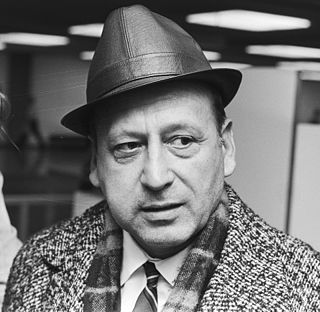
Angelo Niculescu was a Romanian football player and manager. He was the coach of the Romania national football team during the 1970 FIFA World Cup. He is best remembered in Romania for inventing the "temporizare" ("delaying") tactics in which the team keeps the possession of the ball inside its own half and the players are using many short passes from one side to another of the field in order to disrupt the opponents patience when they go out of their field to make pressing; this is also known as tiki-taka. With such tactics Romania qualified for a World Cup after more than 30 years and registered a win against Czechoslovakia.
Miriam Schapiro, Canadian-American painter and sculptor (b. 1923) deaths

Miriam Schapiro was a Canadian-born artist based in the United States. She was a painter, sculptor, printmaker, and a pioneer of feminist art. She was also considered a leader of the Pattern and Decoration art movement. Schapiro's artwork blurs the line between fine art and craft. She incorporated craft elements into her paintings due to their association with women and femininity. Schapiro's work touches on the issue of feminism and art: especially in the aspect of feminism in relation to abstract art. Schapiro honed in her domesticated craft work and was able to create work that stood amongst the rest of the high art. These works represent Schapiro's identity as an artist working in the center of contemporary abstraction and simultaneously as a feminist being challenged to represent women's "consciousness" through imagery. She often used icons that are associated with women, such as hearts, floral decorations, geometric patterns, and the color pink. In the 1970s she made the hand fan, a typically small woman's object, heroic by painting it six feet by twelve feet. "The fan-shaped canvas, a powerful icon, gave Schapiro the opportunity to experiment … Out of this emerged a surface of textured coloristic complexity and opulence that formed the basis of her new personal style. The kimono, fans, houses, and hearts were the form into which she repeatedly poured her feelings and desires, her anxieties, and hopes".
Ingvar Rydell, Swedish footballer (b. 1922) deaths

Gustav Ingvar Rydell was a Swedish football forward who played for Malmö FF. He also represented Sweden in the 1950 FIFA World Cup in Brazil. and won a bronze medal at the 1952 Summer Olympics in Finland.
Judy Agnew, Second Lady of the United States. (b. 1921) deaths

Elinor Isabel Agnew was the second lady of the United States from 1969 to 1973. She was the wife of the 39th vice president of the United States, Spiro Agnew, who had previously served as Governor of Maryland and Baltimore County Executive. Although Judy Agnew attempted to avoid political discussion during her tenure as second lady, preferring to cultivate her image primarily as a wife and mother, her dismissive remarks about the women's liberation movement were quoted by media.

The second gentleman or second lady of the United States is the informal title held by the spouse of the vice president of the United States, concurrent with the vice president's term of office. Coined in contrast to "first lady", albeit used less commonly, the title "second lady" was apparently first used by Jennie Tuttle Hobart to refer to herself. Second gentleman of the United States is the title held by Doug Emhoff, the husband of Vice President Kamala Harris.
LeRoy Neiman, American painter (b. 1921) deaths

LeRoy Neiman was an American artist known for his brilliantly colored, expressionist paintings and screenprints of athletes, musicians, and sporting events.
Heinrich IV, Prince Reuss of Köstritz (b. 1919) deaths

Heinrich IV, Prince Reuss was the head of the German Princely House of Reuss.
Andrew Sarris, American critic (b. 1928) deaths
Andrew Sarris was an American film critic. He was a leading proponent of the auteur theory of film criticism.
Ryan Dunn, American television personality (b. 1977) deaths

Ryan Matthew Dunn was an American stunt performer, television personality, actor and comedian. He was best known as one of the stars of the MTV reality stunt show Jackass and its film franchise.
Roberto Rosato, Italian footballer (b. 1943) deaths

Roberto Rosato was an Italian footballer, who played as a defender.
Harry B. Whittington, English palaeontologist and academic (b. 1916) deaths
Harry Blackmore Whittington FRS was a British palaeontologist who made a major contribution to the study of fossils of the Burgess Shale and other Cambrian fauna. His works are largely responsible for the concept of Cambrian explosion, whereby modern animal body plans are explained to originate during a short span of geological period. With initial work on trilobites, his discoveries revealed that these arthropods were the most diversified of all invertebrates during the Cambrian Period. He was responsible for setting the standard for naming and describing the delicate fossils preserved in Konservat-Lagerstätten.
Larry Collins, American journalist, historian, and author (b. 1929) deaths
John Lawrence Collins Jr. was an American writer.
Jack Kilby, American physicist and engineer, Nobel Prize laureate (b. 1923) deaths
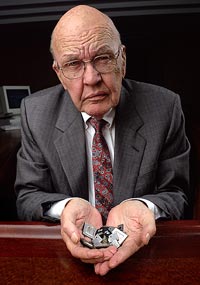
Jack St. Clair Kilby was an American electrical engineer who took part in the realization of the first integrated circuit while working at Texas Instruments (TI) in 1958. He was awarded the Nobel Prize in Physics on December 10, 2000. Kilby was also the co-inventor of the handheld calculator and the thermal printer, for which he had the patents. He also had patents for seven other inventions.

The Nobel Prize in Physics is a yearly award given by the Royal Swedish Academy of Sciences for those who have made the most outstanding contributions for humankind in the field of physics. It is one of the five Nobel Prizes established by the will of Alfred Nobel in 1895 and awarded since 1901, the others being the Nobel Prize in Chemistry, Nobel Prize in Literature, Nobel Peace Prize, and Nobel Prize in Physiology or Medicine. Physics is traditionally the first award presented in the Nobel Prize ceremony.
Jim Bacon, Australian politician, 41st Premier of Tasmania (b. 1950) deaths
James Alexander Bacon, AC was an Australian politician who served as Premier of Tasmania from 1998 to 2004.

The premier of Tasmania is the head of the executive government in the Australian state of Tasmania. By convention, the leader of the party or political grouping which has majority support in the House of Assembly is invited by the governor of Tasmania to be premier and principal adviser.
Hans Niemann, American chess player births

Hans Moke Niemann is an American chess grandmaster and Twitch streamer. He was awarded the Grandmaster title by FIDE on January 22, 2021. In July 2021, he won the World Open chess tournament in Philadelphia. Niemann first entered the Top 100 Junior players list at position 88 on March 1, 2019. As of September 2022, he is the sixth-highest-rated Junior in the world and 45th overall.
Erwin Chargaff, Austrian-American biochemist and academic (b. 1905) deaths
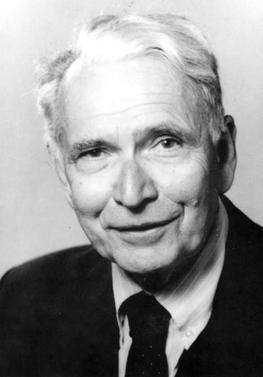
Erwin Chargaff was an Austro-Hungarian-born American biochemist, writer, Bucovinian Jew who emigrated to the United States during the Nazi era, and professor of biochemistry at Columbia University medical school. He wrote a well-reviewed autobiography, Heraclitean Fire: Sketches from a Life Before Nature.
Tinus Osendarp, Dutch runner (b. 1916) deaths

Martinus "Tinus" Bernardus Osendarp was a Dutch sprint runner.
Gina Cigna, French-Italian soprano (b. 1900) deaths

Gina Cigna was a French-Italian dramatic soprano.
Clifton Fadiman, American game show host, author, and critic (b. 1902) deaths

Clifton Paul "Kip" Fadiman was an American intellectual, author, editor, radio and television personality. He began his work with the radio, and switched to television later in his career.
Bálint Kopasz, Hungarian sprint canoeist births

Bálint Kopasz is a Hungarian sprint canoeist. He competed in the men's K-1 1000 metres event at the 2016 Summer Olympics. He won the same event in the 2020 Summer Olympics.
Cahit Külebi, Turkish poet and author (b. 1917) deaths

Cahit Külebi was a leading Turkish poet and author. He has an important place in contemporary Turkish poetry due to his attachment to folk poetry traditions. His poetry is enriched with simple yet ironic language, embellished with original descriptions.
Sam Bennett, Canadian ice hockey player births

Samuel Hunter Bennett is a Canadian professional ice hockey centre for the Florida Panthers of the National Hockey League (NHL). Bennett was rated by the NHL Central Scouting Bureau as the top North American prospect for the 2014 NHL Entry Draft, where he was selected fourth overall by the Calgary Flames. Bennett made his NHL debut in the 2014–15 season.
Caroline Weir, Scottish footballer births

Caroline Elspeth Lillias Weir is a Scottish professional footballer who plays as an attacking midfielder or forward for Spanish Primera División club Real Madrid CF and the Scotland women's national team.
Carol Zhao, Canadian tennis player births

Carol Zhao is a Canadian tennis player. She turned professional in June 2016 and was Canada's top singles player from June 11th, 2018 to July 23rd, 2018. She reached her highest WTA singles ranking of No. 131 on June 25th, 2018, and her career-high junior rank of No. 9 on January 1st, 2013. She won the Australian Open junior doubles title in 2013. Zhao was a member of the Stanford University tennis team, ending her college career with a 76–16 overall record and leading the team to win the 2016 NCAA championship. She also was the 2015 NCAA singles runner-up.
Emil Cioran, Romanian-French philosopher and educator (b. 1911) deaths

Emil Mihai Cioran was a Romanian philosopher, aphorist and essayist, who published works in both Romanian and French. His work has been noted for its pervasive philosophical pessimism, style, and aphorisms. His works frequently engaged with issues of suffering, decay, and nihilism. In 1937, Cioran moved to the Latin Quarter of Paris, which became his permanent residence, wherein he lived in seclusion with his partner, Simone Boué, until his death in 1995.
Leonard Williams, American football player births

Leonard Austin Williams is an American football defensive tackle for the New York Giants of the National Football League (NFL). He was drafted by the New York Jets with the sixth overall pick in the first round of the 2015 NFL Draft. He played college football at USC.
Kalidou Koulibaly, Senegalese footballer births

Kalidou Koulibaly is a professional footballer who plays as a centre-back for Premier League club Chelsea and the Senegal national team.
Rick ten Voorde, Dutch footballer births

Rick ten Voorde is a Dutch former footballer who played as a forward.
DeQuan Jones, American basketball player births

DeQuan Jones is an American professional basketball player for Nishinomiya Storks of the Japanese B.League. He played college basketball for the University of Miami.
Christopher Mintz-Plasse, American actor births
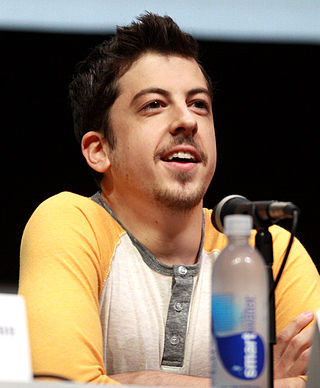
Christopher Charles Mintz-Plasse is an American actor and comedian. He has performed roles such as Fogell (McLovin) in Superbad (2007), Augie Farcques in Role Models (2008), and Chris D'Amico in Kick-Ass (2010) and its sequel Kick-Ass 2 (2013).
Javier Pastore, Argentinian footballer births

Javier Matías Pastore is an Argentine professional footballer who plays as an attacking midfielder for La Liga club Elche.
Terrelle Pryor, American football player births

Terrelle Pryor Sr. is a former American football wide receiver and quarterback. Considered the most recruited high school football-basketball athlete in southwestern Pennsylvania since Tom Clements, Pryor was widely regarded as the nation's top football prospect of 2008 and was named "Junior of the Year" by Rivals.com. Pryor had originally hoped to be a two-sport athlete, as he was also one of the nation's most recruited high school basketball players, but he later chose football.
A-fu, Taiwanese singer and songwriter births

Teng Fu-ju, known by her stage name A-FÜ, is a Taiwanese singer and songwriter. Prior to her solo debut in the music scene, A-FÜ was a member of Lazy Bomb, an indie band, and a demo singer. She is known for her cover version of "Nothin' on You" by B.o.B and Bruno Mars, which drew wide attention on YouTube in 2010. In May 2011, A-FÜ released her debut studio album, That's How It Is, for which she received a nomination for Best New Artist at the 23rd Golden Melody Awards.
Carsten Ball, Australian tennis player births

Carsten Thomas Ball is an American-Australian retired professional tennis player. Although born and based in the United States, Carsten has represented Australia on tour.
Asmir Begović, Bosnian footballer births

Asmir Begović is a Bosnian professional footballer who plays as a goalkeeper for Premier League club Everton.
Joseph Ebuya, Kenyan runner births

Joseph Ebuya is a Kenyan professional runner who specialises in the 5000 metres and was the 2010 IAAF World Cross Country Championships champion.
Dreama Walker, American actress births

Dreama Elyse Walker is an American actress. She is known for her supporting role in the series Gossip Girl, her lead role in the film Compliance (2012), and her lead roles in two short-lived television series, the comedy Don't Trust the B---- in Apartment 23 and the legal drama Doubt.
Saki Aibu, Japanese actress births
Saki Aibu is a Japanese actress. She is represented by Box Corporation.
Aurélien Chedjou, Cameroonian footballer births

Aurélien Bayard Chedjou Fongang is a Cameroonian former professional footballer who played as a centre back for LOSC Lille, Galatasaray, Bursaspor, Adana Demirspor and the Cameroon national team.
Matt Flynn, American football player births

Matthew Clayton Flynn is a former American football quarterback. He was drafted by the Green Bay Packers in the seventh round of the 2008 NFL Draft. He was a member of the Packers when they won Super Bowl XLV over the Pittsburgh Steelers. He played college football at Louisiana State University. Flynn also played for the Seattle Seahawks, Oakland Raiders, Buffalo Bills, New England Patriots, New York Jets, and New Orleans Saints.
Hassan Adams, American basketball player births
Hassan Olawale Adams is an American former professional basketball player. He played college basketball for Arizona.
Estelle Winwood, English actress (b. 1883) deaths

Estelle Winwood was an English actress who moved to the United States in mid-career and became celebrated for her wit and longevity.
Josh Childress, American basketball player births

Joshua Malik Childress is an American former professional basketball player. An All-EuroLeague Second Team member in 2010, he played with the Atlanta Hawks, Phoenix Suns, Brooklyn Nets and New Orleans Pelicans of the National Basketball Association (NBA), and Olympiacos Piraeus of the Greek Basket League and EuroLeague.
Darren Sproles, American football player births

Darren Lee Sproles is an American football executive and former running back and return specialist who is a personnel consultant for the Philadelphia Eagles of the National Football League (NFL). He played college football at Kansas State, where he is the all-time leading rusher, and was drafted by the San Diego Chargers in the fourth round of the 2005 NFL Draft. He also played for the New Orleans Saints and the Eagles. He was inducted into the College Football Hall of Fame in 2021.
Aleksei Berezutski, Russian footballer births

Aleksei Vladimirovich Berezutski is a Russian football coach and a former player who played as a centre-back.
Vasili Berezutski, Russian footballer births
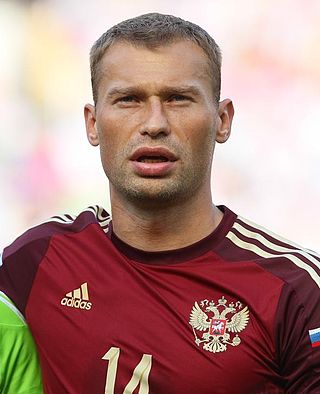
Vasiliy Vladimirovich Berezutski is a Russian football coach and a former player who played as a defender. He began his professional career in 1999 at the age of 17 with Torpedo Moscow, having graduated from their famed academy. He was a Russia national football team regular, earning his 100th cap on 6 September 2016 in a friendly against Ghana. He played as a fullback or centre-back and sometimes was also deployed as wingback or midfielder.
Example, English singer/rapper births

Elliot John Gleave, better known by his stage name Example, is an English musician, singer, songwriter, rapper and record producer. His name arose due to his initials being E.G., which is an abbreviation of the Latin phrase exempli gratia.
Brede Hangeland, Norwegian footballer births
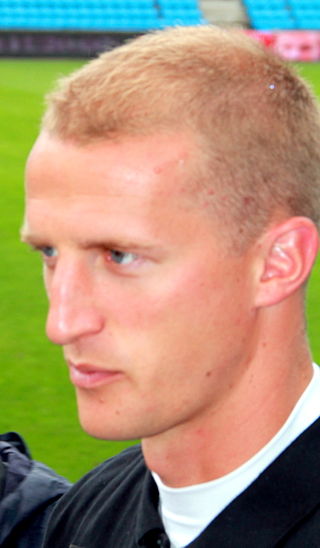
Brede Paulsen Hangeland is a Norwegian former professional footballer who played as a central defender.
Franco Semioli, Italian footballer births

Franco Semioli is an Italian football coach and former player. A midfielder, he played as a right winger.
Fabian Wegmann, German cyclist births

Fabian Wegmann is a German former professional road racing cyclist. Born in Münster, North Rhine-Westphalia, Wegmann currently resides in Freiburg im Breisgau, Baden-Württemberg, Germany.
Charles Howell III, American golfer births

Charles Gordon Howell III is an American professional golfer who currently plays on LIV Golf and formerly on the PGA Tour. He has been featured in the top 15 of the Official World Golf Ranking and ranked 9th on the PGA Tour money list in 2002. Known as one of the most consistent players on tour, he has garnered over 90 top-ten finishes in his career, earning about $42 million and has three PGA Tour victories, his most recent in 2018.
Frank Lampard, English footballer births

Frank James Lampard is an English professional football manager and former player who is the manager of Premier League club Everton. He is widely regarded as one of Chelsea’s greatest ever players, and one of the greatest midfielders of his generation. He has the record of the most goals by a midfielder in the Premier League and of scoring the highest number of goals from outside the box (41). He ranked highly on a number of statistics for Premier League players for the ten years from 1st December 2000, including most games and most wins.
Jan-Paul Saeijs, Dutch footballer births
Jan-Paul Frederik Daniel Saeijs is a Dutch former professional footballer who played as a defender.
Mark Robson, Canadian-American director and producer (b. 1913) deaths
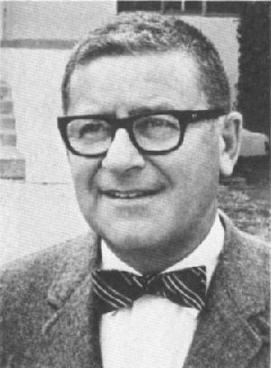
Mark Robson was a Canadian-American film director, producer, and editor. Robson began his 45-year career in Hollywood as a film editor. He later began working as a director and producer. He directed 34 films during his career, including Champion (1949), Bright Victory (1951), The Bridges at Toko-Ri (1954), Peyton Place (1957), The Inn of the Sixth Happiness (1958), Von Ryan's Express (1965), Valley of the Dolls (1967), and Earthquake (1974).
Gordan Giriček, Croatian basketball player births
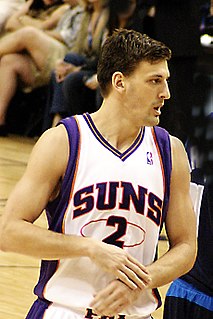
Gordan Giriček is a Croatian former professional basketball player. Standing at 6 ft 7 in (2.01 m), he played the shooting guard and small forward positions. Over eighteen years of professional basketball, he played in the NBA for several teams, including Memphis Grizzlies, Orlando Magic, Utah Jazz, Philadelphia 76ers, and the Phoenix Suns. He also played for several European teams, including Cibona, CSKA Moscow and Fenerbahçe.
Amos Lee, American singer-songwriter births

Amos Lee is an American singer-songwriter whose musical style encompasses folk, rock, and soul. He was born in Philadelphia and graduated from the University of South Carolina with a degree in English. After working as a schoolteacher and bartender he began to pursue a career in music. His manager Bill Eib, an artist manager and new artist development agent, submitted a demo recording to Blue Note Records which resulted in a recording contract and association with singer Norah Jones.
Juliano Belletti, Brazilian footballer births
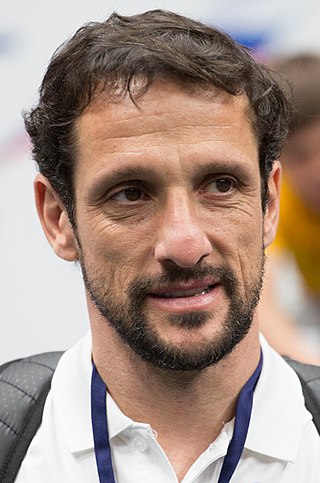
Juliano Haus Belletti is a Brazilian football coach and former player who mostly played as a right back. He is the current coach of São Paulo U21s.
Carlos Lee, Panamanian baseball player births

Carlos Noriel Lee, nicknamed "El Caballo", is a Panamanian former professional baseball first baseman and left fielder who played in Major League Baseball (MLB) from 1999–2012 with the Chicago White Sox, Milwaukee Brewers, Texas Rangers, Houston Astros and Miami Marlins. He had 17 career grand slams, ranking him seventh in MLB history ; his seven grand slams hit with the Astros is a club record.
Joan Balcells, Spanish tennis player births
Joan Manel Balcells Fornaguera is a retired professional tennis player from Spain. He won one ATP Tour singles title in his career and reached the final in Scottsdale in 2002 and the semifinals in 2000 Heineken Open losing to Michael Chang.
Daniel Zítka, Czech footballer births

Daniel Zítka is a Czech former professional footballer who played as a goalkeeper. He played three matches for the Czech Republic. He worked as a goalkeeper coach for AC Sparta Prague.
Suzanne Comhaire-Sylvain, Hatian anthropologist (b. 1898) deaths

Horace Lindrum, Australian snooker player (b. 1912) deaths
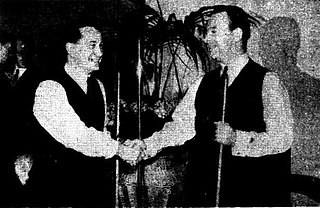
Horace Lindrum was an Australian professional snooker and billiards player. A dominant snooker player in Australia, he lived in Britain for long periods and played in the major British tournaments. From his arrival in Britain in 1935 he was regarded as the second best player in the world, behind Joe Davis. Lindrum contested three World Championship finals against Davis, in 1936, 1937 and 1946, losing all three to Davis but coming close to beating him on several occasions. Lindrum won the 1952 World Championship which, because of a dispute between the governing body and the players' association, was only contested by himself and New Zealander Clark McConachy.
Chino Moreno, American singer-songwriter births
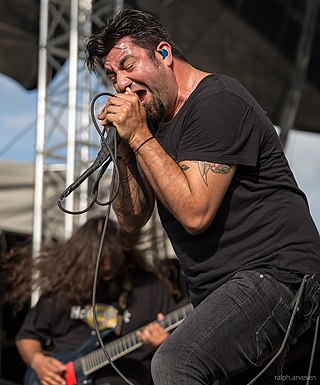
Chino Moreno is an American musician who is best known as the lead vocalist, primary lyricist and contributing guitarist of the metal band Deftones. He is also a member of the side-project groups Team Sleep, Crosses, Saudade and Palms.
Alexis Alexoudis, Greek footballer births
Alexis Alexoudis is a Greek former footballer. Alexoudis played most of his career for OFI Crete and Panathinaikos FC.
Rodney Rogers, American basketball player and coach births
Rodney Ray Rogers is an American former professional basketball player who played for several teams in the National Basketball Association (NBA).
Jeordie White, American singer-songwriter, guitarist, and bass player births

Jeordie Osbourne White, better known Twiggy Ramirez or simply Twiggy, is an American musician, mostly known as the former bassist and guitarist of the rock band Marilyn Manson. Previously, he was the bassist for A Perfect Circle and a touring member of Nine Inch Nails, and is currently the vocalist for Goon Moon. He left Marilyn Manson in 2002, later rejoined the band in 2008, and was dismissed in 2017. He has been a principal songwriter for the band and has also contributed to some of the Desert Sessions recordings. He also hosted the Hour of Goon podcast with fellow musician Fred Sablan, on the Starburns Audio network.
Andrea Nahles, German politician, German Minister of Labour and Social Affairs births

Andrea Maria Nahles is a former German politician who has been the director of the Federal Employment Agency (BA) since 2022.
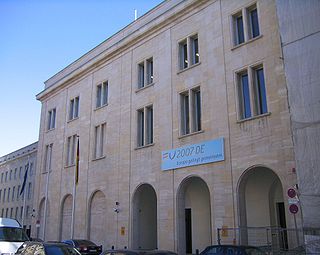
The Federal Ministry for Labour and Social Affairs, abbreviated BMAS) is a federal ministry of the Federal Republic of Germany headed by the Federal Minister of Labour and Social Affairs as a member of the Cabinet of Germany (Bundesregierung). Its first location is on Wilhelmstrasse in Berlin, the second in Bonn.
Athol Williams, South African poet and social philosopher births

Athol Williams is a South African poet, social philosopher and public intellectual.
Paulo Bento, Portuguese footballer and manager births

Paulo Jorge Gomes Bento is a Portuguese football manager and former player.
Misha Verbitsky, Russian mathematician and academic births

Misha Verbitsky is a Russian mathematician. He works at the Instituto Nacional de Matemática Pura e Aplicada in Rio de Janeiro. He is primarily known to the general public as a controversial critic, political activist and independent music publisher.
MaliVai Washington, American tennis player and sportscaster births

MaliVai "Mal" Washington is an American former professional tennis player. He reached the men's singles final at Wimbledon in 1996, won four ATP titles and achieved a career-high singles ranking of world No. 11 in October 1992.
Bishnu Prasad Rabha, Indian artist, painter, actor, dancer, writer, music composer and politician (b. 1909) deaths
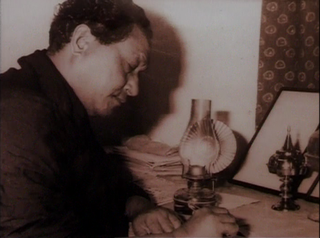
Bishnu Prasad Rabha was an Indian cultural figure from Assam, known for his contributions in the fields of music, dance, painting, literature as well as political activism. As an advocate of people's cultural movement, he drew heavily from different genres of classical and folk cultural traditions. Considered a doyen of the Culture of Assam, the Assamese people affectionately call him Kalaguru. He is also called by Marxists as Sainik Silpi for his active participation in the armed struggle, led by the Revolutionary Communist Party of India (RCPI).
Robert Rodriguez, American director, producer, and screenwriter births
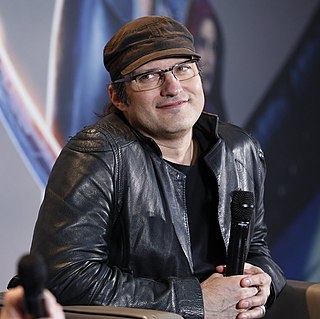
Robert Anthony Rodriguez is an American filmmaker, composer, and visual effects supervisor. He shoots, edits, produces, and scores many of his films in Mexico and in his home state of Texas. Rodriguez directed the 1992 action film El Mariachi, which was a commercial success after grossing $2.6 million against a budget of $7,000. The film spawned two sequels known collectively as the Mexico Trilogy: Desperado and Once Upon a Time in Mexico.
Nicole Kidman, American-Australian actress births
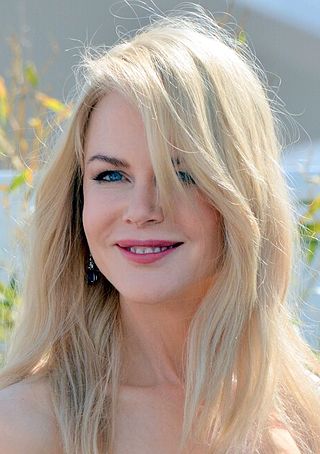
Nicole Mary Kidman is an American-Australian actress and producer. Known for her work across various film and television productions from several genres, she has consistently ranked among the world's highest-paid actresses. She is the recipient of numerous accolades, including an Academy Award, a British Academy Film Award, two Primetime Emmy Awards and six Golden Globe Awards.
Dan Tyminski, American singer-songwriter births
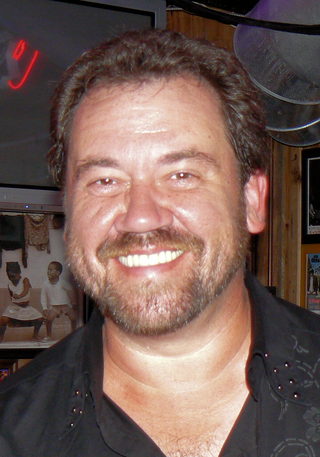
Daniel John Tyminski is an American bluegrass composer, vocalist, and instrumentalist. He is a member of Alison Krauss's band Union Station, and has released three solo albums, Carry Me Across the Mountain (2000), on the Doobie Shea Records label, Wheels (2008), on the Rounder Records label, and Southern Gothic (2017). on the Mercury Records label.
Boaz Yakin, American director, producer, and screenwriter births
Boaz Yakin is an Israeli-American screenwriter, film director, and producer based in New York City. He has written screenplays to films like The Rookie, Fresh, A Price Above Rubies, Prince of Persia: The Sands of Time, and Now You See Me, and has directed the 2000 sports drama Remember the Titans and the 2012 Jason Statham action film Safe. As a producer he has collaborated frequently with filmmaker Eli Roth and served as executive producer for the first two entries in the Hostel franchise.
Georges Lemaître, Belgian priest, physicist, and astronomer (b. 1894) deaths

Georges Henri Joseph Édouard Lemaître was a Belgian Catholic priest, theoretical physicist, mathematician, astronomer, and professor of physics at the Catholic University of Louvain. He was the first to theorize that the recession of nearby galaxies can be explained by an expanding universe, which was observationally confirmed soon afterwards by Edwin Hubble. He first derived "Hubble's law", now called the Hubble–Lemaître law by the IAU, and published the first estimation of the Hubble constant in 1927, two years before Hubble's article. Lemaître also proposed the "Big Bang theory" of the origin of the universe, calling it the "hypothesis of the primeval atom", and later calling it "the beginning of the world".
Bernard Baruch, American financier and politician (b. 1870) deaths

Bernard Mannes Baruch was an American financier and statesman.
Pierfrancesco Chili, Italian motorcycle racer births

Pierfrancesco 'Frankie' Chili, is a former motorcycle racer who competed in the Superbike World Championship and the 250 cc and 500 cc classes in Grand Prix. In September 2020 he confirmed he was suffering from Parkinson's disease.
Silke Möller, German runner births

Silke Möller is a German athlete, who in the 1980s competed for East Germany as one of the best female sprinters in the world. She was a member of the East German quartet that broke the world record in the 4 × 100 m relay at the World cup in Canberra on 6 October 1985. She and teammates Sabine Rieger, Marlies Göhr, and Ingrid Auerswald ran a time of 41.37 seconds, which stood as the world record until 2012. She is the 1987 World champion at both 100 metres and 200 metres.
Kirk Baptiste, American sprinter births
Kirk Baptiste was an American track and field athlete, who mainly competed in the 200 metres. He was born in Beaumont, Texas. He competed for the United States at the 1984 Summer Olympics held in Los Angeles, United States, where he won the silver medal in the 200 metres with a time of 19.96 seconds. This was the first time anyone had broken 20 seconds and come second in the race. He decided to forgo his final season of eligibility at the University of Houston after his successful junior year. Baptiste was diagnosed with HIV in the 1990s, spending a decade abusing drugs to escape. In 2006 he began treatment at "A Caring Safe Place" in Houston.
Mark Ovenden, British author and broadcaster births

Mark Ovenden F.R.G.S. is a broadcaster and author who specialises in the subjects of graphic design, cartography and architecture in public transport, with an emphasis on underground rapid transit.
Raphaël Salem, Greek-French mathematician and academic (b. 1898) deaths

Raphaël Salem was a Greek mathematician after whom are named the Salem numbers and Salem–Spencer sets and whose widow founded the Salem Prize.
Philip M. Parker, American economist and author births
Philip M. Parker holds the INSEAD Chair Professorship of Management Science at INSEAD. He has patented a method to automatically produce a set of similar books from a template which is filled with data from database and Internet searches. He claims that his programs have written more than 200,000 books. Parker publishes the automated books through Icon Group International, using several Icon group subheadings. Via EdgeMaven Media, he also provides applications for firms from different business domains to create their own computer-authored content material.
John Taylor, English singer-songwriter, bass player, and actor births

Nigel John Taylor is a British musician who is best known as the bass guitarist for new romantic band Duran Duran, of which he was a founding member. Duran Duran was one of the most popular bands in the world during the 1980s due in part to their music videos which played in heavy rotation in the early days of MTV. Taylor played with Duran Duran from its founding in 1978 until 1997, when he left to pursue a solo recording and film career. He recorded a dozen solo releases through his private record label B5 Records over the next four years, had a lead role in the movie Sugar Town, and made appearances in a half dozen other film projects. He rejoined Duran Duran for a reunion of the original five members of the group in 2001 and has remained with the group since.
Kelly Johnson, English hard rock guitarist and songwriter (d. 2007) births

Bernadette Jean "Kelly" Johnson was an English guitarist and singer, widely known in the UK in the early 1980s as the lead guitarist of the all-female rock band Girlschool.
Kurt Alder, German chemist and academic, Nobel Prize laureate (b. 1902) deaths

Kurt Alder was a German chemist and Nobel laureate.

The Nobel Prize in Chemistry is awarded annually by the Royal Swedish Academy of Sciences to scientists in the various fields of chemistry. It is one of the five Nobel Prizes established by the will of Alfred Nobel in 1895, awarded for outstanding contributions in chemistry, physics, literature, peace, and physiology or medicine. This award is administered by the Nobel Foundation, and awarded by the Royal Swedish Academy of Sciences on proposal of the Nobel Committee for Chemistry which consists of five members elected by the Academy. The award is presented in Stockholm at an annual ceremony on 10 December, the anniversary of Nobel's death.
Peter Reid, English footballer and manager births

Peter Reid is an English football manager, pundit and former player.
Sohn Suk-hee, South Korean newscaster births

Sohn Suk-hee is a former South Korean anchor and currently serving as general director and president of JTBC and JTBC Studios. He was also a former professor at Sungshin Women's University, Seoul, South Korea.
E. Lynn Harris, American author (d. 2009) births
E. Lynn Harris was an American author. Openly gay, he was best known for his depictions of African-American men who were on the down-low and closeted. He authored ten consecutive books that made The New York Times Best Seller list, making him among the most successful African-American or gay authors of his era.
Allan Lamb, South African-English cricketer and sportscaster births
Allan Joseph Lamb is a South African-born former English cricketer, who played for the first-class teams of Western Province and Northamptonshire. Making his Test debut in 1982, he was a fixture in the Test and One-Day International team for the next decade. He represented England at three World Cups. He served as captain of Northamptonshire, and also captained England in three Test matches.
Ilan Ramon, Israeli colonel, pilot, and astronaut (d. 2003) births

Ilan Ramon was an Israeli fighter pilot and later the first Israeli astronaut. Ramon was a Space Shuttle payload specialist of STS-107, the fatal mission of Columbia, in which he and the six other crew members were killed when the spacecraft disintegrated during re-entry. At 48, he was the oldest member of the crew. Ramon is the only foreign recipient of the United States Congressional Space Medal of Honor, which he was awarded posthumously.
Robert Crais, American author and screenwriter births

Robert Crais is an American author of detective fiction. Crais began his career writing scripts for television shows such as Hill Street Blues, Cagney & Lacey, Quincy, Miami Vice and L.A. Law. His writing is influenced by Raymond Chandler, Dashiell Hammett, Ernest Hemingway, Robert B. Parker and John Steinbeck. Crais has won numerous awards for his crime novels. Lee Child has cited him in interviews as one of his favourite American crime writers. The novels of Robert Crais have been published in 62 countries and are bestsellers around the world. Robert Crais received the Ross Macdonald Literary Award in 2006 and was named Grand Master by the Mystery Writers of America in 2014.
Raúl Ramírez, Mexican tennis player births

Raúl Ramírez is a Mexican retired professional tennis player. He was active during the 1970s and 1980s. Ramírez was the first player to finish first in both singles and doubles Grand Prix point standings, accomplishing the feat in 1976. He attended and played tennis at the University of Southern California in Los Angeles.
Willy Rampf, German engineer births
Willy Rampf is a German car engineer who is currently a technical consultant for Williams Racing and was the former technical director of the Sauber Formula One team.
John Goodman, American actor births

John Stephen Goodman is an American actor. He gained national fame for his role as the family patriarch Dan Conner in the ABC comedy series Roseanne, for which he received a Golden Globe Award, and its sequel series The Conners (2018–present).
Vikram Seth, Indian author and poet births

Vikram Seth is an Indian novelist and poet. He has written several novels and poetry books. He has won several awards such as Padma Shri, Sahitya Academy Award, Pravasi Bharatiya Samman, WH Smith Literary Award and Crossword Book Award. Seth's collections of poetry such as Mappings and Beastly Tales are notable contributions to the Indian English language poetry canon.
Luigi Fagioli, Italian race car driver (b. 1898) deaths
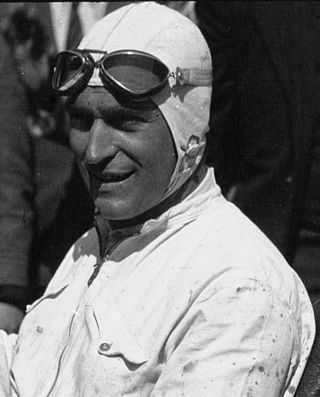
Luigi Cristiano Fagioli, nicknamed "the Abruzzi robber", was an Italian motor racing driver. Having won his last race at 53 years old, Fagioli holds the record for the oldest Formula One driver to win a race, and was the only winning Formula One driver born in the 19th century.
Tress MacNeille, American actress and voice artist births

Teressa Claire MacNeille is an American voice actress, whose credits include voicing Dot Warner on the animated television series Animaniacs, Babs Bunny on Tiny Toon Adventures, Chip and Gadget Hackwrench on Chip 'n Dale: Rescue Rangers, and Daisy Duck in various Disney media since 1999. She has also worked on animated series such as The Simpsons, Futurama, Rugrats, and Hey Arnold!
Sheila McLean, Scottish scholar and academic births
Sheila Ann Manson McLean is International Bar Association Professor of Law and Ethics in Medicine and director of the Institute of Law and Ethics in Medicine at the School of Law of the University of Glasgow. McLean is the Book Reviewers' Editor for Medical Law International.
Paul Muldoon, Irish poet and academic births

Paul Muldoon is an Irish poet. He has published more than thirty collections and won a Pulitzer Prize for Poetry and the T. S. Eliot Prize. At Princeton University he is currently both the Howard G. B. Clark '21 University Professor in the Humanities and Founding Chair of the Lewis Center for the Arts. He held the post of Oxford Professor of Poetry from 1999 to 2004 and has also served as president of the Poetry Society (UK) and Poetry Editor at The New Yorker.
Nouri al-Maliki, Iraqi politician, 76th Prime Minister of Iraq births

Nouri Kamil Muhammad-Hasan al-Maliki, also known as Jawad al-Maliki, is secretary-general of the Islamic Dawa Party and was the prime minister of Iraq from 2006 to 2014 and the vice president of Iraq from 2014 to 2015 and 2016 to 2018. Al-Maliki began his political career as a Shia dissident under Saddam Hussein's in the late 1970s and rose to prominence after he fled a death sentence into exile for 24 years. During his time abroad, he became a senior leader of the Islamic Dawa Party, coordinated the activities of anti-Saddam guerrillas and built relationships with Iranian and Syrian officials whose help he sought in overthrowing Saddam. Al-Maliki worked closely with United States and coalition forces in Iraq following their departure by the end of 2011.

The prime minister of Iraq is the head of government of Iraq. On 27 October 2022, Mohammed Shia' Al Sudani became the incumbent prime minister.
Gotabaya Rajapaksa, 8th president of Sri Lanka births

Lieutenant Colonel Nandasena Gotabaya Rajapaksa is a former Sri Lankan military officer and politician, who served as the eighth President of Sri Lanka from 18 November 2019 until his resignation on 14 July 2022. He previously served as Secretary to the Ministry of Defence and Urban Development from 2005 to 2015 under the administration of his elder brother former President Mahinda Rajapaksa, during the final phase of the Sri Lankan Civil War.
Lionel Richie, American singer-songwriter, pianist, producer, and actor births

Lionel Brockman Richie Jr. is an American singer, songwriter, record producer, and television personality. He rose to fame in the 1970s as a songwriter and the co-lead singer of funk band the Commodores; writing and recording the hit singles "Easy", "Sail On", "Three Times a Lady" and "Still", with the group before his departure. In 1980, he wrote and produced the US Billboard Hot 100 number one single "Lady" for Kenny Rogers. The following year, he wrote and produced the single "Endless Love", which he recorded as a duet with Diana Ross; it remains among the top 20 bestselling singles of all time, and the biggest career hit for both artists. In 1982, he officially launched his solo career with the album Lionel Richie, which sold over four million copies and spawned the singles "You Are", "My Love", and the number one single "Truly".
Cirilo Flores, American bishop (d. 2014) births

Cirilo B. Flores was an American prelate of the Roman Catholic Church who served as the bishop of the Diocese of San Diego in California, a position he held from September 18, 2013, until his death on September 6, 2014. He previously served as coadjutor bishop of San Diego from 2012 until 2013 and as auxiliary bishop of the Diocese of Orange from 2009 until 2012.
Alan Longmuir, Scottish bass player and songwriter (d. 2018) births
Alan Longmuir was a Scottish musician and a founding member of the 1970s pop group, the Bay City Rollers. He played the bass guitar in the band whilst his younger brother Derek Longmuir was drummer.
Ludwig Scotty, Nauruan politician, 10th President of Nauru births
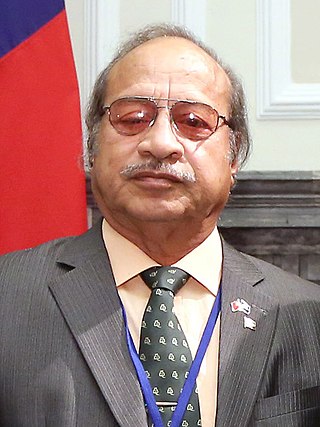
Ludwig Derangadage Scotty is a Nauruan politician who twice served as President of Nauru and was Speaker of Parliament five times between 2000 and 2016. He served as president from 29 May 2003 to 8 August 2003 and again from 22 July 2004 until his ousting in a vote of no confidence on 19 December 2007. He was elected as president in 2003, again from November 2010 to April 2013, and from June 2013 to June 2016.
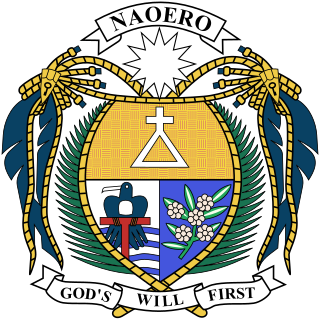
The president of Nauru is elected by Parliament from among its members, and is both the head of state and the head of government of Nauru. Nauru's unicameral Parliament has 19 members, with an electoral term of 3 years. Political parties only play a minor role in Nauru politics, and there have often been periods of instability in the Presidential office. Shifting allegiances among a small number of individuals can lead to frequent changes in the makeup of the government of the day, including the presidential position itself.
Dolores "LaLa" Brooks, American pop singer births

Dolores Brooks is the second lead singer of the girl group the Crystals. She is best known as the lead vocalist on the Crystals' hits "Then He Kissed Me" and "Da Doo Ron Ron".
Bugsy Siegel, American mobster (b. 1906) deaths

Benjamin "Bugsy" Siegel was an American mobster who was a driving force behind the development of the Las Vegas Strip. Siegel was not only influential within the Jewish Mob, but along with his childhood friend and fellow gangster Meyer Lansky, also held significant influence within the Italian-American Mafia and the largely Italian-Jewish National Crime Syndicate. Described as handsome and charismatic, he became one of the first front-page celebrity gangsters.
Xanana Gusmão, Timorese soldier and politician, 1st President of East Timor births

José Alexandre "Xanana" Gusmão is an East Timorese politician. A former rebel, he was the third President of the independent East Timor, serving from 2002 to 2007. He then became its fourth prime minister, serving from 2007 to 2015. Gusmão holds the office of Minister of Planning and Strategic Investment since stepping down as PM.

The president of the Democratic Republic of Timor Leste is the head of state of the Democratic Republic of Timor Leste. The executive powers of the president are limited however, the president is also the ex officio head of the Council of State, able to veto legislation and is the supreme commander of the Timor Leste Defence Force.
David Kazhdan, Russian-Israeli mathematician and academic births

David Kazhdan or Každan, Kazhdan, formerly named Dmitry Aleksandrovich Kazhdan, is a Soviet and Israeli mathematician known for work in representation theory. Kazhdan is a 1990 MacArthur Fellow.
Bob Vila, American television host births
Robert Joseph Vila is an American home improvement television show host known for This Old House (1979–1989), Bob Vila's Home Again (1990–2005), and Bob Vila (2005–2007).
André Watts, American pianist and educator births

André Watts is an American classical pianist and professor at the Jacobs School of Music of Indiana University. In 2020, he was elected to the American Philosophical Society.
Anne Murray, Canadian singer and guitarist births
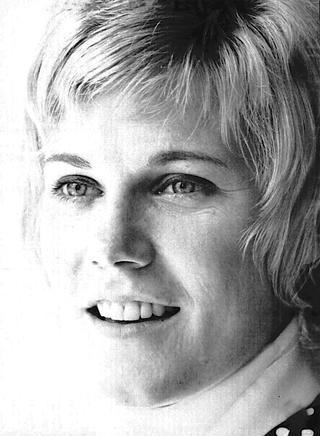
Morna Anne Murray is a retired Canadian singer. Her albums, consisting primarily of pop, country, and adult contemporary music, have sold over 55 million copies worldwide during her over 40-year career.
Bruno Frank, German author, poet, and playwright (b. 1878) deaths
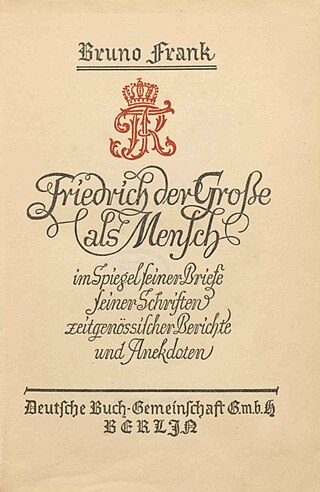
Bruno Frank was a German author, poet, playwright, screenwriter, and humanist.
Neil Trudinger, Australian mathematician and theorist births

Neil Sidney Trudinger is an Australian mathematician, known particularly for his work in the field of nonlinear elliptic partial differential equations.
Brian Wilson, American singer-songwriter and producer births

Brian Douglas Wilson is an American musician, singer, songwriter, and record producer who co-founded the Beach Boys. Often called a genius for his novel approaches to pop composition, extraordinary musical aptitude, and mastery of recording techniques, he is widely acknowledged as one of the most innovative and significant songwriters of the 20th century. His best-known work is distinguished for its high production values, complex harmonies and orchestrations, layered vocals, and introspective or ingenuous themes. Wilson is also known for his formerly high-ranged singing and for his lifelong struggles with mental illness.
Stephen Frears, English actor, director, and producer births

Stephen Arthur Frears is an English director and producer of film and television often depicting real life stories as well as projects that explore social class through sharply drawn characters. He's received numerous accolades including three BAFTA Awards, and a Primetime Emmy Award as well as nominations for two Academy Awards. In 2008, The Daily Telegraph named Frears among the 100 most influential people in British culture. In 2009 he received the Commandeur de l'Ordre des Arts et des Lettres.
Ulf Merbold, German physicist and astronaut births

Ulf Dietrich Merbold is a German physicist and astronaut who flew to space three times, becoming the first West German citizen in space and the first non-American to fly on a NASA spacecraft. Merbold flew on two Space Shuttle missions and on a Russian mission to the space station Mir, spending a total of 49 days in space.
Eugen Drewermann, German priest and theologian births

Eugen Drewermann is a German church critic, theologian, peace activist and former Catholic priest. His work has been translated into more than a dozen languages.
John Mahoney, English-born American actor (d. 2018) births

Charles John Mahoney was an English-born American actor. He was known for playing Martin Crane on the NBC sitcom Frasier (1993–2004), and won a Screen Actors Guild Award for the role in 2000. Mahoney started his career in Chicago as a member of the Steppenwolf Theatre Company alongside John Malkovich, Gary Sinise, and Laurie Metcalf. He received the Clarence Derwent Award as Most Promising Male Newcomer in 1986. Later that year, his performance in the Broadway revival of John Guare's The House of Blue Leaves earned him a Tony Award for Best Featured Actor in a Play.
Ramakant Desai, Indian cricketer (d. 1998) births
Ramakant Bhikaji Desai pronunciation (help·info) was an Indian cricketer who represented India in Test cricket as a fast bowler from 1959 to 1968.
Budge Rogers, English rugby player and manager births
Derek Prior "Budge" Rogers OBE, born in Bedford on 20 June 1939 and educated at Bedford School, is a former rugby union player who captained Bedford and played at international level for both England and the British Lions.
Joan Kirner, Australian educator and politician, 42nd Premier of Victoria (d. 2015) births

Joan Elizabeth Kirner was an Australian politician who was the 42nd Premier of Victoria, serving from 1990 to 1992. A Labor Party member of the Parliament of Victoria from 1982 to 1994, she was a member of the Legislative Council before later winning a seat in the Legislative Assembly. Kirner was a minister and briefly deputy premier in the government of John Cain Jr., and succeeded him as premier following his resignation. She was Australia's third female head of government and second female premier, Victoria's first, and held the position until her party was defeated in a landslide at the 1992 state election.

The premier of Victoria is the head of government in the Australian state of Victoria. The premier is appointed by the governor of Victoria, and is the leader of the political party able to secure a majority in the Victorian Legislative Assembly.
Mickie Most, English music producer (d. 2003) births
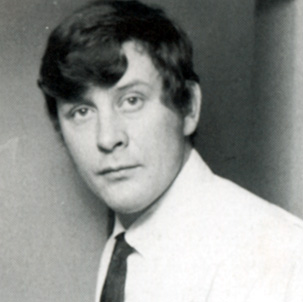
Michael Peter Hayes, known as Mickie Most, was an English record producer behind scores of hit singles for acts such as the Animals, Herman's Hermits, the Nashville Teens, Donovan, Lulu, Suzi Quatro, Hot Chocolate, Arrows, Racey, and the Jeff Beck Group, often issued on his own RAK Records label.
Stafford Dean, English actor and singer births
Stafford Dean is a British bass opera singer.
Jerry Keller, American singer-songwriter births
Jerry Paul Keller is an American pop singer and songwriter, best known for his 1959 hit song "Here Comes Summer".
Billy Guy, American singer (d. 2002) births

Billy Guy was an American singer, best known as a lead singer for the Coasters. He was inducted into the Rock and Roll Hall of Fame in 1987.
Enn Vetemaa, Estonian author and screenwriter (d. 2017) births

Enn Vetemaa was an Estonian writer sometimes referred to as a "forgotten classic", as well as "the unofficial master of the Estonian Modernist short novel".
Jim Barker, American politician (d. 2005) births

Jim L. Barker was a Democratic politician from the U.S. state of Oklahoma. He is the only state representative to serve four times as Speaker of the Oklahoma House of Representatives.
Len Dawson, American football player (d. 2022) births

Leonard Ray Dawson was an American football quarterback who played in the National Football League (NFL) and American Football League (AFL) for 19 seasons, primarily with the Kansas City Chiefs franchise. After playing college football at Purdue, Dawson began his professional career with the NFL in 1957, spending three seasons with the Pittsburgh Steelers and two with the Cleveland Browns. He left the NFL in 1962 to sign with the AFL's Chiefs, where he spent the last 14 seasons of his career, and rejoined the NFL after the AFL–NFL merger.
Armando Picchi, Italian footballer and coach (d. 1971) births

Armando Picchi was an Italian football player and coach. Regularly positioned as a libero, he captained the Internazionale side known as "La Grande Inter".
Wendy Craig, English actress births
Anne Gwendolyn "Wendy" Craig is an English actress who is best known for her appearances in the sitcoms Not in Front of the Children, ...And Mother Makes Three, ...And Mother Makes Five and Butterflies. She played the role of Matron in the TV series The Royal (2003–2011).
Danny Aiello, American actor (d. 2019) births

Daniel Louis Aiello Jr. was an American actor. He appeared in numerous motion pictures, including The Godfather Part II (1974), The Front (1976), Once Upon a Time in America (1984), Hide in Plain Sight (1984), The Purple Rose of Cairo (1985), Moonstruck (1987), Harlem Nights (1989), Do the Right Thing (1989), Jacob's Ladder (1990), Hudson Hawk (1991), Ruby (1992), Léon: The Professional (1994), 2 Days in the Valley (1996), Dinner Rush (2000), and Lucky Number Slevin (2006). He played Don Domenico Clericuzio in the miniseries The Last Don (1997).
Claire Tomalin, English journalist and author births
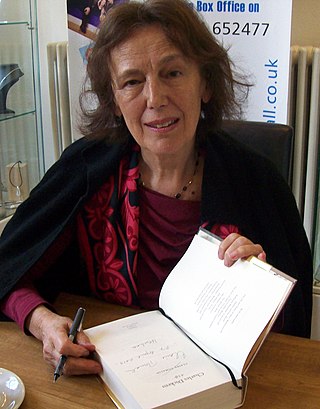
Claire Tomalin is an English journalist and biographer, known for her biographies of Charles Dickens, Thomas Hardy, Samuel Pepys, Jane Austen and Mary Wollstonecraft.
Robert Rozhdestvensky, Russian poet and author (d. 1994) births

Robert Ivanovich Rozhdestvensky was a Soviet-Russian poet and Songwriter who broke with socialist realism in the 1950s–1960s during the Khrushchev Thaw and, along with such poets as Andrey Voznesensky, Yevgeny Yevtushenko, and Bella Akhmadulina, pioneered a newer, fresher, and freer style of poetry in the Soviet Union.
Olympia Dukakis, American actress (d. 2021) births

Olympia Dukakis was an American actress. She performed in more than 130 stage productions, more than 60 films and in 50 television series. Best known as a screen actress, she started her career in theater. Not long after her arrival in New York City, she won an Obie Award for Best Actress in 1963 for her off-Broadway performance in Bertolt Brecht's Man Equals Man.
James Tolkan, American actor and director births

James Stewart Tolkan is an American actor. He is best known for his roles as Mr. Strickland in Back to the Future (1985) and Back to the Future Part II (1989), and as Marshall Strickland in Back to the Future Part III (1990). Other memorable film roles include Love and Death (1975), Top Gun (1986), Masters of the Universe (1987) and Dick Tracy (1990).
Magdalena Abakanowicz, Polish sculptor and academic (d. 2017) births
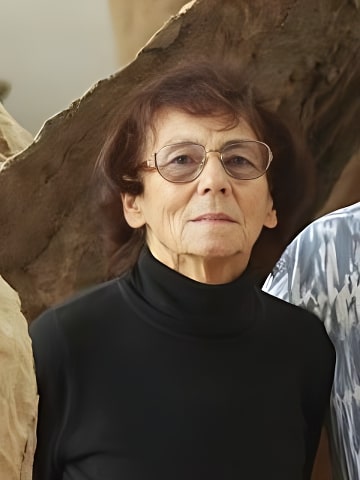
Marta Magdalena Abakanowicz-Kosmowska was a Polish sculptor and fiber artist. She was known for her use of textiles as a sculptural medium and her outdoor installations. She is widely regarded as one of Poland's most internationally acclaimed artists. She was a professor at the Academy of Fine Arts in Poznań, Poland, from 1965 to 1990 and a visiting professor at University of California, Los Angeles in 1984.
John Waine, English bishop (d. 2020) births
John Waine was Bishop of Chelmsford from 1986 to 1996; and previously Bishop of St Edmundsbury and Ipswich from 1978 to 1986, Bishop of Stafford, 1975–1978. He also served as Clerk of the Closet from 1989 to 1997, and in retirement served as a lay member on the Press Complaints Commission.
Edgar Bronfman, Sr., Canadian-American businessman and philanthropist (d. 2013) births
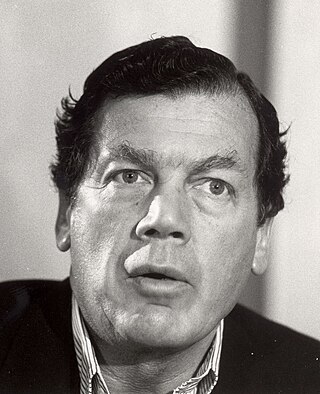
Edgar Miles Bronfman was a Canadian-American businessman. He worked for his family's distilled beverage firm, Seagram, eventually becoming president, treasurer and CEO. As president of the World Jewish Congress, Bronfman is especially remembered for initiating diplomacy with the Soviet Union, which resulted in legitimizing the Hebrew language in the USSR, and contributed to Soviet Jews being legally able to practice their own religion, as well as immigrate to Israel.
Anne Weale, English journalist and author (d. 2007) births
Jay Blakeney was a British writer and newspaper reporter, well known as a romance novelist under the pen names Anne Weale and Andrea Blake. She wrote over 88 books for Mills & Boon from 1955 to 2002. She died on 24 October 2007; at the time of her death she was writing her autobiography, 88 Heroes…1 Mr Right.
Edith Windsor, American lesbian, gay, bisexual and transgender rights activist (d. 2017) births

Edith "Edie" Windsor was an American LGBT rights activist and a technology manager at IBM. She was the lead plaintiff in the 2013 Supreme Court of the United States case United States v. Windsor, which overturned Section 3 of the Defense of Marriage Act and was considered a landmark legal victory for the same-sex marriage movement in the United States. The Obama administration and federal agencies extended rights, privileges and benefits to married same-sex couples because of the decision.
Emmanouil Benakis, Greek merchant and politician, 35th Mayor of Athens (b. 1843) deaths
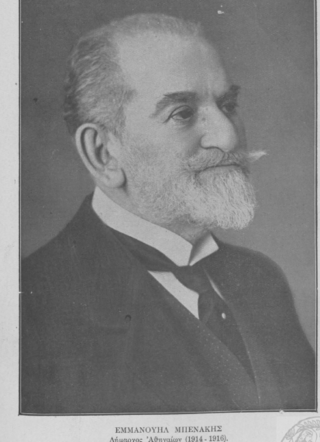
Emmanouil Benakis was a Greek merchant and politician, considered a national benefactor of Greece.

The Mayor of Athens is the head of the Municipality of Athens, the largest district of Athens.
Eric Dolphy, American saxophonist, flute player, and composer (d. 1964) births

Eric Allan Dolphy Jr. was an American jazz alto saxophonist, bass clarinetist and flautist. On a few occasions, he also played the clarinet and piccolo. Dolphy was one of several multi-instrumentalists to gain prominence in the same era. His use of the bass clarinet helped to establish the instrument within jazz. Dolphy extended the vocabulary and boundaries of the alto saxophone, and was among the earliest significant jazz flute soloists.
Martin Landau, American actor and producer (d. 2017) births

Martin James Landau was an American actor, acting coach, producer, and editorial cartoonist. His career began in the 1950s, with early film appearances including a supporting role in Alfred Hitchcock's North by Northwest (1959) opposite Cary Grant. He played regular roles in the television series Mission: Impossible (1966–1969) and Space: 1999 (1975–1977).
Jean-Marie Le Pen, French intelligence officer and politician births

Jean Louis Marie Le Pen is a French far-right politician who served as President of the National Front from 1972 to 2011. He also served as Honorary President of the National Front from 2011 to 2015.
Asrat Woldeyes, Ethiopian surgeon and educator (d. 1999) births
Asrat Woldeyes was an Ethiopian surgeon, a professor of medicine at Addis Ababa University, and the founder and leader of the All-Amhara People's Organization (AAPO). He was jailed by the Derg and later by the Ethiopian People's Revolutionary Democratic Front (EPRDF). After his death, The Guardian described him as "successively Ethiopia's most distinguished surgeon, physician and university dean, most controversial political party leader and best known political prisoner".
Simin Behbahani, Iranian poet and activist (d. 2014) births

Simin Behbahani, her surname also appears as Bihbahani was a prominent Iranian contemporary poet, lyricist and activist. She is known for her poems in a ghazal-style of poetic form. She was an icon of modern Persian poetry, Iranian intelligentsia and literati who affectionately refer to her as the lioness of Iran. She was nominated twice for the Nobel Prize in literature, and "received many literary accolades around the world."
Rehavam Ze'evi, Israeli general and politician, 9th Israeli Minister of Tourism (d. 2001) births

Rehavam Ze'evi was an Israeli general and politician who founded the right-wing nationalist Moledet party, mainly advocating population transfer.

The Ministry of Tourism is the Israeli government office responsible for tourism. The office was created in 1964, with Akiva Govrin being the first minister, but was appended to the Trade and Industry Ministry between 1977 and 1981. The logo for the Ministry depicts the Biblical Spies carrying fruit back from touring the Holy Land.
Doris Hart, American tennis player and educator (d. 2015) births

Doris Hart was an American tennis player from who was active in the 1940s and first half of the 1950s. She was ranked world No. 1 in 1951. She was the fourth player, and second woman, to win a Career Grand Slam in singles. She was the first of only three players to complete the career "Boxed Set" of Grand Slam titles, which is winning at least one title in singles, doubles, and mixed doubles at all four Grand Slam events. Only she and Margaret Court achieved this during the amateur era of the sport.
Audie Murphy, American lieutenant and actor, Medal of Honor recipient (d. 1971) births

Audie Leon Murphy was an American soldier, actor and songwriter. He was one of the most decorated American combat soldiers of World War II. He received every military combat award for valor available from the United States Army, as well as French and Belgian awards for heroism. Murphy received the Medal of Honor for valor that he demonstrated at the age of 19 for single-handedly holding off a company of German soldiers for an hour at the Colmar Pocket in France in January 1945, before leading a successful counterattack while wounded and out of ammunition.

The Medal of Honor (MOH) is the United States Armed Forces' highest military decoration and is awarded to recognize American soldiers, sailors, marines, airmen, guardians and coast guardsmen who have distinguished themselves by acts of valor. The medal is normally awarded by the president of the United States, but as it is presented "in the name of the United States Congress", it is sometimes erroneously referred to as the "Congressional Medal of Honor".
Josef Breuer, Austrian physician and psychologist (b. 1842) deaths

Josef Breuer was a distinguished physician who made key discoveries in neurophysiology, and whose work in the 1880s with his patient Bertha Pappenheim, known as Anna O., developed the talking cure and laid the foundation to psychoanalysis as developed by his protégé Sigmund Freud.
Chet Atkins, American singer-songwriter, guitarist, and producer (d. 2001) births

Chester Burton Atkins, known as "Mr. Guitar" and "The Country Gentleman", was an American musician who, along with Owen Bradley and Bob Ferguson, helped create the Nashville sound, the country music style which expanded its appeal to adult pop music fans. He was primarily a guitarist, but he also played the mandolin, fiddle, banjo, and ukulele, and occasionally sang.
Fritz Koenig, German sculptor and academic, designed The Sphere (d. 2017) births
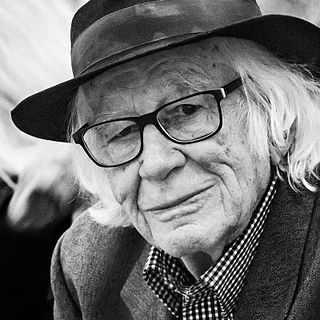
Fritz Koenig was one of the most important international German sculptors of the 20th century.

The Sphere is a monumental cast bronze sculpture by German artist Fritz Koenig (1924–2017).
Peter Gay, German-American historian, author, and academic (d. 2015) births

Peter Joachim Gay was a German-American historian, educator, and author. He was a Sterling Professor of History at Yale University and former director of the New York Public Library's Center for Scholars and Writers (1997–2003). He received the American Historical Association's (AHA) Award for Scholarly Distinction in 2004. He authored over 25 books, including The Enlightenment: An Interpretation, a two-volume award winner; Weimar Culture: The Outsider as Insider (1968), a bestseller; and the widely translated Freud: A Life for Our Time (1988).
Jerzy Nowak, Polish actor and educator (d. 2013) births

Jerzy Nowak was a Polish film and theatre actor and teacher.
Byron Farwell, American historian and author (d. 1999) births

Byron Edgar Farwell was an American military historian, biographer, and politician. He was the mayor of Hillsboro, Virginia, for three terms, worked for Chrysler, and as an author completed 14 books and numerous articles.
Pancho Segura, Ecuadorian tennis player (d. 2017) births

Francisco Olegario Segura, better known as Pancho "Segoo" Segura, was a leading tennis player of the 1940s and 1950s, both as an amateur and as a professional. He was born in Guayaquil, Ecuador, but moved to the United States in the late 1930s. Throughout his amateur career he was listed by the USTA as a "foreign" player resident in the U.S. As a professional player, he was referred to as the "Ecuadorian champ who now lives in New York City". After acquiring U.S. citizenship in 1991 at the age of seventy, Segura was a citizen of both countries, although he never represented the U.S. in tennis competition.
Danny Cedrone, American guitarist and bandleader (d. 1954) births
Donato Joseph "Danny" Cedrone was an American guitarist and bandleader, best known for his work with Bill Haley & His Comets on their epochal "Rock Around the Clock" in 1954.
Thomas Jefferson, American trumpet player (d. 1986) births
Thomas Jefferson was an American Dixieland jazz trumpeter, strongly influenced by Louis Armstrong.
George Lynch, American race car driver (d. 1997) births
George John Lynch, Sr. was an American race car driver.
Zoltán Sztáray, Hungarian-American author (d. 2011) births
Zoltán Sztáray was one of the better known contemporary writers of the Hungarian emigration. He was imprisoned in the Recsk labor camp for many months until he escaped and moved to the United States. He was born in Magyarcsaholy, Kingdom of Hungary, and died in Portland, Oregon.
Helena Rasiowa, Austrian-Polish mathematician and academic (d. 1994) births

Helena Rasiowa was a Polish mathematician. She worked in the foundations of mathematics and algebraic logic.
Jean-Jacques Bertrand, Canadian lawyer and politician, 21st Premier of Quebec (d. 1973) births

Jean-Jacques Bertrand was the 21st premier of Quebec, from October 2, 1968, to May 12, 1970. He led the Union Nationale party.

The premier of Quebec is the head of government of the Canadian province of Quebec. The current premier of Quebec is François Legault of the Coalition Avenir Québec, sworn in on October 18, 2018, following that year's election.
T. Texas Tyler, American country music singer-songwriter and guitarist (d. 1972) births

David Luke Myrick, known professionally as T. Texas Tyler, was an American country music singer and songwriter primarily known for his 1948 hit, "The Deck of Cards".
Dick Reynolds, Australian footballer and coach (d. 2002) births
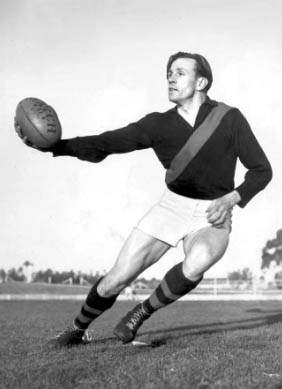
Richard Sylvannus Reynolds was an Australian rules footballer who played for the Essendon Football Club in the Victorian Football League (VFL).
Terence Young, Chinese-English director and screenwriter (d. 1994) births

Shaun Terence Young was a British film director and screenwriter who worked in the United Kingdom, Europe and Hollywood.
Gordon Juckes, Canadian ice hockey player (d. 1994) births
Gordon Wainwright Juckes was a Canadian ice hockey administrator. He served as the president and later the executive director of the Canadian Amateur Hockey Association (CAHA), and as a council member of the International Ice Hockey Federation. Juckes became involved in hockey as newspaper publisher and team president, then served as president of the Saskatchewan Amateur Hockey Association. During World War II he was a Major in the Royal Canadian Artillery, and was honoured with the Order of the British Empire.
Muazzez İlmiye Çığ, Turkish archaeologist and academic births

Muazzez İlmiye Çığ is a Turkish archaeologist and Assyriologist who specializes in the study of Sumerian civilization. She stirred controversy in the Muslim world and received world-wide media coverage in 2006 with her assertion - outlined in her book from the previous year - that the headscarf worn by Arab women did not originate in the Muslim world, but was actually worn five thousand years earlier by Sumerian priestesses as a means of initiating young men into sex.
Anthony Buckeridge, English author (d. 2004) births

Anthony Malcolm Buckeridge was an English author, best known for his Jennings and Rex Milligan series of children's books. He also wrote the 1953 children's book A Funny Thing Happened which was serialised more than once on Children's Hour.
Jack Torrance, American shot putter and football player (d. 1969) births

John Torrance was an American shot putter and American football player. Torrance broke the shot put world record several times in 1934, his eventual best mark of 17.40 m remaining unbeaten until 1948. At the 1936 Summer Olympics he placed fifth.
Geoffrey Baker, English Field Marshal and Chief of the General Staff of the British Army (d. 1980) births

Field Marshal Sir Geoffrey Harding Baker, was Chief of the General Staff, the professional head of the British Army, from 1968 to 1971. He served in the Second World War and became Director of Operations and Chief of Staff for the campaign against EOKA in Cyprus during the Cyprus Emergency and later in his career provided advice to the British Government on the deployment of troops to Northern Ireland at the start of the Troubles.

Field Marshal (FM) has been the highest rank in the British Army since 1736. A five-star rank with NATO code OF-10, it is equivalent to an Admiral of the Fleet in the Royal Navy or a Marshal of the Royal Air Force in the Royal Air Force (RAF). A Field Marshal's insignia consists of two crossed batons surrounded by yellow leaves below St Edward's Crown. Like Marshals of the RAF and Admirals of the Fleet, Field Marshals traditionally remain officers for life, though on half-pay when not in an appointment. The rank has been used sporadically throughout its history and was vacant during parts of the 18th and 19th centuries. After the Second World War, it became standard practice to appoint the Chief of the Imperial General Staff to the rank on his last day in the post. Army officers occupying the post of Chief of the Defence Staff, the professional head of all the British Armed Forces, were usually promoted to the rank upon their appointment.
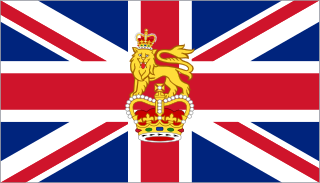
The Chief of the General Staff (CGS) has been the title of the professional head of the British Army since 1964. The CGS is a member of both the Chiefs of Staff Committee and the Army Board. Prior to 1964, the title was Chief of the Imperial General Staff (CIGS). Since 1959, the post has been immediately subordinate to the Chief of the Defence Staff, the post held by the professional head of the British Armed Forces.

The British Army is the principal land warfare force of the United Kingdom, a part of the British Armed Forces along with the Royal Navy and the Royal Air Force. As of 2022, the British Army comprises 79,380 regular full-time personnel, 4,090 Gurkhas, and 28,330 volunteer reserve personnel.
Gail Patrick, American actress (d. 1980) births

Gail Patrick was an American film actress and television producer. Often cast as the bad girl or the other woman, she appeared in more than 60 feature films between 1932 and 1948, notably My Man Godfrey (1936), Stage Door (1937), and My Favorite Wife (1940).
Josephine Johnson, American author and poet (d. 1990) births
Josephine Winslow Johnson was an American novelist, poet, and essayist. She won the Pulitzer Prize for Fiction in 1935 at age 24 for her first novel, Now in November. To this day she's the youngest person to win the Pulitzer for Fiction. Shortly thereafter, she published Winter Orchard, a collection of short stories that had previously appeared in The Atlantic Monthly, Vanity Fair, The St. Louis Review, and Hound & Horn. Of these stories, "Dark" won an O. Henry Award in 1934, and "John the Six" won an O. Henry Award third prize the following year. Johnson continued writing short stories and won three more O. Henry Awards: for "Alexander to the Park" (1942), "The Glass Pigeon" (1943), and "Night Flight" (1944).
Errol Flynn, Australian-American actor (d. 1959) births

Errol Leslie Thomson Flynn was an Australian-American actor who achieved worldwide fame during the Golden Age of Hollywood. He was known for his romantic swashbuckler roles, frequent partnerships with Olivia de Havilland, and reputation for his womanising and hedonistic personal life. His most notable roles include the eponymous hero in The Adventures of Robin Hood (1938), which was later named by the American Film Institute as the 18th greatest hero in American film history, the lead role in Captain Blood (1935), Major Geoffrey Vickers in The Charge of the Light Brigade (1936), and the hero in a number of Westerns such as Dodge City (1939), Santa Fe Trail (1940), and San Antonio (1945).
Friedrich Martens, Estonian-Russian historian, lawyer, and diplomat (b. 1845) deaths

Friedrich Fromhold Martens, or Friedrich Fromhold von Martens, was a diplomat and jurist in service of the Russian Empire who made important contributions to the science of international law. He represented Russia at the Hague Peace Conferences and helped to settle the first cases of international arbitration, notably the dispute between France and the United Kingdom over Newfoundland. As a scholar, he is probably best remembered today for having edited 15 volumes of Russian international treaties (1874–1909).
Billy Werber, American baseball player (d. 2009) births

William Murray Werber was a third baseman in Major League Baseball who played for the New York Yankees, Boston Red Sox (1933–1936), Philadelphia Athletics (1937–1938), Cincinnati Reds (1939–1941) and New York Giants (1942). He led American League third basemen in putouts and assists once each, and also led National League third basemen in assists, double plays and fielding percentage once each. A strong baserunner, he led the AL in stolen bases three times and led the NL in runs in 1939 as the Reds won the pennant. He was born in Berwyn Heights, Maryland and batted and threw right-handed.
Gus Schilling, American actor (d. 1957) births

August "Gus" Schilling was an American film actor who started in burlesque comedy and usually played nervous comic roles, often unbilled. A friend of Orson Welles, he appeared in five of the director's films — Citizen Kane, The Magnificent Ambersons, The Lady from Shanghai, Macbeth and Touch of Evil.
Jimmy Driftwood, American singer-songwriter and banjo player (d. 1998) births

James Corbitt Morris, known professionally as Jimmy Driftwood or Jimmie Driftwood, was an American folk music songwriter and musician, most famous for his songs "The Battle of New Orleans" and "Tennessee Stud". Driftwood wrote more than 6,000 folk songs, of which more than 300 were recorded by various musicians.
Bob King, American high jumper and obstetrician (d. 1965) births

Robert Wade King was an American athlete, who won a gold medal in the high jump at the 1928 Summer Olympics with a jump of 1.93 m. His personal best was 1.997 m, achieved earlier that year. After graduating from Stanford University, King studied in a medical school and later became a prominent obstetrician.
John Clayton Adams, English painter (b. 1840) deaths

John Clayton Adams or J. Clayton Adams was an English landscape artist.
Lillian Hellman, American playwright and screenwriter (d. 1984) births
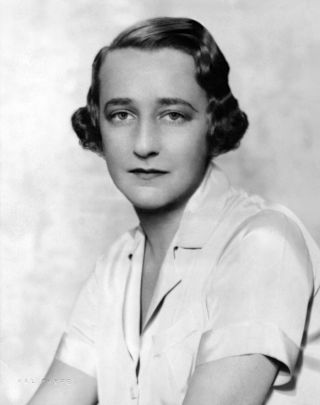
Lillian Florence Hellman was an American playwright, prose writer, memoirist and screenwriter known for her success on Broadway, as well as her communist sympathies and political activism. She was blacklisted after her appearance before the House Committee on Un-American Activities (HUAC) at the height of the anti-communist campaigns of 1947–1952. Although she continued to work on Broadway in the 1950s, her blacklisting by the American film industry caused a drop in her income. Many praised Hellman for refusing to answer questions by HUAC, but others believed, despite her denial, that she had belonged to the Communist Party.
Sam Rabin, English wrestler, sculptor, and singer (d. 1991) births
Samuel (Sam) Rabin, originally Samuel Rabinovitch, was an English sculptor, artist, teacher, singer, wrestler and Olympic bronze medalist.
Jean Moulin, French soldier and engineer (d. 1943) births

Jean Pierre Moulin was a French civil servant and resistant who served as the first President of the National Council of the Resistance during World War II from 27 May 1943 until his death less than two months later.
Elisabeth Hauptmann, German author and playwright (d. 1973) births
Elisabeth Hauptmann was a German writer who worked with fellow German playwright and director Bertolt Brecht.
Wilfrid Pelletier, Canadian pianist, composer, and conductor (d. 1982) births

Joseph Louis Wilfrid Pelletier, was a Canadian conductor, pianist, composer, and arts administrator. He was instrumental in establishing the Montreal Symphony Orchestra, serving as the orchestra's first artistic director and conductor from 1935 to 1941. He had a long and fruitful partnership with the Metropolitan Opera in New York City that began with his appointment as a rehearsal accompanist in 1917; ultimately working there as one of the company's conductors in mainly the French opera repertoire from 1929 to 1950. From 1951 to 1966 he was the principal conductor of the Orchestre Symphonique de Québec. He was also a featured conductor for a number of RCA Victor recordings, including an acclaimed reading of Gabriel Fauré's Requiem featuring baritone Mack Harrell and the Montreal Symphony Orchestra and chorus.
Lloyd Hall, American chemist and academic (d. 1971) births
Lloyd Augustus Hall was an American chemist, who contributed to the science of food preservation. By the end of his career, Hall had amassed 59 United States patents, and a number of his inventions were also patented in other countries.
Wilhelm Zaisser, German soldier and politician (d. 1958) births

Wilhelm Zaisser was a German communist politician and statesman who served as the founder and first Minister for State Security of the German Democratic Republic (1950–1953).
Giannina Arangi-Lombardi, Italian soprano (d. 1951) births
Giannina Arangi-Lombardi was a prominent spinto soprano, particularly associated with the Italian operatic repertory.
John A. Costello, Irish lawyer and politician, 3rd Taoiseach of Ireland (d. 1976) births

John Aloysius Costello was an Irish Fine Gael politician who served as Taoiseach from 1948 to 1951 and from 1954 to 1957, Leader of the Opposition from 1951 to 1954 and from 1957 to 1959, and Attorney General of Ireland from 1926 to 1932. He served as a Teachta Dála (TD) from 1933 to 1943 and from 1944 to 1969.

The Taoiseach is the head of government of Ireland. The office is appointed by the president of Ireland upon the nomination of Dáil Éireann and the office-holder must retain the support of a majority in the Dáil to remain in office.
John S. Paraskevopoulos, Greek-South African astronomer and academic (d. 1951) births
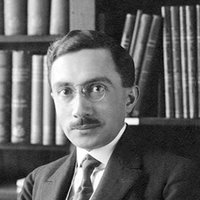
John Stefanos Paraskevopoulos also known as John Paras, was a Greek/South African astronomer. He was born in Piraeus, Greece and graduated from the University of Athens, where he obtained his PhD in Physics in 1910, under the supervision of Timoleon A. Argyropoulos. His thesis was entitled "Variability in absorption spectra". He served in the Greek army during the Balkan Wars and World War I. He work as an assistant of Prof. Demetrios Eginitis at the National Observatory of Athens, and in 1919, he went to the US with a two-year fellowship, spending part of that time working at Yerkes Observatory. There he met and married Dorothy W. Block. In 1921, he returned to Athens where he became head of the astronomy department of the National Observatory of Athens with a goal to built a large telescope in Greece. However, due to the war between Greece and Turkey during that period and the political instability that followed it soon became evident that the large telescope for the observatory would not materialise. So, in September 1923 Dr Paras accepted an offer from Dr Harlow Shapley, to become the Superintendent of the Harvard Observatory's Southern Station. He left this post due to a lack of funding and went to Arequipa, Peru to work at Boyden Station, a branch of Harvard Observatory, with a view to finding a more suitable location for it. The decision was made to move Boyden Station to South Africa due to better weather conditions, and Paraskevopoulos served there as director of Boyden Observatory in South Africa from 1927 to 1951. He co-discovered a couple of comets. The crater Paraskevopoulos on the Moon is named after him.
Johannes Zukertort, Polish-English chess player (b. 1842) deaths

Johannes Hermann Zukertort was a Polish chess master. He was one of the leading world players for most of the 1870s and 1880s, but lost to Wilhelm Steinitz in the World Chess Championship 1886, which is generally regarded as the first World Chess Championship match. He was also defeated by Steinitz in 1872 in an unofficial championship.
Kurt Schwitters, German painter and illustrator (d. 1948) births
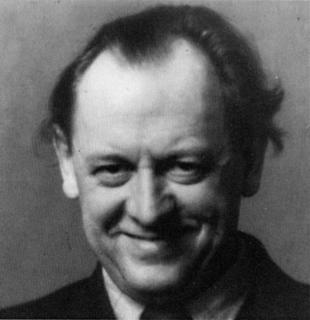
Kurt Hermann Eduard Karl Julius Schwitters was a German artist who was born in Hanover, Germany.
Andrzej Gawroński, Polish linguist and academic (d. 1927) births

Andrzej Gawroński was a Polish Indologist, linguist and polyglot. Professor of Jagiellonian University and Lwów University,, the author of the first Polish handbook on Sanskrit, founder of Polish Oriental Society (1922) and one of the founders of the Polish Linguistic Society (1925).
Mary R. Calvert, American astronomer and author (d. 1974) births
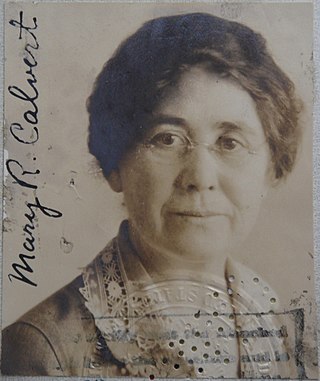
Mary Ross Calvert was an American astronomical computer and astrophotographer. She started as her uncle Edward Emerson Barnard's assistant and ended publishing his work that cataloged over 300 dark objects — primarily those that extinguish the most starlight reaching the earth lie between the bulk thus between the Local Arm and the Sagittarius Arm. She went on to publish other photographic works on astronomy.
Johannes Heinrich Schultz, German psychiatrist and psychotherapist (d. 1970) births
Johannes Heinrich Schultz was a German psychiatrist and an independent psychotherapist. Schultz became world-famous for the development of a system of self-hypnosis called autogenic training.
Daniel Sawyer, American golfer (d. 1937) births

Daniel Edward "Ned" Sawyer was an American golfer who competed in the 1904 Summer Olympics. In 1904 Sawyer was part of the American team that won the gold medal. He finished second in this competition. In the individual competition, he finished ninth in the qualification and was eliminated in the quarter-finals of the match play.
John Neal, American writer, critic, editor, lecturer, and activist (b. 1793) deaths

John Neal was an American writer, critic, editor, lecturer, and activist. Considered both eccentric and influential, he delivered speeches and published essays, novels, poems, and short stories between the 1810s and 1870s in the United States and Great Britain, championing American literary nationalism and regionalism in their earliest stages. Neal advanced the development of American art, fought for women's rights, advocated the end of slavery and racial prejudice, and helped establish the American gymnastics movement.
Reginald Punnett, English geneticist, statistician, and academic (d. 1967) births

Reginald Crundall Punnett FRS was a British geneticist who co-founded, with William Bateson, the Journal of Genetics in 1910. Punnett is probably best remembered today as the creator of the Punnett square, a tool still used by biologists to predict the probability of possible genotypes of offspring. His Mendelism (1905) is sometimes said to have been the first textbook on genetics; it was probably the first popular science book to introduce genetics to the public.
Joseph Meek, American police officer and politician (b. 1810) deaths

Joseph Lafayette "Joe" Meek was a pioneer, mountain man, law enforcement official, and politician in the Oregon Country and later Oregon Territory of the United States. A trapper involved in the fur trade before settling in the Tualatin Valley, Meek played a prominent role at the Champoeg Meetings of 1843, where he was elected a sheriff. He was later elected to and served in the Provisional Legislature of Oregon before being appointed as the United States Marshal for the Oregon Territory.
George Carpenter, American 5th General of The Salvation Army (d. 1948) births

George Lyndon Carpenter was the 5th General of The Salvation Army (1939–1946).

General is the title of the international leader and Chief Executive Officer (CEO) of the Salvation Army, a Christian denomination with extensive charitable social services that gives quasi-military rank to its ministers. The General is elected by the High Council of The Salvation Army and serves a term of five years, which may be extended to seven years. Brian Peddle, the current general, assumed the position in August 2018 upon the retirement of Andre Cox. The organisation's founder, William Booth, was the first and longest-serving general. There have been 21 generals as of 2018.
Élie Frédéric Forey, French general (b. 1804) deaths

Élie Frédéric Forey was a Marshal of France.
Georges Dufrénoy, French painter and academic (d. 1943) births
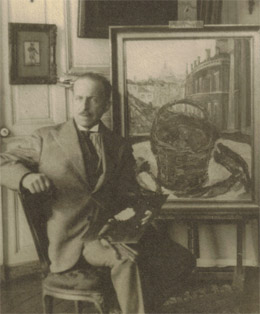
Georges Dufrénoy was a French post-Impressionist painter associated with Fauvism.
Jules de Goncourt, French historian and author (b. 1830) deaths

Jules Alfred Huot de Goncourt was a French writer, who published books together with his brother Edmond. Jules was born and died in Paris. His death at the age of 39 was at Auteuil-Neuilly-Passy of a stroke brought on by syphilis.
Laxmanrao Kirloskar, Indian businessman, founded the Kirloskar Group (d. 1956) births

Laxmanrao Kashinath Kirloskar was an Indian businessman. He was the founder of the Kirloskar Group.

Kirloskar Group is an Indian conglomerate, headquartered in Pune. The group exports to over 70 countries over most of Africa, Southeast Asia and Europe. The flagship and holding company, Kirloskar Brothers Ltd, established in 1888, is India's largest maker of pumps and valves. It was the manufacturer of India's first modern iron plough. One of the group companies is a major component supplier for the indigenous Arihant Nuclear Submarine program.
Hijikata Toshizō, Japanese commander (b. 1835) deaths
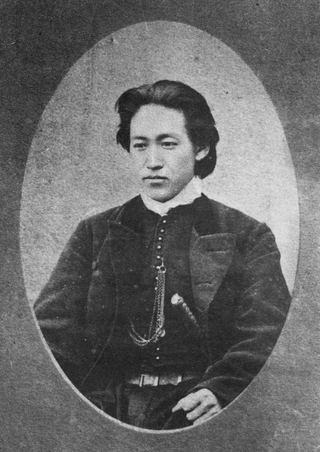
Hijikata Toshizō was a Japanese warrior. As Vice-Commander of the Shinsengumi, he resisted the Meiji Restoration and fought to his end.
Leon Wachholz, Polish scientist and medical examiner (d. 1942) births

Leon Jan Wachholz (Wacholz) (1867–1942) was a Polish scientist and medical examiner who researched and taught as a professor of forensic and social medicine at Jagiellonian University between 1896 and 1933 and published formative works on forensics.
James Burns, English cricketer (d. 1957) births
James Burns was an English cricketer. He played for Essex between 1890 and 1901.
George Redmayne Murray, English biologist and physician (d. 1939) births
George Redmayne Murray was an English physician who pioneered in the treatment of endocrine disorders. In 1891, he introduced the successful treatment of myxedema, with injections of sheep thyroid extract.
Frederick Gowland Hopkins, English biochemist and academic, Nobel Prize laureate (d. 1947) births
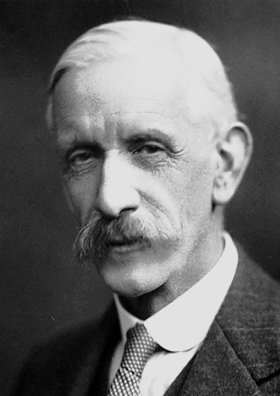
Sir Frederick Gowland Hopkins was an English biochemist who was awarded the Nobel Prize in Physiology or Medicine in 1929, with Christiaan Eijkman, for the discovery of vitamins, even though Casimir Funk, a Polish biochemist, is widely credited with discovering vitamins. He also discovered the amino acid tryptophan, in 1901. He was President of the Royal Society from 1930 to 1935.

The Nobel Prize in Physiology or Medicine is awarded yearly by the Nobel Assembly at the Karolinska Institute for outstanding discoveries in physiology or medicine. The Nobel Prize is not a single prize, but five separate prizes that, according to Alfred Nobel's 1895 will, are awarded "to those who, during the preceding year, have conferred the greatest benefit to humankind". Nobel Prizes are awarded in the fields of Physics, Chemistry, Physiology or Medicine, Literature, and Peace.
Alexander Winton, Scottish-American race car driver and engineer (d. 1932) births
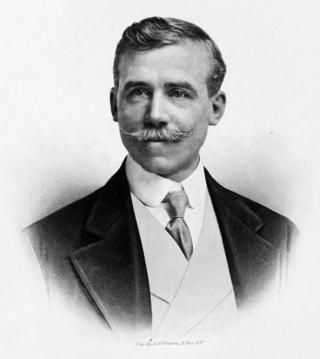
Alexander Winton was a Scottish-American bicycle, automobile, and diesel engine designer and inventor, as well as a businessman and racecar driver. Winton founded the Winton Motor Carriage Company in 1897 in Cleveland, Ohio, making the city an important hub of early automotive manufacturing. His pioneering achievements in the automotive industry included taking one of the first long-distance journeys in America by car and developing one of the first commercial diesel engines. Winton left the automotive manufacturing business when he liquidated his car company in 1924 to focus on his powertrain engineering firm, Winton Gas Engine & Mfg. Co., which he had established a dozen years earlier to focus on engine development. This business was later sold to General Motors in 1930 and became known as the Cleveland Diesel Engine Division. Winton passed away in 1932 and is buried in Cleveland's Lake View Cemetery.
Jack Worrall, Australian cricketer, footballer, and coach (d. 1937) births
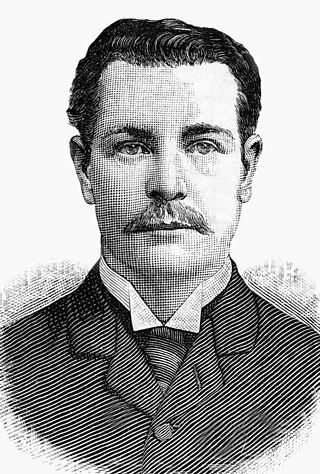
John Worrall was an Australian rules footballer who played for the Fitzroy Football Club in the VFA, and a Test cricketer. He was also a prominent coach in both sports and a journalist.
Christian von Ehrenfels, Austrian philosopher (d. 1932) births
Christian von Ehrenfels was an Austrian philosopher, and is known as one of the founders and precursors of Gestalt psychology.
Charles W. Chesnutt, American novelist and short story writer (d. 1932) births
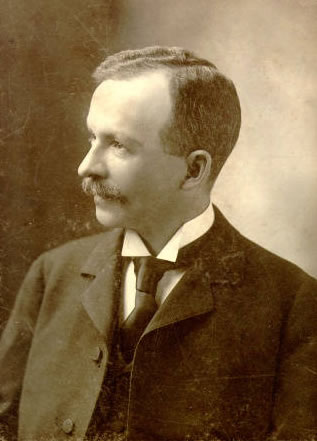
Charles Waddell Chesnutt was an American author, essayist, political activist and lawyer, best known for his novels and short stories exploring complex issues of racial and social identity in the post-Civil War South. Two of his books were adapted as silent films in 1926 and 1927 by the African-American director and producer Oscar Micheaux. Following the Civil Rights Movement during the 20th century, interest in the works of Chesnutt was revived. Several of his books were published in new editions, and he received formal recognition. A commemorative stamp was printed in 2008.
Richard Lodge, English historian and academic (d. 1936) births
Sir Richard Lodge was a British historian.
Gina Krog, Norwegian suffragist and women's rights activist (d. 1916) births
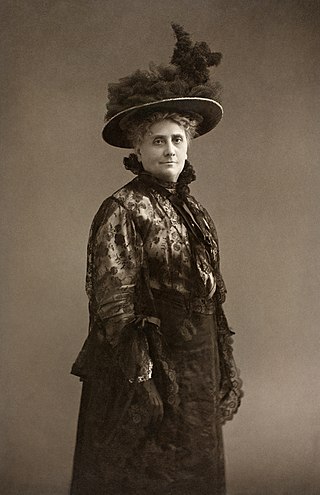
Jørgine Anna Sverdrup "Gina" Krog was a Norwegian suffragist, teacher, liberal politician, writer and editor, and a major figure in liberal feminism in Scandinavia.
Juan Larrea, Argentinian captain and politician (b. 1782) deaths

Juan Larrea was a Spanish businessman and politician in Buenos Aires during the early nineteenth century. He headed a military unit during the second British invasion of the Río de la Plata, and worked at the Buenos Aires Cabildo. He took part in the ill-fated Mutiny of Álzaga. Larrea and Domingo Matheu were the only two Spanish-born members of the Primera Junta, the first national government of Argentina.
Pierre Claude François Daunou, French historian and politician (b. 1761) deaths

Pierre Claude François Daunou was a French statesman of the French Revolution and Empire. An author and historian, he served as the nation's archivist under both the Empire and the Restoration, contributed a volume to the Histoire littéraire de la France, and published more than twenty volumes of lectures he delivered when he held the chair of history and ethics at the Collège de France.
William IV of the United Kingdom (b. 1765) deaths

William IV was King of the United Kingdom of Great Britain and Ireland and King of Hanover from 26 June 1830 until his death in 1837. The third son of George III, William succeeded his elder brother George IV, becoming the last king and penultimate monarch of Britain's House of Hanover.
Manuel Belgrano, Argentinian general, economist, and politician (b. 1770) deaths

Manuel José Joaquín del Corazón de Jesús Belgrano y González, usually referred to as Manuel Belgrano, was an Argentine public servant, economist, lawyer, politician, journalist, and military leader. He took part in the Argentine Wars of Independence and created the Flag of Argentina. He is regarded as one of the main Founder Fathers of the country.
Jacques Offenbach, German-French cellist and composer (d. 1880) births

Jacques Offenbach was a German-born French composer, cellist and impresario of the Romantic period. He is remembered for his nearly 100 operettas of the 1850s to the 1870s, and his uncompleted opera The Tales of Hoffmann. He was a powerful influence on later composers of the operetta genre, particularly Johann Strauss Jr. and Arthur Sullivan. His best-known works were continually revived during the 20th century, and many of his operettas continue to be staged in the 21st. The Tales of Hoffmann remains part of the standard opera repertory.
Guillaume Philibert Duhesme, French general (b. 1766) deaths
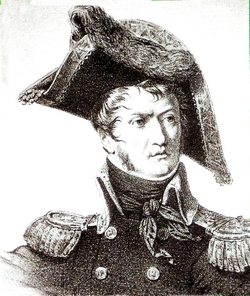
Guillaume Philibert, 1st Count Duhesme was a French general during the Napoleonic Wars.
Joseph Autran, French poet and author (d. 1877) births

Joseph Autran was a French poet.
Axel von Fersen the Younger, Swedish general and politician (b. 1755) deaths

Hans Axel von Fersen, known as Axel de Fersen in France, was a Swedish count, Marshal of the Realm of Sweden, a General of Horse in the Royal Swedish Army, one of the Lords of the Realm, aide-de-camp to Rochambeau in the American Revolutionary War, diplomat and statesman, and a friend of Queen Marie-Antoinette of France. He died at the hands of a Stockholm lynch mob.
Isaak August Dorner, German theologian and academic (d. 1884) births
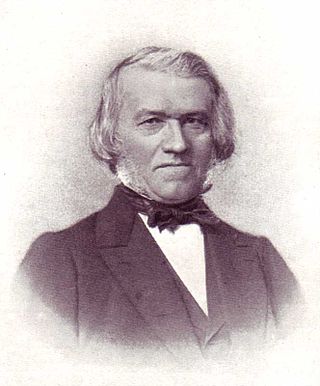
Isaak August Dorner was a German Lutheran church leader.
Samson Raphael Hirsch, German rabbi and scholar (d. 1888) births

Samson Raphael Hirsch was a German Orthodox rabbi best known as the intellectual founder of the Torah im Derech Eretz school of contemporary Orthodox Judaism. Occasionally termed neo-Orthodoxy, his philosophy, together with that of Azriel Hildesheimer, has had a considerable influence on the development of Orthodox Judaism.
Abraham Gotthelf Kästner, German mathematician and academic (b. 1719) deaths

Abraham Gotthelf Kästner was a German mathematician and epigrammatist.
Luigi Amat di San Filippo e Sorso, Italian cardinal (d. 1878) births

Luigi Amat di San Filippo e Sorso was the dean of the College of Cardinals during the last part of the record long reign of Pope Pius IX.
Carl Friedrich Abel, German viol player and composer (b. 1723) deaths

Carl Friedrich Abel was a German composer of the Classical era. He was a renowned player of the viola da gamba, and produced significant compositions for that instrument.

The viol, viola da gamba, or informally gamba, is any one of a family of bowed, fretted, and stringed instruments with hollow wooden bodies and pegboxes where the tension on the strings can be increased or decreased to adjust the pitch of each of the strings. Frets on the viol are usually made of gut, tied on the fingerboard around the instrument's neck, to enable the performer to stop the strings more cleanly. Frets improve consistency of intonation and lend the stopped notes a tone that better matches the open strings. Viols first appeared in Spain in the mid-to-late 15th century, and were most popular in the Renaissance and Baroque (1600–1750) periods. Early ancestors include the Arabic rebab and the medieval European vielle, but later, more direct possible ancestors include the Venetian viole and the 15th- and 16th-century Spanish vihuela, a six-course plucked instrument tuned like a lute that looked like but was quite distinct from the four-course guitar.
Marceline Desbordes-Valmore, French poet and author (d. 1859) births

Marceline Desbordes-Valmore was a French poet and novelist.
Jean Baptiste Gay, vicomte de Martignac, French politician, 7th Prime Minister of France (d. 1832) births

Jean-Baptiste Sylvère Gay, 1st Viscount of Martignac was a moderate royalist French statesman during the Bourbon Restoration 1814–30 under King Charles X.

The prime minister of France, officially the prime minister of the French Republic, is the head of government of the French Republic and the leader of the Council of Ministers.
Jean-Jacques Lartigue, Canadian bishop (d. 1840) births

Jean-Jacques Lartigue, S.S., was a Canadian Sulpician, who served as the first Catholic Bishop of Montreal.
Benjamin Huntsman, English businessman (b. 1704) deaths

Benjamin Huntsman was an English inventor and manufacturer of cast or crucible steel.
Thomas Douglas, 5th Earl of Selkirk, Scottish philanthropist and politician, Lord Lieutenant of Kirkcudbright (d. 1820) births

Thomas Douglas, 5th Earl of Selkirk FRS FRSE was a Scottish peer. He was noteworthy as a Scottish philanthropist who sponsored immigrant settlements in Canada at the Red River Colony.
This is a list of people who have served as Lord-Lieutenant of Kirkcudbright, part of the Dumfries and Galloway council area of south-west Scotland. Prior to 1975 the lieutenancy corresponded to the historic county of Kirkcudbrightshire. Since 1975 the lieutenancy area has been the slightly smaller Stewartry district, corresponding to the local government district of Stewartry established in 1975 and abolished in 1996. From 1975 until 1996 the title was the "Lord-Lieutenant for Dumfries and Galloway Region ". In 1996 the title was changed to "Lord-Lieutenant for the Stewartry of Kirkcudbright".George Stewart, 8th Earl of Galloway 5 November 1794 – 1803 John Stewart, 7th Earl of Galloway 28 June 1803 – 13 November 1806 Thomas Douglas, 5th Earl of Selkirk 24 March 1807 – 8 April 1820 George Stewart, 8th Earl of Galloway 10 June 1820 – 1828 Randolph Stewart, 9th Earl of Galloway 9 July 1828 – 1845 Dunbar James Douglas, 6th Earl of Selkirk 29 May 1845 – 11 April 1885 Marmaduke Constable-Maxwell, 11th Lord Herries of Terregles 26 May 1885 – 6 October 1908 Lt Col Robert Francis Dudgeon 9 November 1908 – 4 October 1932 Randolph Algernon Ronald Stewart, 12th Earl of Galloway 17 November 1932 – 1975 Col Gordon Guthrie Malcolm Bachelor 7 September 1975 – 16 November 1976 Walter John Macdonald Ross 1 February 1977 – 29 July 1982 Charles St Clair, 17th Lord Sinclair 24 November 1982 – 1989 Sir Michael Herries 26 July 1989 – 6 May 1995 Sir Norman Arthur 16 February 1996 – 2006 Sir Malcolm Ross 2 March 2006 – 27 October 2018 Elizabeth Patricia Gilroy 5 November 2018 – 2021 Matthew Murray Kennedy St Clair, 18th Lord Sinclair 29 July 2021 –
Hermann von Boyen, Prussian general and politician, Prussian Minister of War (d. 1848) births

Leopold Hermann Ludwig von Boyen was a Prussian army officer who helped to reform the Prussian Army in the early 19th century. He also served as minister of war of Prussia in the period 1810-1813 and later again from 1 March 1841 – 6 October 1847.

The Prussian War Ministry was gradually established between 1808 and 1809 as part of a series of reforms initiated by the Military Reorganization Commission created after the disastrous Treaties of Tilsit. The War Ministry was to help bring the Army under constitutional review, and, along with the General Staff systematize the conduct of warfare. Gerhard von Scharnhorst, the most prominent and influential of the reformers, served as acting war minister from roughly 1808 until 1810.
Moses Waddel, American minister and academic (d. 1840) births

Moses Waddel was an American educator and minister in antebellum Georgia and South Carolina. Famous as a teacher during his life, Moses Waddel was author of the bestselling book Memoirs of the Life of Miss Caroline Elizabeth Smelt.
Wolfe Tone, Irish rebel leader (d. 1798) births

Theobald Wolfe Tone, posthumously known as Wolfe Tone, was a leading Irish revolutionary figure and one of the founding members in Belfast and Dublin of the United Irishmen, a republican society determined to end British rule, and achieve accountable government, in Ireland. Throughout his political career, Tone was involved in a number of military engagements against the British navy. He was active in drawing Irish Catholics and Protestants together in the United cause, and in soliciting French assistance for a general insurrection. In November 1798, on his second attempt to land in Ireland with French troops and supplies, he was captured by British naval forces. The United Irish risings of the summer had already been crushed. Tone died in advance of his scheduled execution, probably, as modern scholars generally believe, by his own hand.
Jacob Hübner, German entomologist and author (d. 1826) births

Jacob Hübner was a German entomologist. He was the author of Sammlung Europäischer Schmetterlinge (1796–1805), a founding work of entomology.
Joseph Martin Kraus, German-Swedish composer and educator (d. 1792) births

Joseph Martin Kraus, was a German-Swedish composer in the Classical era who was born in Miltenberg am Main, Germany. He moved to Sweden at age 21, and died at the age of 36 in Stockholm. He has been referred to as "the Swedish Mozart", and had a life span very similar to Mozart's.
Amalie of Hesse-Darmstadt, princess of Baden (d. 1832) births
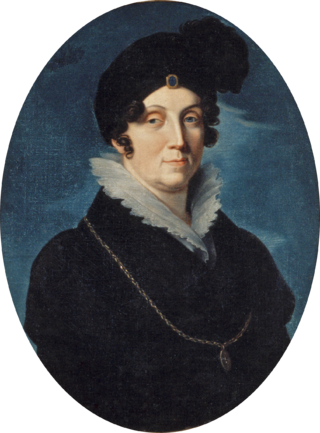
Princess Amalie of Hesse-Darmstadt was a Hereditary Princess of Baden by marriage to Charles Louis, Hereditary Prince of Baden. She was the daughter of Ludwig IX, Landgrave of Hesse-Darmstadt and Henriette Karoline of Palatine-Zweibrücken.
Tokugawa Ieharu, Japanese shōgun (d. 1786) births

Tokugawa Ieharu (徳川家治) was the tenth shōgun of the Tokugawa shogunate of Japan, who held office from 1760 to 1786.
(O.S.) Adam Ferguson, Scottish philosopher and historian (d. 1816) births

Old Style (O.S.) and New Style (N.S.) indicate dating systems before and after a calendar change, respectively. Usually, this is the change from the Julian calendar to the Gregorian calendar as enacted in various European countries between 1582 and 1923.
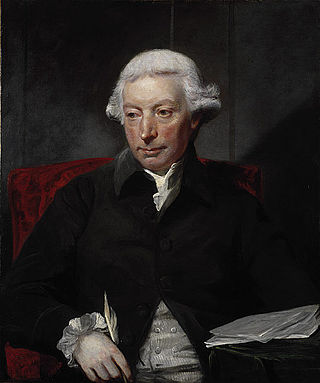
Adam Ferguson,, also known as Ferguson of Raith, was a Scottish philosopher and historian of the Scottish Enlightenment.
Jacques Saly, French sculptor and painter (d. 1776) births

Jacques François Joseph Saly, also known as Jacques Saly, French-born sculptor who worked in France, Italy and Malta. He is commonly associated with his time in Denmark he served as Director of the Royal Danish Academy of Art (1754–71). His most noteworthy work is the equestrian statue Frederik V on Horseback at Amalienborg.
Heinrich Roth, German missionary and scholar (b. 1620) deaths
Heinrich Roth was a missionary and pioneering Sanskrit scholar.
(O.S.) John George III, Elector of Saxony (d. 1691) births

Old Style (O.S.) and New Style (N.S.) indicate dating systems before and after a calendar change, respectively. Usually, this is the change from the Julian calendar to the Gregorian calendar as enacted in various European countries between 1582 and 1923.
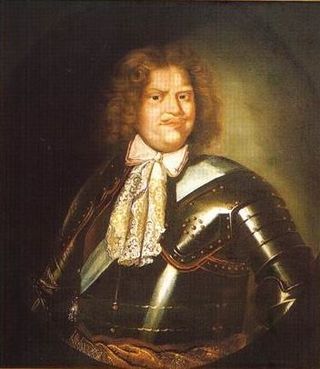
Johann George III was Elector of Saxony from 1680 to 1691. He belonged to the Albertine line of the House of Wettin.
(O.S.) George Hickes, English minister and scholar (d. 1715) births

Old Style (O.S.) and New Style (N.S.) indicate dating systems before and after a calendar change, respectively. Usually, this is the change from the Julian calendar to the Gregorian calendar as enacted in various European countries between 1582 and 1923.
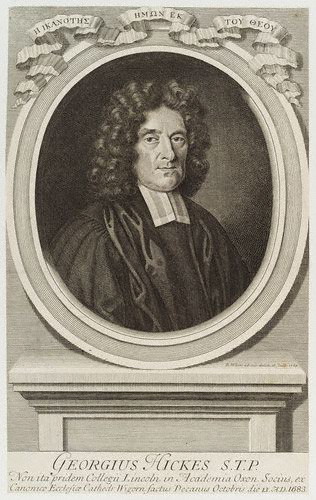
George Hickes was an English divine and scholar.
Charles Emmanuel II, duke of Savoy (d. 1675) births

Charles Emmanuel II ; 20 June 1634 – 12 June 1675) was Duke of Savoy from 1638 to 1675 and under regency of his mother Christine of France until 1648. He was also Marquis of Saluzzo, Count of Aosta, Geneva, Moriana and Nice, as well as claimant king of Cyprus, Jerusalem and Armenia. At his death in 1675 his second wife Marie Jeanne Baptiste of Savoy-Nemours acted as Regent for their nine-year-old son.
Feodor II of Russia (b. 1589) deaths

Fyodor II Borisovich Godunov was tsar of Russia during the spring of 1605, at the beginning of the Time of Troubles.
Willem Barentsz, Dutch cartographer and explorer (b. 1550) deaths

Willem Barentsz, anglicized as William Barents or Barentz, was a Dutch navigator, cartographer, and Arctic explorer.
Jacob De la Gardie, Swedish soldier and politician, Lord High Constable of Sweden (d. 1652) births

Field Marshal and Count Jacob Pontusson De la Gardie was a statesman and a soldier of the Swedish Empire, and a Marshal from 1620 onward.
The Lord High Constable was a prominent and influential office in Sweden, from the 13th century until 1676, excluding periods when the office was out of use. The office holder was a member of the Swedish Privy Council and, from 1630 and on, the head of the Swedish Council of War. From 1634, the Lord High Constable was one of five Great Officers of the Realm.
Sigismund III Vasa, Polish and Swedish king (d. 1632) births

Sigismund III Vasa was King of Poland and Grand Duke of Lithuania from 1587 to 1632 and, as Sigismund, King of Sweden and Grand Duke of Finland from 1592 to 1599. He was the first Polish sovereign from the House of Vasa. Religiously zealous, he imposed Roman Catholicism across the vast realm, and his crusades against neighbouring states marked Poland's largest territorial expansion. As an enlightened despot, he presided over an era of prosperity and achievement, further distinguished by the transfer of the country's capital from Kraków to Warsaw.
Gian Galeazzo Sforza, duke of Milan (d. 1494) births
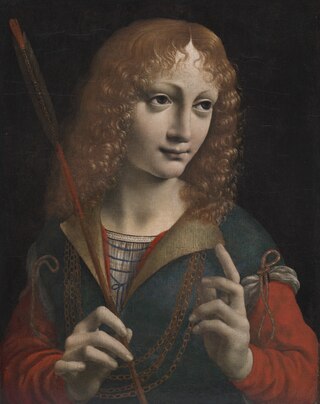
Gian Galeazzo Sforza, also known as Giovan Galeazzo Sforza, was the sixth Duke of Milan.
John of Lancaster, 1st Duke of Bedford, English statesman (d. 1435) births

John of Lancaster, Duke of Bedford KG was a medieval English prince, general and statesman who commanded England's armies in France during a critical phase of the Hundred Years' War. Bedford was the third son of King Henry IV of England, brother to Henry V, and acted as regent of France for his nephew Henry VI. Despite his military and administrative talent, the situation in France had severely deteriorated by the time of his death.
Margareta Ebner, German nun and mystic (b. 1291) deaths

Margareta Ebner was a German professed religious from the Dominican Nuns. Ebner – from 1311 – experienced a series of spiritual visions in which Jesus Christ gave her messages which she recorded in letters and a journal at the behest of her spiritual director; she was ill for well over a decade as she experienced these visions. The backdrop of much of Ebner's religious life was the bitter fighting between Pope John XXII and Holy Roman Emperor Louis the Bavarian, in which she and her convent faithfully backed Louis.
Mikhail of Vladimir, Russian prince deaths
Mikhalko Yuryevich, Prince of Torchesk (mid-1160s–1173), Vladimir and Suzdal (1175–1176) and Grand Prince of Kiev.
Ali az-Zahir, Fatimid caliph of Egypt (d. 1036) births

Abū al-Ḥasan ʿAlī ibn al-Ḥākim, better known with his regnal name al-Ẓāhir li-iʿzāz Dīn Allāh, was the seventh caliph of the Fatimid dynasty (1021–1036). Al-Zahir assumed the caliphate after the disappearance of his father al-Hakim bi-Amr Allah.
Adalbert, archbishop of Magdeburg deaths

Adalbert of Magdeburg, sometimes incorrectly shortened to "Albert", known as the Apostle of the Slavs, was the first Archbishop of Magdeburg and a successful missionary to the Polabian Slavs to the east of what is contemporarily Germany. He was later canonised and his liturgical feast day was assigned as 20 June.

The Archbishopric of Magdeburg was a Roman Catholic archdiocese (969–1552) and Prince-Archbishopric (1180–1680) of the Holy Roman Empire centered on the city of Magdeburg on the Elbe River.
Hucbald, Frankish monk and music theorist deaths

Hucbald was a Benedictine monk active as a music theorist, poet, composer, teacher, and hagiographer. He was long associated with Saint-Amand Abbey, so is often known as Hucbald of St Amand. Deeply influenced by Boethius' De Institutione Musica, Hucbald's (De) Musica, formerly known as De harmonica institutione, aims to reconcile ancient Greek music theory and the contemporary practice of Gregorian chant with the use of many notated examples. Among the leading music theorists of the Carolingian era, he was likely a near contemporary of Aurelian of Réôme, the unknown author of the Musica enchiriadis, and the anonymous authors of other music theory texts Commemoratio brevis, Alia musica, and De modis.
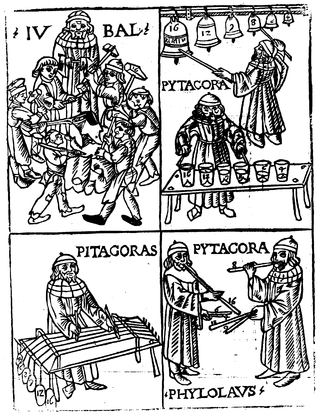
Music theory is the study of the practices and possibilities of music. The Oxford Companion to Music describes three interrelated uses of the term "music theory". The first is the "rudiments", that are needed to understand music notation ; the second is learning scholars' views on music from antiquity to the present; the third is a sub-topic of musicology that "seeks to define processes and general principles in music". The musicological approach to theory differs from music analysis "in that it takes as its starting-point not the individual work or performance but the fundamental materials from which it is built."
Louis the Pious, Carolingian emperor (b. 778) deaths

Louis the Pious, also called the Fair, and the Debonaire, was King of the Franks and co-emperor with his father, Charlemagne, from 813. He was also King of Aquitaine from 781. As the only surviving son of Charlemagne and Hildegard, he became the sole ruler of the Franks after his father's death in 814, a position which he held until his death, save for the period 833–34, during which he was deposed.
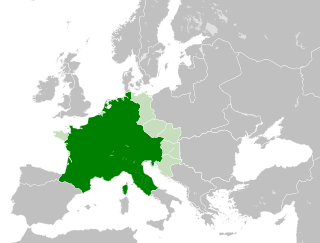
The Carolingian Empire (800–888) was a large Frankish-dominated empire in western and central Europe during the Early Middle Ages. It was ruled by the Carolingian dynasty, which had ruled as kings of the Franks since 751 and as kings of the Lombards in Italy from 774. In 800, the Frankish king Charlemagne was crowned emperor in Rome by Pope Leo III in an effort to transfer the Roman Empire from Byzantine Empire to Europe. The Carolingian Empire is considered the first phase in the history of the Holy Roman Empire.
Uthman ibn Affan, Rashidun caliph (b. 577) deaths
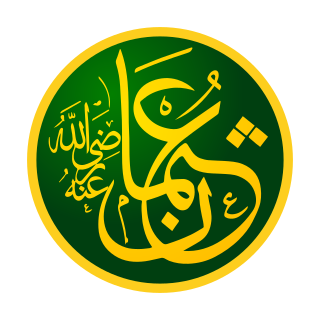
Uthman ibn Affan, also spelled by the Turkish and Persian rendering Osman, was a second cousin, son-in-law and notable companion of the Islamic prophet Muhammad, as well as the third of the Rāshidun, or "Rightly Guided Caliphs". Born into a prominent Meccan clan, Banu Umayya of the Quraysh tribe, he played a major role in early Islamic history, and is known for having ordered the compilation of the standard version of the Quran. When Caliph Umar ibn al-Khattab died in office aged 60/61 years, Uthman, aged 68–71 years, succeeded him and was the oldest to rule as Caliph.

The Rashidun Caliphate was the first caliphate to succeed the Islamic prophet Muhammad. It was ruled by the first four successive caliphs of Muhammad after his death in 632 CE. During its existence, the empire was the most powerful economic, cultural, and military force in West Asia.
Emperor Wencheng of Northern Wei (b. 440) deaths
Emperor Wencheng of Northern Wei ( 魏文成帝), Chinese name Tuoba Jun (拓拔濬), Xianbei name Wulei (烏雷), was an emperor of the Xianbei-led Northern Wei dynasty of China. He became emperor aged 12 in the aftermath of the eunuch Zong Ai's assassinations of his grandfather Emperor Taiwu and uncle Tuoba Yu, and he was generally described by historians as a ruler who sought foremost to allow his people to rest after his grandfather's expansionist policies and extensive campaigns, who also reformed the laws to become more lenient.
Christian feast day: Adalbert of Magdeburg

Adalbert of Magdeburg, sometimes incorrectly shortened to "Albert", known as the Apostle of the Slavs, was the first Archbishop of Magdeburg and a successful missionary to the Polabian Slavs to the east of what is contemporarily Germany. He was later canonised and his liturgical feast day was assigned as 20 June.
Christian feast day: Florentina

Florentina of Cartagena is venerated as a saint by the Catholic Church. Born towards the middle of the sixth century in Cartagena, Hispania, she and her family were actively engaged in furthering the best interests of Christianity.
Christian feast day: John of Matera

John of Matera or Mathera, also known as John of Pulsano was a Benedictine monk.
Christian feast day: Blessed Margareta Ebner

Margareta Ebner was a German professed religious from the Dominican Nuns. Ebner – from 1311 – experienced a series of spiritual visions in which Jesus Christ gave her messages which she recorded in letters and a journal at the behest of her spiritual director; she was ill for well over a decade as she experienced these visions. The backdrop of much of Ebner's religious life was the bitter fighting between Pope John XXII and Holy Roman Emperor Louis the Bavarian, in which she and her convent faithfully backed Louis.
Christian feast day: Methodius of Olympus

Saint Methodius of Olympus was an early Christian bishop, ecclesiastical author, and martyr. Today, he is honored as a saint and Church Father; the Catholic Church commemorates his feast on June 20.
Christian feast day: Pope Silverius
Pope Silverius was bishop of Rome from 8 June 536 to his deposition in 537, a few months before his death. His rapid rise to prominence from a deacon to the papacy coincided with the efforts of Ostrogothic king Theodahad, who intended to install a pro-Gothic candidate just before the Gothic War. Later deposed by Byzantine general Belisarius, he was tried and sent to exile on the desolated island of Palmarola, where he starved to death in 537.
Christian feast day: June 20 (Eastern Orthodox liturgics)

June 19 - Eastern Orthodox Church calendar - June 21
Day of the National Flag (Argentina)

The National Flag Day is the holiday dedicated to the Argentine flag and to the commemoration of its creator, Manuel Belgrano. It is celebrated on 20 June, the anniversary of Belgrano's death in 1820. This date was designated in 1938.
Earliest possible date for the summer solstice in the Northern hemisphere and the winter solstice in the Southern hemisphere, and its related observance: Earliest day on which Day of the Finnish Flag can fall, while June 26 is the latest; celebrated on Saturday of Midsummer's Day (Finland)

Flag flying days in Finland are days of the year when the national flag is flown nationwide, either by law or by custom. The flag of Finland is generally flown only on special occasions to celebrate or honour someone or something. On certain days of the year the state officially flies the flag, and recommends all private citizens to do so as well, these are the flag flying days as listed below. Any citizen has a right to fly the flag on their own property if they deem it appropriate, for example in celebration of birthdays or weddings in the family. Midsummer's day is additionally celebrated as Flag Day in Finland.
Earliest possible date for the summer solstice in the Northern hemisphere and the winter solstice in the Southern hemisphere, and its related observance: International Surfing Day (third Saturday in June, on or near Summer solstice)
International Surfing Day, held annually on the third Saturday of June, is an unofficial, environmentally conscious sports-centered holiday that celebrates the sport of surfing, surfing lifestyle, and the sustainability of ocean resources. Contests and prizes are also part of the celebration, with surfing-related industries donating prizes such as surfboards and wetsuits. Another purpose of the celebration is to promote the popularity of surfing and to attract new participants.

The summer solstice, also called the estival solstice or midsummer, occurs when one of Earth's poles has its maximum tilt toward the Sun. It happens twice yearly, once in each hemisphere. For that hemisphere, the summer solstice is the day with the longest period of daylight and shortest night of the year, when the Sun is at its highest position in the sky. Within the Arctic circle or Antarctic circle, there is continuous daylight around the summer solstice. The opposite event is the winter solstice.
Earliest possible date for the summer solstice in the Northern hemisphere and the winter solstice in the Southern hemisphere, and its related observance: Litha / Midsummer celebrations in the northern hemisphere, Yule in the southern hemisphere.
Midsummer is a celebration of the season of summer usually held at a date around the summer solstice. It has pagan pre-Christian roots in Europe.

Yule is a festival historically observed by the Germanic peoples. Scholars have connected the original celebrations of Yule to the Wild Hunt, the god Odin, and the pagan Anglo-Saxon Mōdraniht.
Gas Sector Day (Azerbaijan)

There are several public holidays in Azerbaijan. Public holidays were regulated in the constitution of the Azerbaijan SSR for the first time on 19 May 1921. They are now regulated by the Constitution of Azerbaijan.

Azerbaijan, officially the Republic of Azerbaijan, is a transcontinental country located at the boundary of Eastern Europe and Western Asia. It is a part of the South Caucasus region and is bounded by the Caspian Sea to the east, Russia to the north, Georgia to the northwest, Armenia and Turkey to the west, and Iran to the south. Baku is the capital and largest city.
Martyrs' Day (Eritrea)
There are approximately sixteen nationally recognized public holidays in Eritrea, a country in the Horn of Africa. The primary national holiday is Independence Day (24/05), Martyrs Day (20/06) and Revolution Day. Other commemorative public holidays include Fenkil Day—commemorating the Battle of Massawa and Afabet Day—commemorating the Battle of Afabet (20/03). Additional holidays follow the calendar of the Eritrean Orthodox Tewahedo Church and the two holy Eids Muslim holidays are observed as public holidays in Eritrea.
West Virginia Day (West Virginia)

West Virginia Day is a state holiday in the US state of West Virginia. Celebrated annually on June 20, the day celebrates the state's 1863 admission to the Union as a result of the secession of several northwestern counties of Virginia during the American Civil War.

West Virginia is a state in the Appalachian, Mid-Atlantic and Southeastern regions of the United States. It is bordered by Pennsylvania to the north and east, Maryland to the east and northeast, Virginia to the southeast, Kentucky to the southwest, and Ohio to the northwest. West Virginia is the 10th-smallest state by area and ranks as the 12th-least populous state, with a population of 1,793,716 residents. The capital and largest city is Charleston.
World Refugee Day (International)
World Refugee Day is an international day organised every year on 20 June by the United Nations. It is designed to celebrate and honour refugees from around the world. The day was first established on 20 June 2001, in recognition of the 50th anniversary of the 1951 Convention Relating to the Status of Refugees.
Lists of holidays by various categorizations.